

EVOLVING QUICK SERVICE FOR THE FUTURE CAVA CEO BRETT SCHULMAN THE GUIDE TO LANDING AN INVESTMENT Industry leaders give advice on what makes a brand fi nancially attractive. | P. 32 | AND FEATURING: Restaurant Equipment & Technology | P. 47 | ON ITS RISE TO THE TOP OF THE MEDITERRANEAN SEGMENT, CAVA KEEPS BEATING EXPECTATIONS AND WINNING OVER NEW GUESTS. | P. 18 | CAVA Chases Stardom


 DANNY KLEIN
DANNY KLEIN
16 WOMEN IN LEADERSHIP Broadway Comes to San Diego
A new operator is bringing Schmackary’s, the ‘official cookie of Broadway,’ to the West Coast.
42 FRANCHISE FORWARD Tackling Franchisee Bankruptcy
Some operators are facing tough times during a strenuous macroeconomic environment that won’t let up. BY SAM DANLEY
9 FRESH IDEAS Twisting the Pretzel Segment
The popular snack has become more than just a mall-based treat. BY SAM DANLEY
14 ONES TO WATCH Old School Bagel Cafe
Learn how the rising concept is bringing a taste of New York to Middle America. BY SATYNE DONER 46 START TO FINISH Geoff Henry
The Gong cha Americas leader discusses the chain’s rapid rise in the beverage segment.
More than a decade of
CAVA CEO Brett Schulman leads a team that’s relentless in its pursuit of innovation and growth.
PHOTOGRAPHY: CAVA / JARED SOARES
ON THE COVER
NEWS
DONER
BY SATYNE
INSIGHT
DEPARTMENTS QSR / LIMITED-SERVICE, UNLIMITED POSSIBILITIES TABLE OF CONTENTS JULY 2024 #317 FEATURES CAVA FRED + ELLIOTT 18 The Evolution of a Category Leader BY SAM DANLEY
public debut, and there’s plenty more to come. 26 The Power of Scale BY BEN COLEY Restaurant group leaders share best practices and advice on how to run a company covering several food concepts and personalities. 32 Invest and be Invested in BY
restaurant market has been volatile, quiet, and complex—somehow all at once—over the past year or so in COVID’s wake. Is stability ahead or more chaos? QSR is a registered trademark of WTWH Media, LLC. QSR is copyright © 2024 WTWH Media, LLC. All rights reserved. The opinions of columnists are their own. Publication of their writing does not imply endorsement by WTWH Media, LLC. Subscriptions (919) 945-0704. www.qsrmagazine.com/subscribe. QSR is provided without charge upon request to individuals residing in the U.S. meeting subscription criteria as set forth by the publisher. AAM member. All rights reserved. No part of this magazine may be reproduced in any fashion without the express written consent of WTWH Media, LLC. QSR (ISSN 1093-7994) is published monthly by WTWH Media, LLC, 1111 Superior Avenue Suite 2600, Cleveland, OH 44114. Periodicals postage paid at Cleveland, OH and at additional mailing offices. 18/ CAVA IS NOW OVER 300 UNITS NATIONWIDE AS ITS POPULARITY CONTINUES TO SOAR. July Restaurant Equipment & Technology P.47 2 BRANDED CONTENT 4 EDITOR’S LETTER 7 SHORT ORDER 64 ADVERTISER INDEX www.qsrmagazine.com | QSR | JULY 2024 1
growth set the stage for CAVA’s spectactular
The
BRAND STORIES FROM QSR




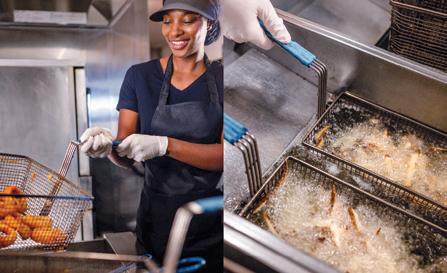
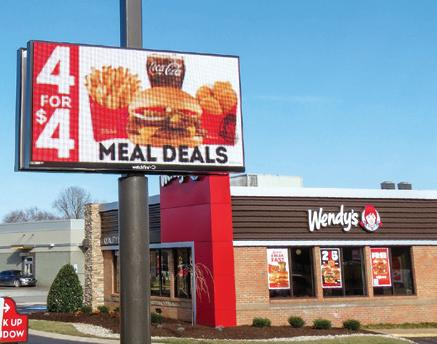

EDITORIAL
EDITORIAL DIRECTOR
Danny Klein dklein@wtwhmedia.com
QSR EDITOR Ben Coley bcoley@wtwhmedia.com


FSR EDITOR Callie Evergreen cevergreen@wtwhmedia.com
ASSOCIATE EDITOR Sam Danley sdanley@wtwhmedia.com
VICE PRESIDENT EDITORIALFOOD, RETAIL, & HOSPITALITY Greg Sanders gsanders@wtwhmedia.com
CONTENT STUDIO
VICE PRESIDENT, CONTENT STUDIO Peggy Carouthers pcarouthers@wtwhmedia.com
WRITER, CONTENT STUDIO Ya’el McLoud ymcloud@wtwhmedia.com
WRITER, CONTENT STUDIO Olivia Schuster oschuster@wtwhmedia.com
ART & PRODUCTION
SENIOR ART DIRECTOR Tory Bartelt tbartelt@wtwhmedia.com
FSR ART DIRECTOR Erica Naftolowitz enaftolowitz@wtwhmedia.com
SALES & BUSINESS DEVELOPMENT
VICE PRESIDENT SALESFOOD, RETAIL, & HOSPITALITY Lindsay Buck lbuck@wtwhmedia.com
VICE PRESIDENT, BUSINESS DEVELOPMENT Eugene Drezner edrezner@wtwhmedia.com 919-945-0705
NATIONAL SALES DIRECTOR Edward Richards erichards@wtwhmedia.com 216-956-6636
NATIONAL SALES DIRECTOR Amber Dobsovic adobsovic@wtwhmedia.com 757-637-8673
NATIONAL SALES MANAGER Mike Weinreich mweinreich@wtwhmedia.com 561-398-2686
CUSTOMER SERVICE REPRESENTATIVE Tracy Doubts tdoubts@wtwhmedia.com 919-945-0704
CUSTOMER SERVICE REPRESENTATIVE Brandy Pinion bpinion@wtwhmedia.com 662-234-5481, EXT 127 FOUNDER Webb C. Howell
ADMINISTRATION
919-945-0704 / www.qsrmagazine.com/subscribe
QSR is provided without charge upon request to



IN THIS ISSUE
BRANDED CONTENT
individuals residing in the U.S. who meet subscription criteria as set forth by the publisher. REPRINTS The YGS Group 800-290-5460 FAX : 717-825-2150 qsrmagazine@theygsgroup.com WTWH MEDIA LLC RETAIL, HOSPITALITY, AND FOOD GROUP 12 Why Franchisees Struggle with Their Media Presence
solution to inconsistencies in restaurant marketing. SPONSORED BY ANSIRA ANSIRA 48 The Future of Drive-Thru Signage Technology and How It Affects Revenue
fast-casual dining
continuing to think of ways to improve efficiency. SPONSORED BY DSA SIGNAGE 50 How the Biggest Fast Food Empires Handle Their Cash The simple strategy big brands are using to save hours of payroll every week. SPONSORED BY LOOMIS 52 Why Manual Inventory Counts Are a Thing of the Past Fast and accurate mobile AI computer vision counts improve efficiency while unlocking supply chain automation. SPONSORED BY NOMAD GO 54 Restaurant Tech: Why Operators Need a Full-Service Technology Partner The right partner keeps the focus on the customer experience, not technical difficulties. SPONSORED BY R.F. TECHNOLOGIES, INC. 56 Restaurant Technologies Helps Customers “Control the Kitchen Chaos” Automated kitchen solutions can help drive efficiency and cost savings. SPONSORED BY RTI 58 Ensuring Operational Excellence The key to minimizing downtime and maximizing profits. SPONSORED BY TAYLOR COMPANY 60 Transforming QuickService Restaurants with UPM Raflatac OptiCut Linerless Labels Unveiling OptiCut technology: performance and sustainability. SPONSORED BY UPM RAFLATAC 62 Advancing Signage: The Crucial Role of Digital Reader Boards in Quick-Service Restaurants Transitioning from manual to digital signage offers major advantages. SPONSORED BY WATCHFIRE SIGNS 47 Restaurant Equipment & Technology / July 2024 As restaurants continue to combat new challenges, here are some of the companies and vendors offering solutions. 48 DSA SIGNAGE 50 LOOMIS Old wisdom has noted that the restaurant industry was slow to adapt to certain technologies. The digitization of, well, everything was a slow and steady process playing out during the 2000s and 2010s. New equipment, technology, and digital solutions were rolled out fast and furious, all with the aim of helping restaurants become more efficient. Restaurant Equipment & Technology JULY / 2024 52 NOMAD GO 54 R.F. TECHNOLOGIES, INC. 56 RESTAURANT TECHNOLOGIES 58 TAYLOR COMPANY 60 UPM RAFLATAC 62 WATCHFIRE LOOMIS ISTOCK.COM RESTAURANT TECHNOLOGIES UPM RAFLATAC WATCHFIRE 2 JULY 2024 | QSR | www.qsrmagazine.com
A
How
is




Value Hunting is Much Harder These Days
Quick-service chains keep raising menu prices, and guests are reacting negatively.
With consumers facing inflation everywhere they turn, restaurants are being cut from people’s list of purchases at a growing rate.

In May, Popmenu released a nationwide survey of 1,000 U.S. consumers that found 30 percent of their individual or family food budget was spent on restaurants each month, down from 40 percent in May 2022. About 38 percent said they are spending the same or more on restaurant meals compared to last year, but are tipping less. But it’s not as if customers are doing this because they want to. In the same study, 64 percent said they would order at a restaurant every day if they could manage it, but inflation makes that an impossible task for many.
And the mom-and-pop dining concepts aren’t the only ones feeling this pullback. The likes of McDonald’s, Wendy’s, and others have shared how they’re seeing sluggish traffic from lower-income consumers. It’s quite remarkable how fastfood prices have changed compared to a decade ago.
You can’t blame customers for having second thoughts about spending their dollars at a fast-food restaurant. These concepts are highly associated with value, and if that’s not part of the deal anymore, then what’s really the point?
Fast-food chains have sensed this boiling point from consumers and are trying to respond accordingly. Domino’s has its Emergency Pizza deal, which is essentially a repackaged BOGO offer. Wendy’s has its $5 Biggie Bag and its 2 for $3 Biggie Bundles for breakfast. And McDonald’s, the largest player in the U.S. quick-service space in terms of systemwide sales, is attempting to rope customers back in with a $5 value platform
available nationwide. Customers will get either a McChicken, McDouble, or fourpiece chicken nuggets, along with fries and a drink. Shortly after McDonald’s unveiled its value news, Burger King responded with a $5 package of its own; guests will have a choice of one of three sandwiches with nuggets, fries, and a drink. The fast-food giant also said it was testing two other value deals that could come in the latter half of 2024. This is the new reality for the fast-food segment.
In other cases, brands are attempting to showcase their value in ways other than price point, like higher-quality service, efficient operations, and distinct menu innovation. This is especially true of fast casuals that can’t really compete with fastfood chains on these lower-priced value offers ( i.e. Portillo’s, Shake Shack ).
Quick-service operators will have to tread carefully because if this inflation issue persists, they’ll not only lose share to at-home occasions, but also to the casual-dining industry. Yes, the full-service segment, which is typically known for higher prices in exchange for more in-depth service. But not anymore. Chili’s 3 for Me national value platform starts at $10.99 and includes an appetizer, entrée, and drink for $10.99. Not many chains can compete with that. And Chili’s knows this; that’s why it released a new Big Smasher burger that resembles the Big Mac. The chain is not afraid to take shots because it knows quick-service is vulnerable.
Here’s hoping our wallets will eventually get a break.
Ben Coley, Editor
BCOLEY@WTWHMEDIA.COM QSR MAGAZINE
4 JULY 2024 | QSR | www.qsrmagazine.com EDITOR’S LETTER



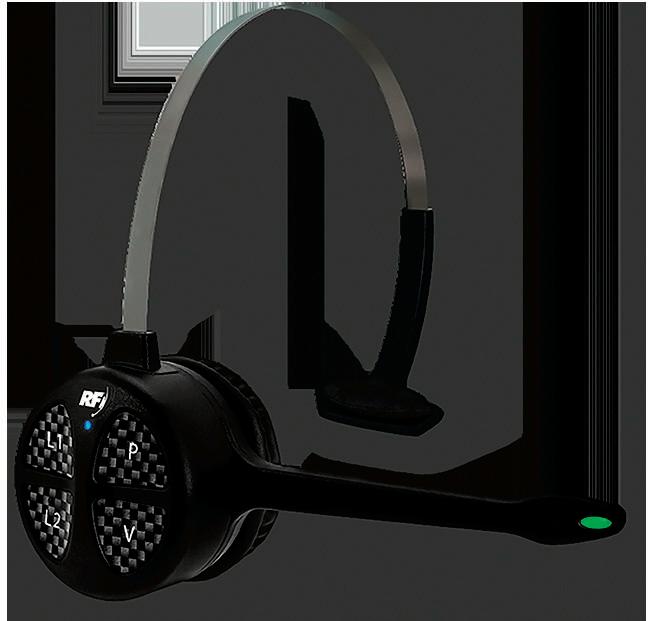


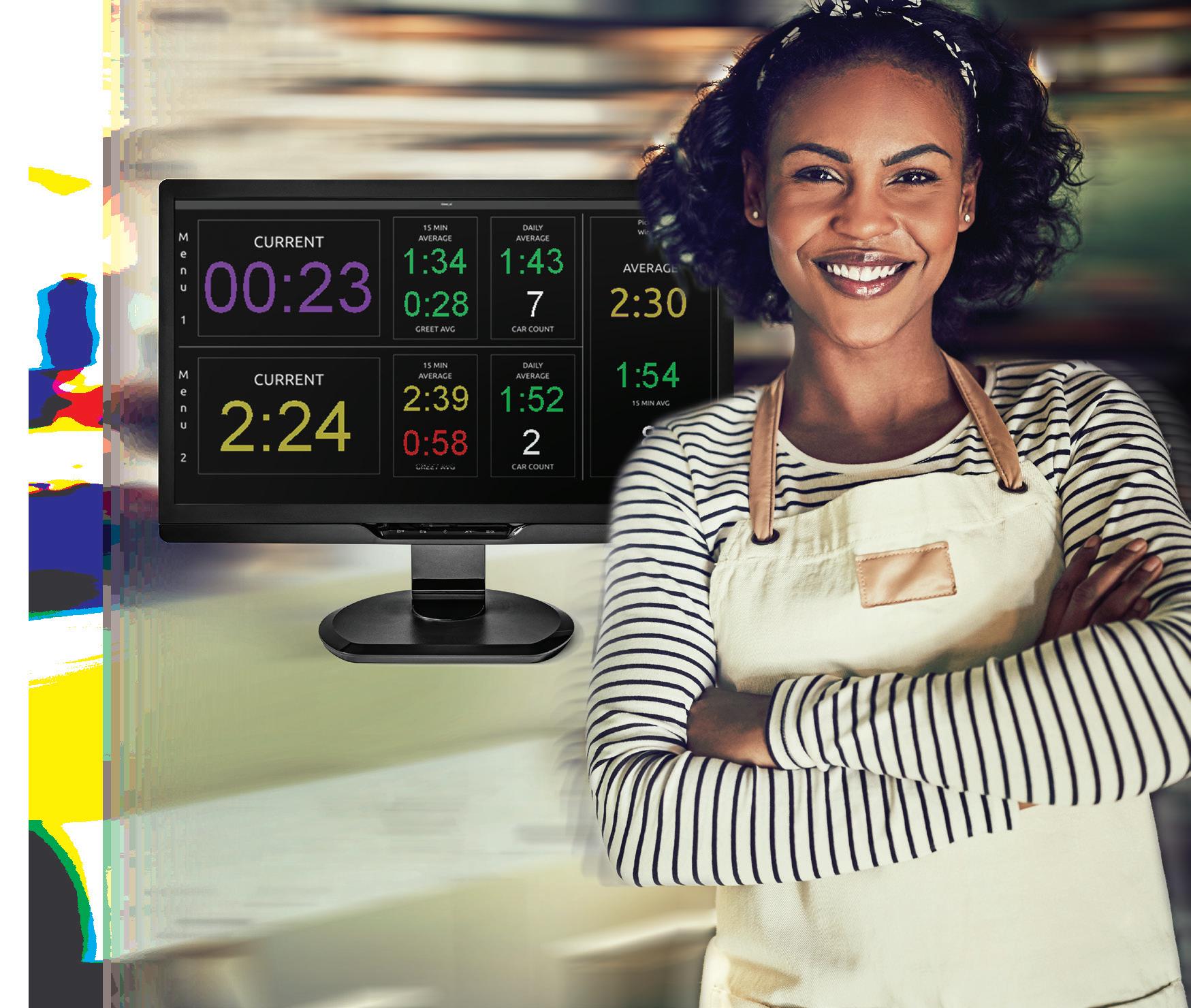





Reduce overall operational expenses without sacrificing quality! Our two-in-one drivethru headset system comes complete with drive-thru SOS timing metrics






drive-thru timing measurements directly from the base station or stream the data to any monitor


DESIGNED FOR COST SAVINGS Innovative timer-integrated drive-thru system eliminates the need for a separate timer purchase The all-new APEX Plus drive-thru headset system integrates speed-of-service timing metrics, providing you real-time drive-thru performance data at your fingertips! MAXIMIZE YOUR DRIVE-THRU TODAY WITH INTEGRATED TIMING Call or Email Us to Learn More! We Are Taking Pre-Orders Now! Restaurant Technology Solutions EST. 1989 TECHNOLOGIES ®RF TWO-IN-ONE DRIVE-THRU SYSTEM & SPEED-OF-SERVICE (SOS) TIMER OFFICES IN: CHICAGO • DALLAS • LOS ANGELES • NEW ENGLAND • ST. LOUIS rfdrivethru.com I (800) 598-2370 I sales@rftechno.com © 2024 R.F. Technologies, Inc. All rights reserved.






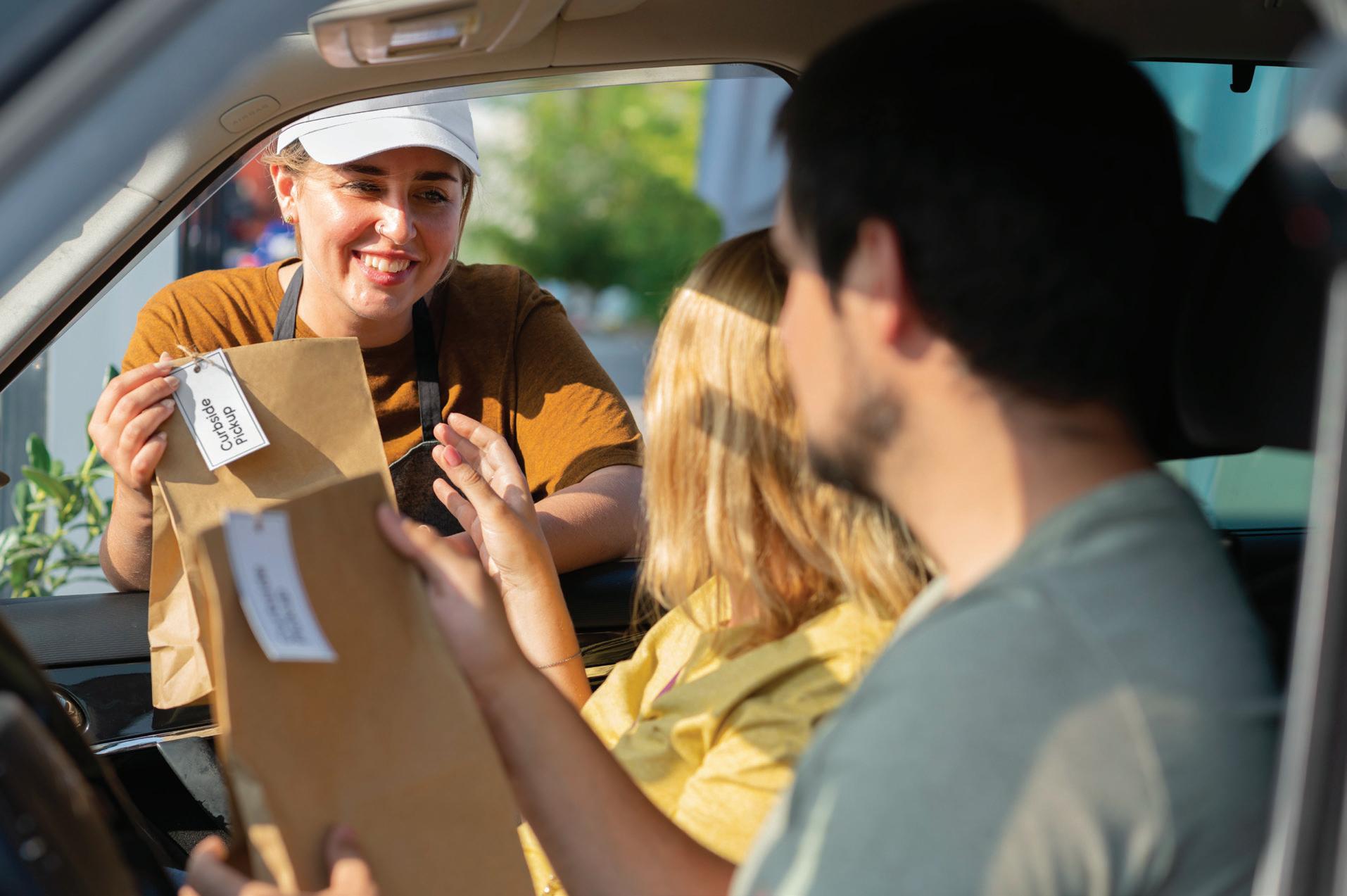
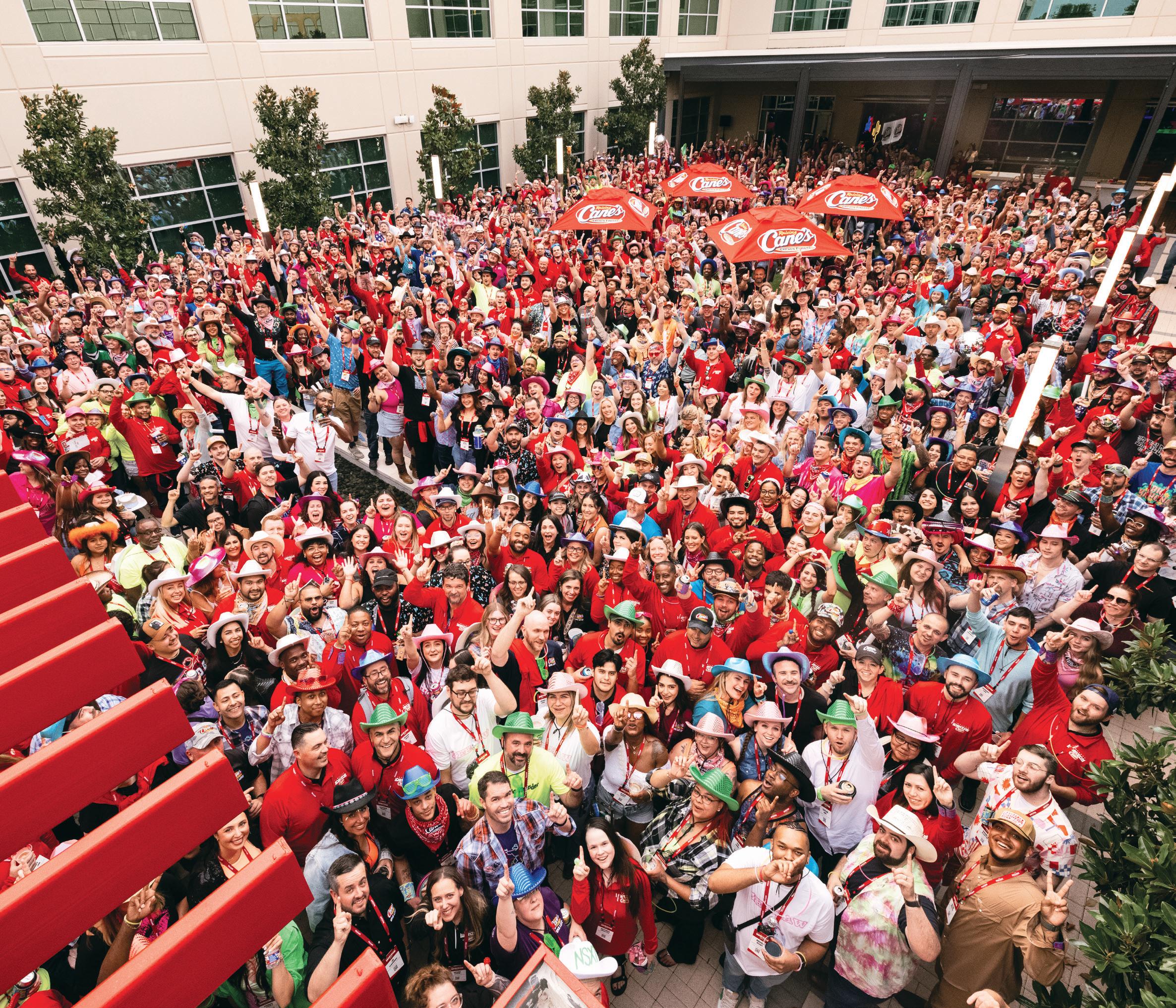
Raising New Leaders
Raising Cane’s holds a big conference to support its up-and-coming operators.
RAISING CANE’S HELD A FOCUSED CONFERENCE for over 1,300 assistant restaurant leaders and business unit teams at Dallas’ Hilton Anatole to provide training, tools, and support for their career advancement.
Throughout the conference, co-CEO and COO AJ Kumaran emphasized Cane’s commitment to sharing its success with crew members and building their careers. He highlighted the significant role of assistant restaurant leaders in the company’s future, noting that over half of the current restaurant leaders and 45 percent of current restaurant partners were promoted from the assistant restaurant leader level.
The conference underscored Raising Cane’s investment in its assistant restaurant leaders, who have seen a 25 percent compensation increase in the past year. Kumaran stressed the importance of this position in achieving the brand’s vision of becoming a top 10 U.S. restaurant company and the chain’s committment to continued investment in their growth.
RAISING CANE’S
www.qsrmagazine.com | QSR | JULY 2024 7 SHORT
Raising Cane’s recent conference hosted more than 1,300 people.
ORDER
Xenial, a subsidiary of tech company Global Payments, released a survey in April examining consumers’ quick-service ordering preferences
The study was conducted by The Harris Poll and reached nearly 2,000 U.S. adults who visit fast-food locations. It’s meant to provide a detailed look at how diners are engaging in a post-pandemic environment with several channels now available to them.
Top Ordering and Payment Preferences
Respondents were asked to rank how they like to order and pay at quick-service restaurants, from most to least preferred.
• Twenty-three percent selected drive-thru with a traditional speaker as their top choice.
• That’s followed by 21 percent preferring to order and pay ahead with a mobile device, 21 percent preferring to order inside with a real person, 12 percent preferring to order and pay in the drive-thru with a line buster (i.e. employee taking orders on a tablet), and 7 percent preferring an automated experience at the drive-thru or inside via kiosk.
• According to Xenial, the closeness in percentages showcases the importance of restaurants providing diverse options to match the transaction habits of consumers.
• “We’re seeing a splintering of [quick-service] consumer preferences among all the different channels that enable them to order and pay for food,” Siefken said. “It has never been more important for [quick-service] restaurants to offer a cohesive, holistic experience to serve the wide-ranging preferences of today’s consumers,” Chris Siefken, Xenial’s head of technology, said in a statement.
23% selected drive-thru with a traditional speaker as their top choice
83 % said they arrive knowing what they want
Diners Changing Their Minds
21% preferring to order and pay ahead with a mobile device
10 % don’t know what they want and use the menu or advertisements to decide
Respondents were asked how menus and advertisements impact their order.
• Eighty-three percent said they arrive knowing what they want, but 27 percent often change their order after looking at the menu or in-restaurant advertisements.
• Ten percent don’t know what they want and use the menu or advertisements to decide.
• “Technology can help alleviate many of the pain points identified by this survey,” Siefken concluded. “From providing a unified platform that unites the front and back of the restaurant to helping speed people through the drive-thru and investing in digital menu boards with the flexibility to present more offers to diners, the right technologies are important differentiators as restaurants compete for customers and workers.”
Consumer Patience
Respondents were asked how many cars lined up in the drive-thru would cause them to skip or leave the line to find another restaurant.
• Sixty-one percent said they would skip or leave if there were five or more cars. If there were fewer than five cars, only 29 percent would skip or leave.
• However, 91 percent of diners who said they would skip or leave if there were too many cars also said they would be more likely to stay if they previously had a speedy experience at the same store.
61%
said they would skip or leave if there were five or more cars
CHOSING FOOD: ADOBE STOCK SIBERIAN ART, DRIVE THRU: ADOBE STOCK / MARIIA
8 JULY 2024 | QSR | www.qsrmagazine.com SHORT ORDER
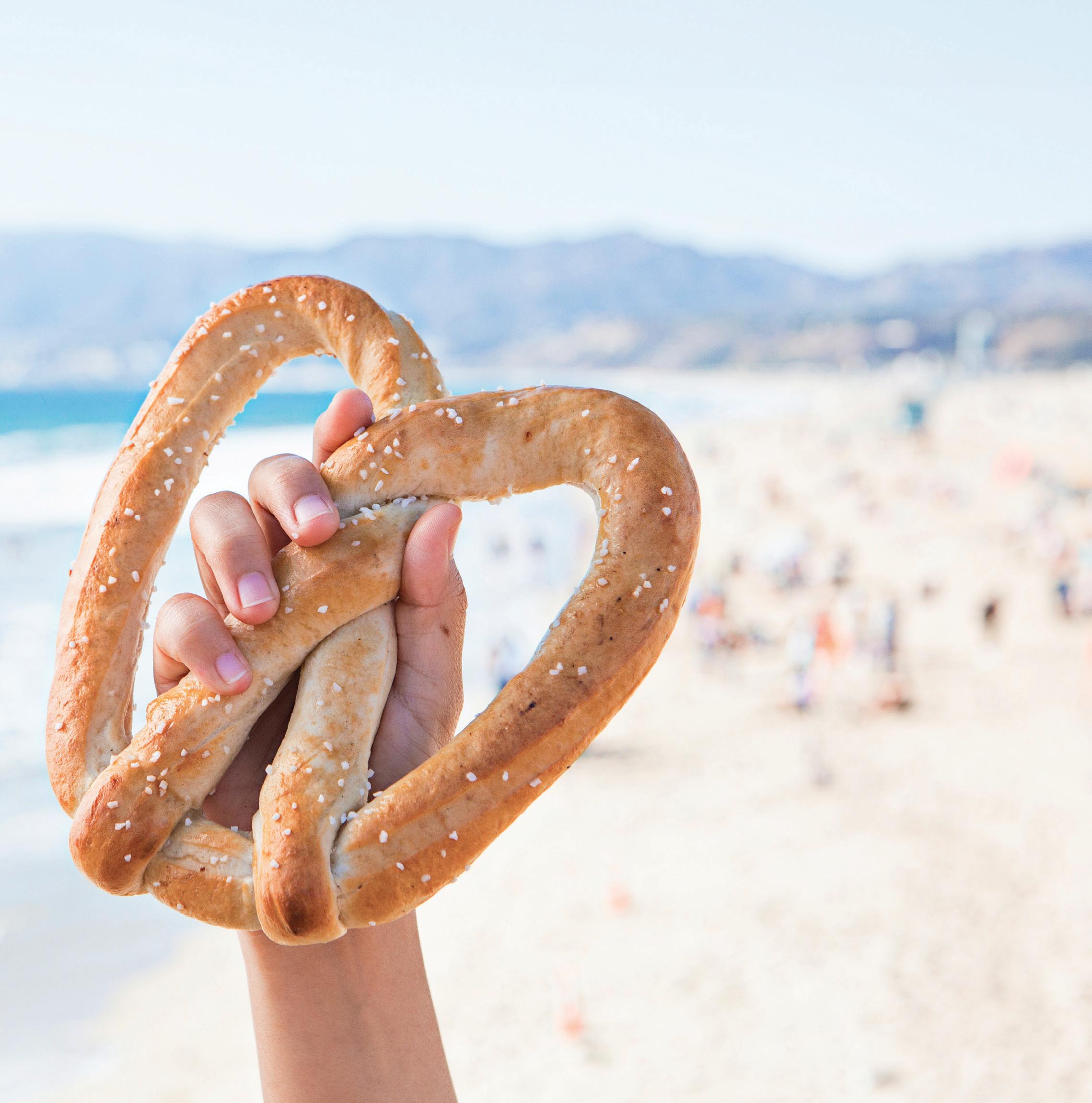
fresh ideas
|CATEGORY INNOVATION|
Twisting the Pretzel Segment
These brands are expanding their reach beyond the confines of shopping centers.
BY SAM DANLEY
While pretzel chains have long been synonymous with mall culture, shifting consumer habits, particularly among Gen Z and millennials, have sparked a seismic change in the snack food landscape. With a growing preference for smaller, more frequent eating occasions, snacks are now vying for a larger slice of the consumer pie.
Recognizing this evolving trend, pretzel brands are rethinking their approach, seeking to expand their reach beyond the confines of shopping centers.
“I think sometimes certain categories get put in little boxes, but we feel like people want pretzels on more occasions than just a visit to the mall,” says Hillary Frei, head of marketing for Wetzel’s Pretzels. “That’s why we’re trying to expand the format as much as possible.”
Wetzel’s quest to “bring pretzels to the people” is unfolding in
a few ways. The brand is targeting other types of nontraditional venues, like airports and amusement parks. A fleet of food trucks continues to expand alongside units in convenience stores. It even scaled down to fit inside Macy’s and Walmart locations. But the biggest twist came last year when it scaled up and debuted its first storefront model.
The brand opened the doors to its first Twisted by Wetzel’s store in La Habra, California, in May 2023. Frei says it goes beyond the chain’s grab-and-go DNA with a “360-degree experience.”
The 1,200-square-foot design is nearly twice the size of a typical mall location, and in a first for Wetzel’s, it includes in-store seating. An open kitchen showcasing the pretzel-making process and an Insta-friendly wall add an experiential element.
The streetside format serves as an innovation lab with new products that are stuffed, topped, and drizzled, plus a fresh lineup
WETZEL’S PRETZELS
www.qsrmagazine.com | QSR | JULY 2024 9
Wetzel’s Pretzels is targeting multiple nontraditional venues for expansion .
of house-made beverages. Some of those offerings will remain exclusive to the Twisted concept. Some will make their way onto menus across the system.
“We think about Twisted as a product innovation lab,” Frei says. “We can have a lot of fun, push boundaries, push formats, and really figure out where consumer appetites are.”
A second corporate location opened in Surprise, Arizona, last year, followed by a franchised unit in the Los Angeles area in early 2024. No definitive growth targets have been set yet. Frei says Wetzel’s is “still using it more for innovation than for growth.” But she’s bullish on the potential. That’s because the model unlocks additional pathways for growth to allow franchisees the ability to scale faster. And it opens up plenty of new territory, given the company hasn’t gone to the street before.
fresh ideas
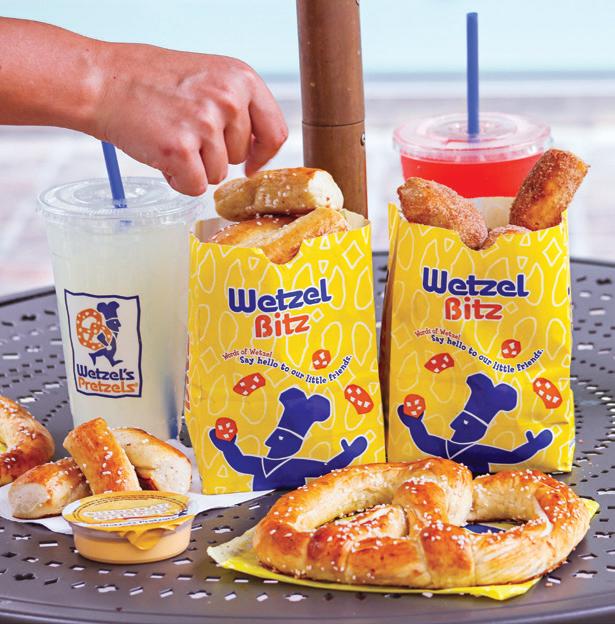
beverage platforms like smoothies and lemonades— lends itself to the drive-thru. Strong results at the first two stores in Iowa sparked a wave of interest from franchisees. Now, Pretzelmaker is working on a new double-drive thru prototype that maximizes its digital capabilities. The first two in development are expected to open in the back half of 2024.
“We’re looking at how to continue improving the consumer experience, whether it’s in the store or in the drive-thru line,” Lauenstein says. “We’re making sure that we’re constantly evaluating the order time and queuing, that the consumer is served quickly, and the orders are correct. We’re playing around with our app, making sure people know they can order ahead. And we’re going to be testing in-store kiosks for the people that want to get out of their car and come inside.”

“Wetzel’s on the street is definitely part of our growth mode, but what it looks like, well, that’s the whole point of Twisted,” she says. “It’s really helping us understand what will work on the street and what we can do in this setting.”
Wetzel’s isn’t the only pretzel brand twisting into new shapes as it pushes beyond nontraditional locations. Take Pretzelmaker as an example. The snack food chain started rolling out its Fresh Twist branding four years ago to fulfill demand for morning and late-night options and increase the portability of the menu for expansion into travel centers, universities, and airports. The menu grew to include breakfast sandwiches and flatbread pizzas made with fresh pretzel dough.

Fresh Twist was designed to cater to smaller footprints and on-the-go customers, creating an opening to jump-start expansion into the drive-thru arena. Pretzelmaker made its first foray into the channel last year with a couple of single-lane sites in Iowa.
“This is a great approach for us to get the consumer to use our brand more often,” says Pretzelmaker president Allison Lauenstein. “It allows them the convenience that they want without having to park their car and go inside to grab their pretzel bites and their lemonade.”
Venturing into the drive-thru changes the dynamic when it comes to driving traffic. Historically, Pretzelmaker has relied on impulse occasions, engaging the senses of a captive audience to spark cravings. Now, it has to become more of a destination.
That’s where menu diversity comes into play. Lauenstein says the brand’s broad menu—encompassing everything from sweet and savory snacks to more substantial mealtime offerings, plus
Additionally, she sees an opportunity to pair Pretzelmaker with other FAT Brands concepts like Great American Cookies or Marble Slab Creamery in a drive-thru setting down the road. But no plans have been solidified yet.
“Pretzelmaker is not only a profitable business, but it is easier to execute than some of the other brands out there,” Lauenstein says. “We’re starting to look across the entire portfolio and see where it might make sense to help drive some incremental traffic and sales for our sister brands.”
Fellow pretzel chain Auntie Anne’s made headlines in 2021 when it opened its first drive-thru alongside sister concept Jamba in Wiley, Texas. It already had plenty of cobranded locations with fellow GoTo Foods concepts Cinnabon and Carvel, but that store marked a major milestone in its journey outside of the food courts it has historically occupied. Three years after the Wiley store went online, GoTo Foods has opened over 20 co-branded Auntie Anne’s and Jamba locations, roughly half of which feature a drive-thru.
“We’ve been working to be more accessible by going streetside,” says chief brand officer Julie Younglove-Webb. “The big thing that really affords us is convenience, which just allows for greater frequency.”
The brand is looking to continue strengthening that convenience piece by growing its loyalty membership base. It’s leaning into technology and using machine learning to generate personalized offers based on customer behavior.
The partnership with Jamba is particularly complementary because Auntie Anne’s caters to dayparts from noon on, while Jamba specializes more in the morning crowd, she adds. For franchisees, that offers a labor-efficient means of attracting a larger customer base with a broader menu.
Sam
the associate editor of QSR. He can be reached at sdanley@wthwmedia.com WETZEL’S PRETZELS, PRETZELMAKER, AUNTIE ANNE’S |CATEGORY INNOVATION|
Danley is
10 JULY 2024 | QSR | www.qsrmagazine.com
PRETZEL CHAINS ARE WORKING TO BECOME MORE ACCESSIBLE TO GUESTS, WHETHER THAT’S FOOD TRUCKS OR DRIVE-THRU.

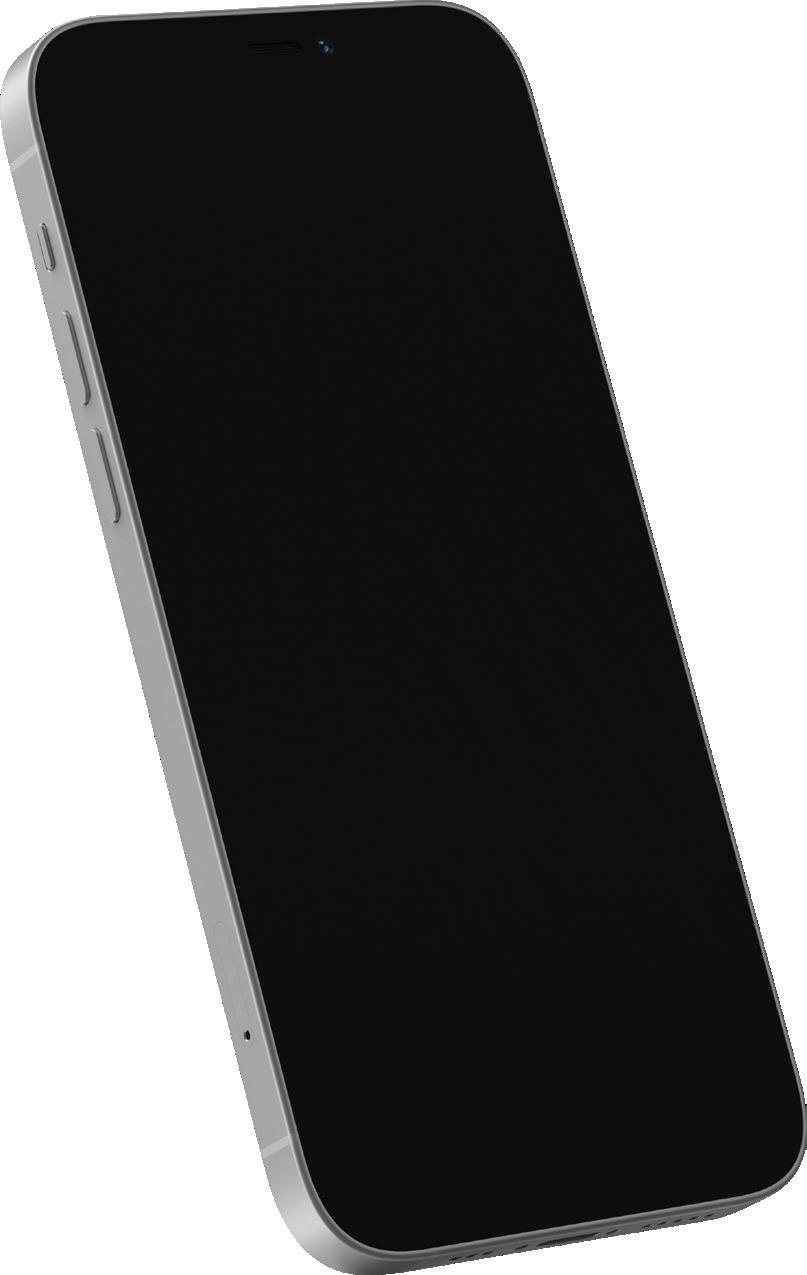

REPAIRS RAPID REPAIRS RAPID DRIVE-THRU HEADSET COMPLETE SOLUTIONS PROVIDER TO THE RESTAURANT INDUSTRY Our Professional Technicians Service All Major Brands FREE INBOUND SHIPPING 24 HR REPAIR GUARANTEE CUSTOM REPAIR PROGRAMS TEXT “REPAIR” TO 847-495-7400 FOR YOUR FREE SHIPPING LABEL OFFICES IN: CHICAGO • DALLAS • LOS ANGELES • NEW ENGLAND • ST. LOUIS rfdrivethru.com I 800-598-2370 I sales@rftechno.com WE OFFER Nationwide On-Site Repair & Installation Services Extensive Inventory of Parts & Accessories Restaurant Technology Solutions EST. 1989 TECHNOLOGIES ®RF
Why Franchisees Struggle with Their Media Presence
A SOLUTION TO INCONSISTENCIES IN RESTAURANT MARKETING.
Many franchisees struggle to establish an e ective online presence while keeping their digital content relevant and consistent while optimizing their advertising strategies. It’s a delicate balance that requires adherence to brand guidelines while maintaining a savvy digital strategy to attract and retain customers.
It is important to align the enterprise brand message with local franchise locations. If advertisements don’t tie the brand message to the individual franchise location message, the information becomes weak and unclear. “It’s all about maintaining consistency with advertising messages for both the brand and the local franchisee at the same time,” says Angie Cordova, vice president of product management at Ansira. “If the consumer sees one thing in the ad and something di erent on the website or app it creates a broken experience we want to avoid.”

tions including SEO optimization and paid media strategies while keeping websites updated. By leveraging these digital strategies, franchisees can boost their websites for search engines and create compelling, localized content that drives paid and organic tra c along with consumer engagement.
Brand inconsistencies can be as simple as varying color schemes, contradicting operation hours, and outdated menus across di erent platforms. “If the media advertisements and franchisee location information are conflicting or outdated, a consumer prospect could become easily distracted, which may ultimately influence them to go somewhere else,” Cordova says.
Empowering franchisees to overcome these challenges, Ansira o ers tailored marketing solutions. Ansira connects the enterprise brand with franchisees while maintaining brand equity and enabling local creativity and di erentiation.
“How do you ensure consumers will go to your location instead of someone else’s?” Cordova asks. “I encourage finding subtle and creative ways to be di erent, especially if you’re a local restaurant operator in a sea of other local restaurants under the same brand. Standing apart goes a long way in developing loyalty with consumers in your local area.” Whether sponsoring local events, charities, or promotions, Ansira helps franchisees connect with their community in meaningful ways.
Ansira empowers franchisees with powerful media mix solu-
Ansira’s use of artificial intelligence is a game-changer in digital advertising. Ansira’s AI manages media budgeting and bidding in real-time, optimizing the allocation of resources to maximize return on investment. This means franchisees can achieve more with their marketing budgets, reaching a broader audience more e ciently. “It’s making the media dollars stretch farther,” Cordova says. “You’re getting more consumer eyeballs and brand awareness in the media mix, but for the same amount of dollars because the AI is moving the media dollars to the best-performing publishers, channels, and ad types.”
Ansira emphasizes the importance of data-driven decisions. “It’s tempting for most people to say, “I like how this looks,” or “Let me insert this here,” based on a feeling or emotion. But looking at the actual data is important,” Cordova says. Regularly analyzing data helps franchisees adjust their strategies based on consumer behavior, seasonality, and market trends, ensuring their digital marketing e orts are always relevant and compliant.
Ansira provides restaurant leaders and franchisees with the tools, strategies, and insights needed to maintain brand consistency, optimize digital presence, and engage local consumers. Utilizing Ansira’s expertise, franchisees can master advertising challenges and grow restaurants to new levels. –By Olivia Schuster ◗
ANSIRA
To discover more about boosting your online presence, visit Ansira.com SPONSORED BY ANSIRA 12 JULY 2024 | QSR | www.qsrmagazine.com
HYPER-LOCAL MARKETING: SHOW ME YOU KNOW ME
Enhance your cross-channel communication efforts with Ansira. Create a digital strategy with a data-driven approach to deliver a consistent customer experience across all touchpoints. Stay compliant and relevant while delivering your hyper-local message to attract and retain your customers.

READY TO TALK ABOUT YOUR DIGITAL STRATEGY? Lorem ipsum
ansira.com
Old School Bagel Cafe
For 17 years, the concept has built a cult-like following in Oklahoma. Now, it’s ready to amp up growth through franchising.
BY SATYNE DONER
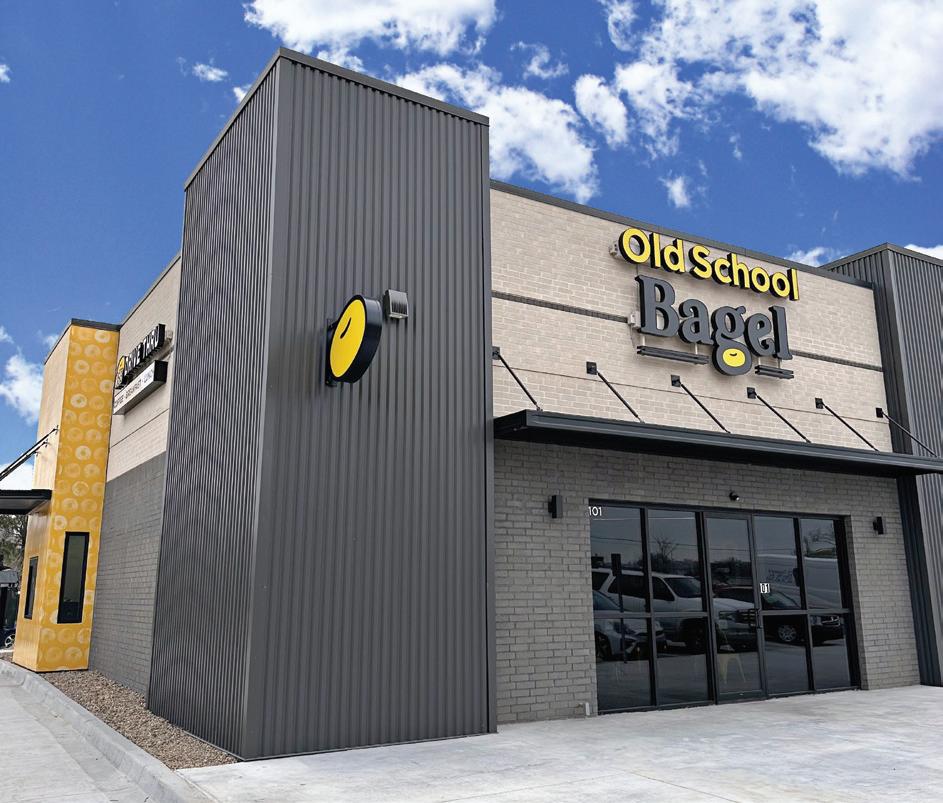


FOUNDERS: Danny Cowan & Wayne Hansen
HEADQUARTERS: Oklahoma City, OK
YEAR STARTED: 2007
ANNUAL SALES: $8.86 million (2023)
System sales projected at $9.86M (2024)
TOTAL UNITS: 15
FRANCHISED UNITS: 1
DANNY COWAN SPENT 20 YEARS WORKING AT THE once-popular New York Bagel, franchising two locations in Denver. He perfected the New York–style of boiling bagels in water for 60 seconds before baking, creating a crisp outer layer and soft center. Outside of New York Bagel, this method wasn’t commonly used in Middle America at the time.
When the chain filed for bankruptcy protection and sold in 2000, the brand changed hands multiple times and left customers missing an authentic bagel chain. Cowan viewed Middle America as an abandoned market, with nothing stopping him from bringing New York–style bagel sandwiches to Oklahoma City. He quit his job as a sales representative and realtor, partnered with his childhood friend Wayne Hansen, and invested in a new concept: Old School Bagel Cafe. Another friend, Kyle Tapp, joined the team a few years later.
“When [the founders] came back home to Oklahoma, there weren’t any New York–style bagel shops in the region, and the community kept asking for one,” says Joey Conerly, VP of corporate strategy for Old School Bagel. “They decided they would
take a stab at their own concept and put a spin on it in terms of culture and atmosphere.”
After launching in 2007, the bagel chain quickly became known as the “Cheers” of the area, growing a cult-like following through its commitment to guest relationships. The founders created a culture where operators know their customers’ names and bagel orders, delivery drivers are offered free drinks, and tables are pre-bussed.
It also sets itself apart by capturing both breakfast and lunch dayparts. So much so that Conerly says half of Old School Bagel’s sales come from the afternoon crowd and that the lunch menu surpasses breakfast.
Morning traffic is driven by traditional breakfast sandwiches and specialized coffees, whereas lunch consumers are drawn by unique offerings including the Old Smokey, Cuban, or Turkey Avocado. Guests can even build their own bagel sandwiches with a choice of meat, cheese, and veggies, served hot or cold.
“Everyone thinks of bagels and cream cheese, but when we throw pulled pork and Swiss on a bagel, it throws everybody for a loop. This variety of sandwiches hits on different cravings, and our customers can get something different every day,” Conerly adds. “We have people in the drive-thru ordering their breakfast and lunch for the day at the same time.”
Old School Bagel grew conservatively for 17 years, slowly ramping up its delivery, in-app, and catering channels. Last year was the biggest moment for the brand, with corporate growth doubling in unit size from seven to 15, and same-store sales growing 39 percent since 2019.
With the help of a new loyalty program, which tracks the customer’s journey with Old School Bagel, over 50,000 accounts have been registered since November 2023. The bagel shop has
OLD SCHOOL BAGEL CAFE (3)
DEPARTMENT ONES TO WATCH
[CONTINUED ON PAGE 45] 14 JULY 2024 | QSR | www.qsrmagazine.com

Key Information Delivered When it Matters Most




Stay Connected Like Never Before



Whether you’re congratulating a store for a job well done or alerting managers about a change in a process, the NEXEO | HDX™ communication platform delivers your messages in real time. Send your kudos or updates with Text & Connect in HME CLOUD® and broadcast them to select headsets in the store, without interrupting the drive-thru and enabling managers, supervisors, and owners to stay in contact with their teams at any time and from anywhere.












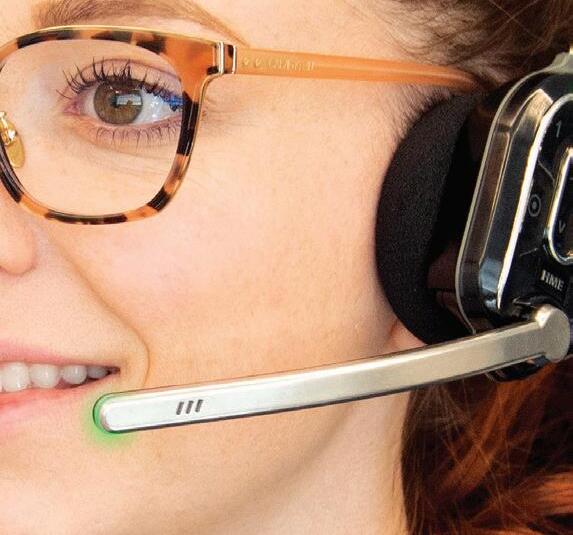
















Go Beyond the Drive-Thru. Maximize Efficiency at Every Touchpoint. 866.577.6721 | www.hme.com/nexeo Select the specific groups or stores you want to reach. 1 Enter an encouraging message or reminder. 2 Tap to send your message, which is then converted to audio and played in real time to your recipients in their NEXEO headset. 3 ©2024 HM Electronics, Inc. The HME logo and product names are trademarks or registered trademarks of HM Electronics, Inc. All rights reserved. PA24-01.
DEPARTMENT
WOMEN IN LEADERSHIP
Broadway Comes to San Diego
First-time franchisee Sharian Lott steps into the spotlight with her own Schmackary’s cookie store.
BY SATYNE DONER
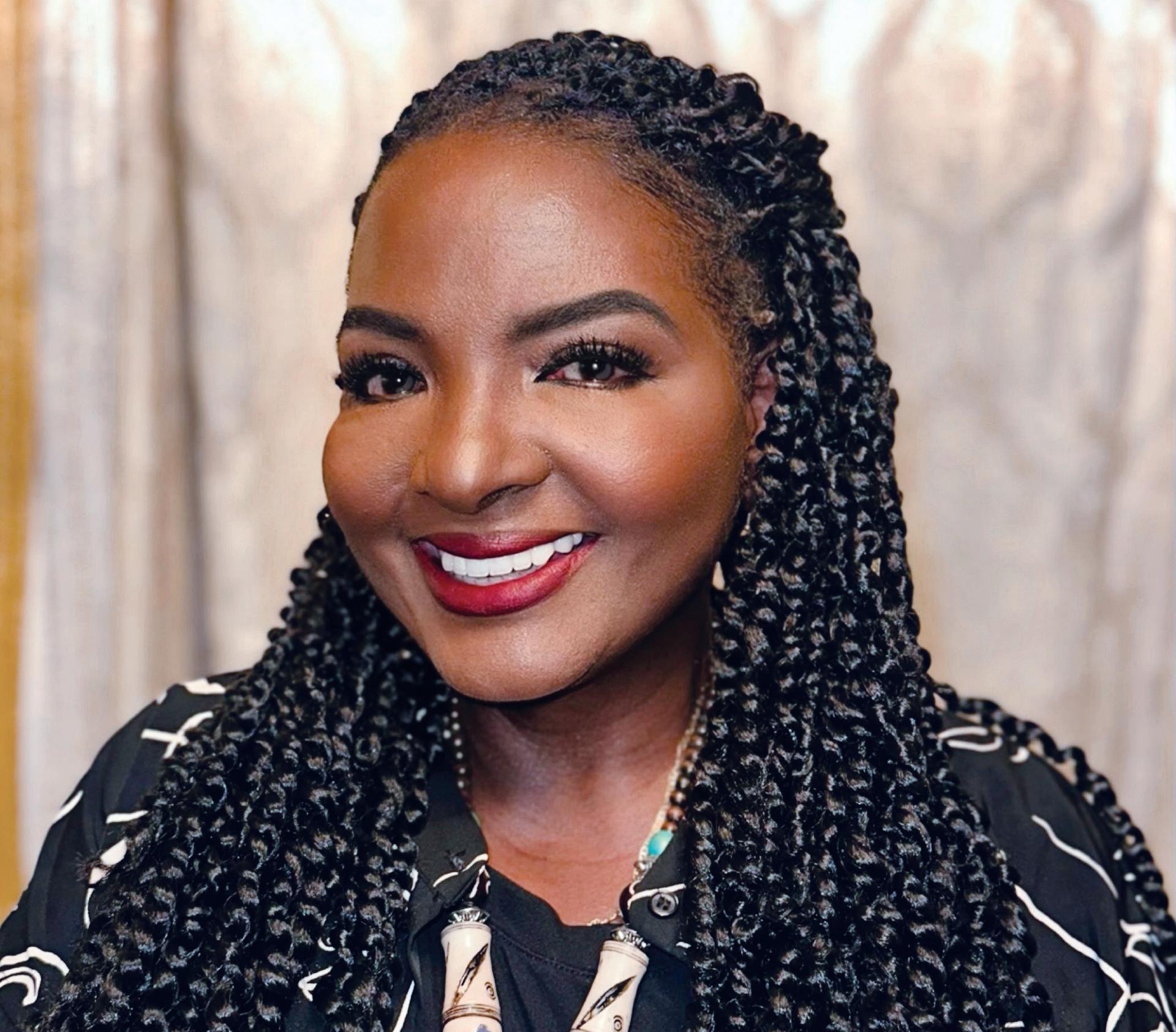
Sharian Lott, in her own words, is “sandwiched between a mother who’s a great singer, a soloist, and a daughter who we knew was going to be some kind of a performer by 3 years old.” The spirit of Broadway is deeply ingrained in her DNA—her mother Dorothy Smith was the first Black woman elected to office in San Diego and purveyor of the longest-running Black theater in the country. Lott’s daughter, Loren, went from performing for her teddy bears to large Broadway audiences and even TV shows, including “The Porter” and “The Young & The Restless.”
Growing up, Lott gained a deep appreciation for her mother’s strength and resolve. Smith was born in 1939, went to college on a boy’s scholarship, and powered through relentless adversity as she tried to make it in the entertainment industry. “She was always so happy … It was never about accolades or money. In the late 1950s, you don’t tell a young Black woman that she’s going to be an entertainer. You tell her to get a good job as a teacher, secretary, or wife. But everywhere she went, she was excellent,” Lott shares. “[Smith] prepared my daughter to be in the industry and gave her the moral and ethical foundation she’d
need to not be tainted by it.”
Surrounded by stars, Lott took a different path: She spent her early years teaching management and artificial intelligence at IBM and moved on to teach as a college professor in the San Diego Community College District for nearly three decades. She was looking forward to retiring, collecting her pension, and relaxing after a fulfilling career. Until her daughter gave her a cookie.
“As a child, I’d give her a cookie and then find it under the couch because she hated sweets,” Lott says. “One day, she was backstage at a Broadway show and told me, ‘Mommy, I’m obsessed with this cookie,’ and I flew to New York to see what it was all about.”
She arrived in New York and was introduced to Schmackary’s, otherwise known as “The Official Cookie of Broadway.” The award-winning brand has a reputation for appearing on Hulu’s “Only Murders in The Building,” feeding Broadway actors like Loren backstage, and partnering with local communities to raise money for charity.
As “Generation Y’s answer to the Old American Bake Shop,” the brand fuses newage comfort food with reinvented classics. It launched a franchise program in May 2023 with Fransmart, growing its national footprint by 100 percent with two franchise deals signed in Q1.
One of those multi-unit deals was inked by Lott, who intends to bring the cookie chain to California for the first time. It was an organic synergy between the two, with Lott’s family deeply embedded in the San Diego community and embodying the spirit of Broadway on the West Coast. After the brand won over her daughter, Lott became what she calls a “connected customer” and jumped headlong into the franchisee application process. It was enough to pull her out of retirement.
“Schmackary’s is my home. I gave [founder Zachary Schmahl and COO Jonny Polizzi] a picture of my mother’s kitchen because we still have the family home, and it looks exactly like their stores,” Lott says. “They did such a great job with the design. In fact, in my first store, I’m going to dismantle my mom’s kitchen and put her stuff in it.”
Lott says the franchisee experience is different from anything she’s done before. The two-month-long applica-
SCHMACKARY’S SHARIAN LOTT
Sharian Lott’s family is deeply rooted in the San Diego community.
[CONTINUED ON PAGE 45] 16 JULY 2024 | QSR | www.qsrmagazine.com
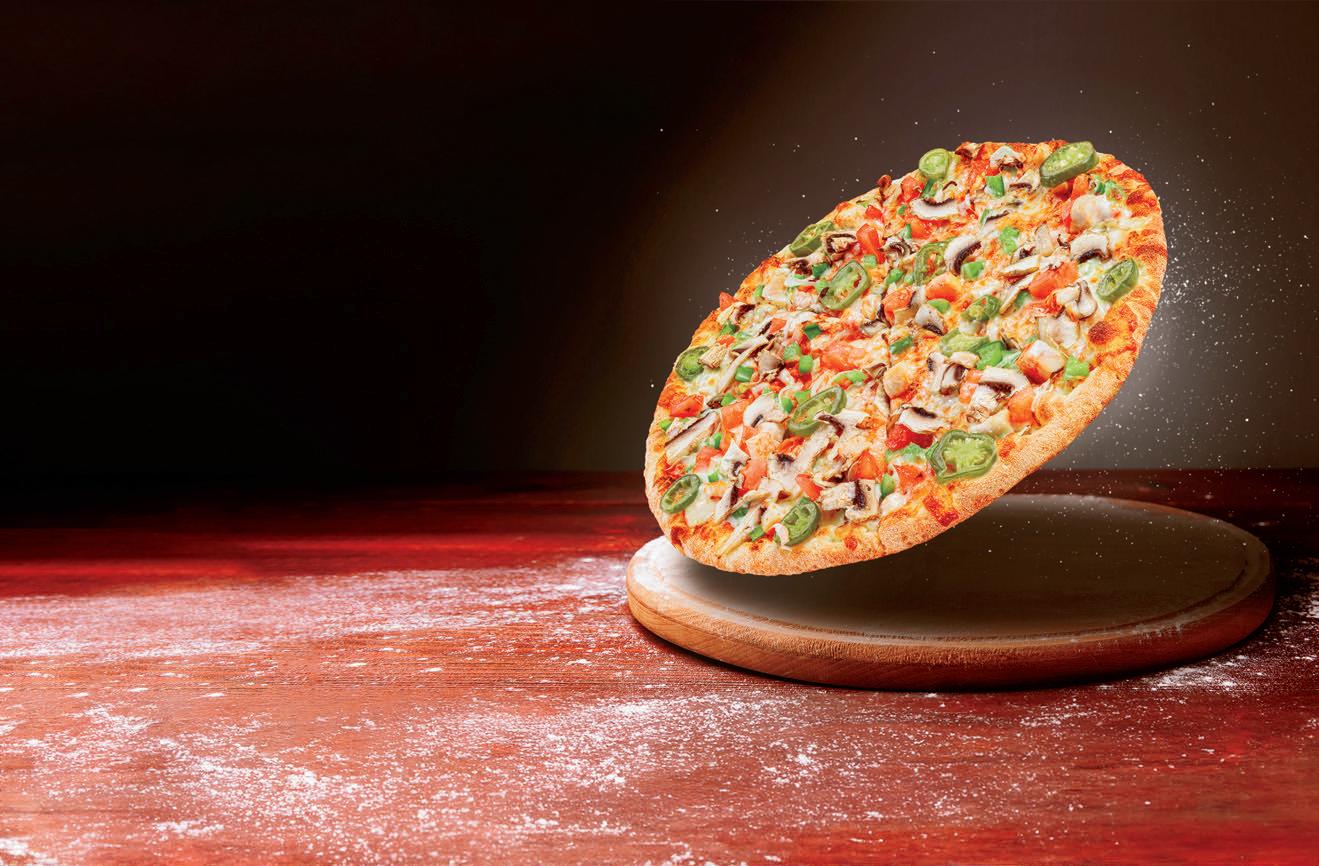

Ditch the Stick! Collaborate with our industry experts to find custom solutions for any operations large or small.
Better Performance Made Possible Serve up the perfect slice all day, every day with our Release Agents and Equipment solutions. To learn more, contact us at: info.food@vantagegrp.com •Improve product consistency
waste and cleaning frequency •Extend the life of your pans
www.vantagegrp.com
•Decrease
The Evolution of a LeaderCategory
/ BY SAM DANLEY
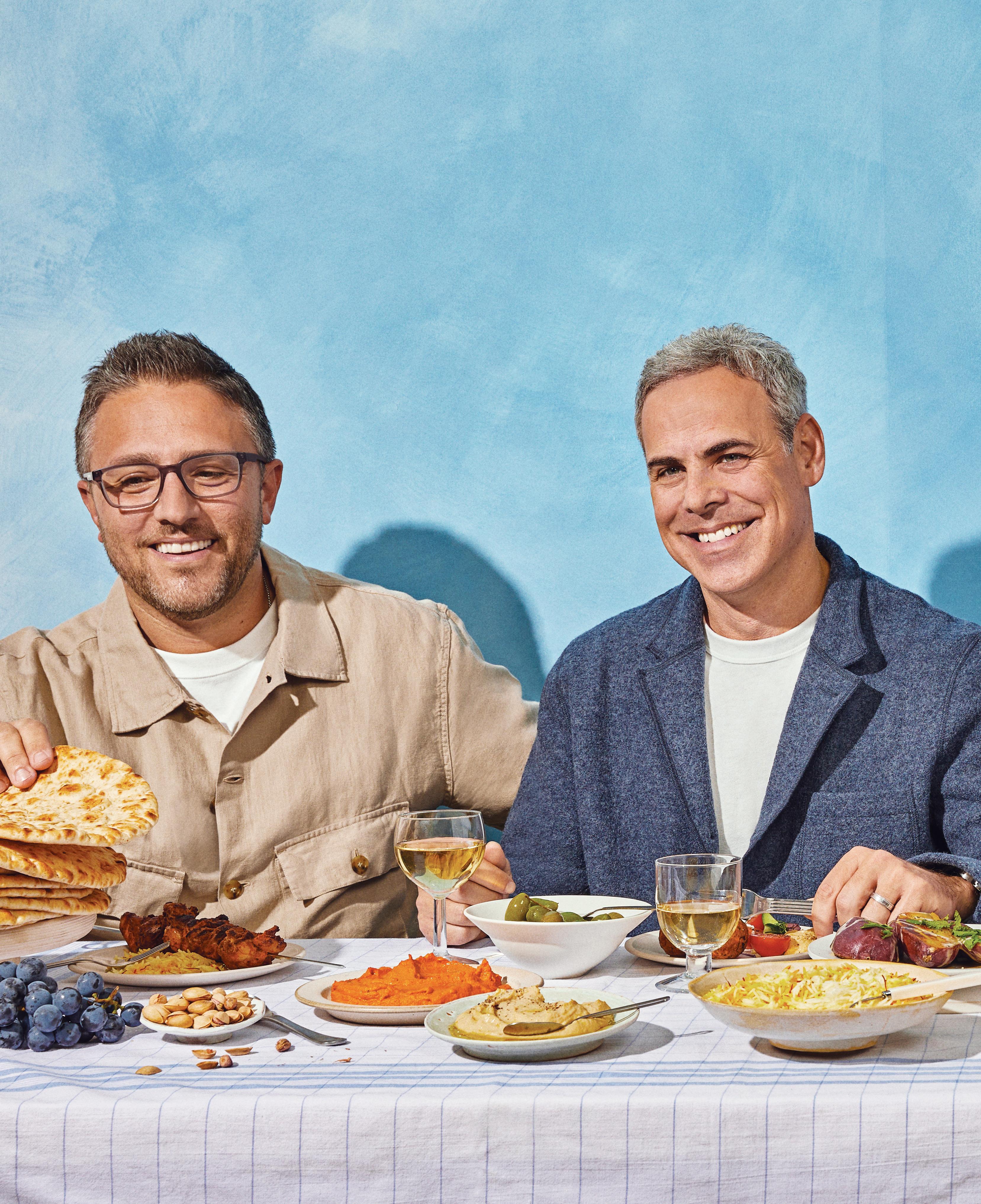
More than a decade of growth set the stage for CAVA’s spectacular public debut, and there’s plenty more innovation to come.
• CAVA HAS MADE ITS MARK IN THE MEDITERRANEAN FOOD SEGMENT OVER THE PAST DECADE-PLUS. CAVA 18 JULY 2024 | QSR | www.qsrmagazine.com GROWTH AND DEVELOPMENT
CAVA CEO Brett Schulman isn’t always one to stop and smell the roses. His eyes are typically focused on the road ahead. But he certainly paused to savor the moment before ringing the opening bell on the New York Stock Exchange on July 15, 2023.
Thirteen years earlier, he was pitching the concept to family and friends, hoping to raise enough funds to build a few units and prove there was demand for Mediterranean fare served in a fast-casual format. A broader vision to define a category blossomed as CAVA climbed its way to national prominence. Now, the fast-growing company was notching a major milestone with its public market debut.
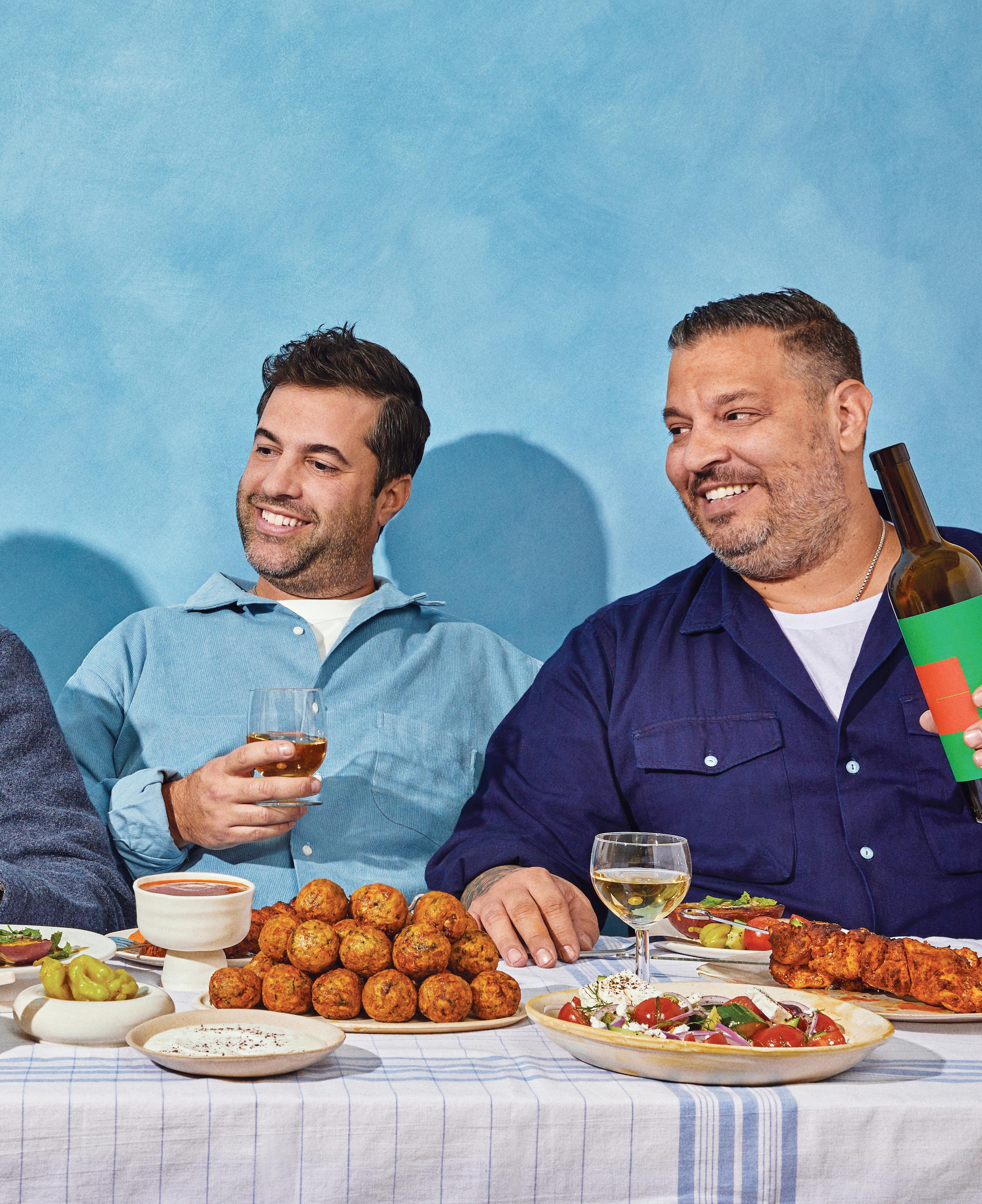
“You only get a handful of moments in life that are so memorable,” Schulman says. “But as I said to the team the night before the IPO, that wasn’t the destination. It was the beginning of the next chapter of our journey.”
That chapter started with a sizzle that was only getting hotter. CAVA’s stock price nearly doubled after Schulman rang the opening bell, pushing its valuation to $5 billion and giving it one of the strongest first-day gains in recent memory.
Trading on the stock market is a different animal that comes with high-stakes expectations from investors. It’s not unusual for Wall Street
www.qsrmagazine.com | QSR | JULY 2024 19 GROWTH AND DEVELOPMENT
to push so hard for growth that companies lose sight of the fundamentals. CAVA isn’t concerned with day-to-day moves in its stock price, though, and it isn’t letting its status as a public company push it into short-term thinking.
“People can get distracted by changes and fluctuations in the market, but we’re staying focused on what’s right for the business over the long term,” says CFO Tricia Tolivar. “We’ve always thought ahead and tried to understand what we need to be doing now to bring things to life in the future.”
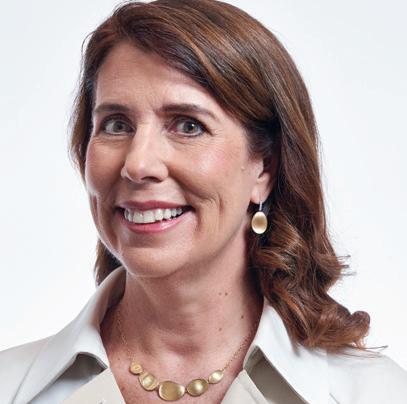

Case in point: After restaurant margins blew past expectations last year, the company turned around and made a multi-million dollar incremental investment in wages and benefits. Executives told investors the move would have a 100-120-basispoint impact on store-level profitability going forward. That hit was well worth the gain for a chain plotting aggressive expansion in a competitive labor market.
“We said, ‘Listen, don’t take this as the new normal. We’re going to create shareholder value, yes, but we’re going to reinvest in our team and reinvest in our guests,’” Schulman says. “We’re setting the precedent with our public stakeholders that we’re building something not for the next ten weeks or the next ten months, but for the next ten years.”
The chain’s rapid ascension owes to that longterm view. It invested in a vertically integrated production model long before it was primed to grow. It introduced pickup windows and secondary makelines well ahead of the pandemic’s digital tidal wave. And it’s continually upped the game on the employee experience—a key ingredient that goes hand-in-hand with the heightened hospitality that’s as much a part of its DNA as its health-forward fare.
More than a decade of continuous transformation propelled the fast casual to its next chapter. There’s plenty more evolution to come. Beneath it all is the enduring idea of “bringing heart, health, and humanity to food.” It’s a premise that hatched nearly 20 years ago with a menu of small plates served tableside in a quiet East Coast shopping center.
Full Service to Fast Casual
CAVA’s story starts in 2006, when founders Ted Xenohristos, Ike Grigoropoulos, and Dimitri Moshovitis opened a full-service concept called Cava Mezze in Rockville, Maryland. It paid homage to their parents, who were first-generation Greek immigrants and lifelong service industry workers, in a few ways. First was a menu inspired by recipes from their childhood. Second was an internal culture that wasn’t predicated on churn and burn, which in turn fostered a warm and welcoming atmosphere.
They started selling dips and spreads in local grocery stores a few years later. That’s where Schulman enters the picture. He got involved as a consultant for the CPG side of the business in 2009, lending his experience running a snack brand to help the group navigate the retail landscape.
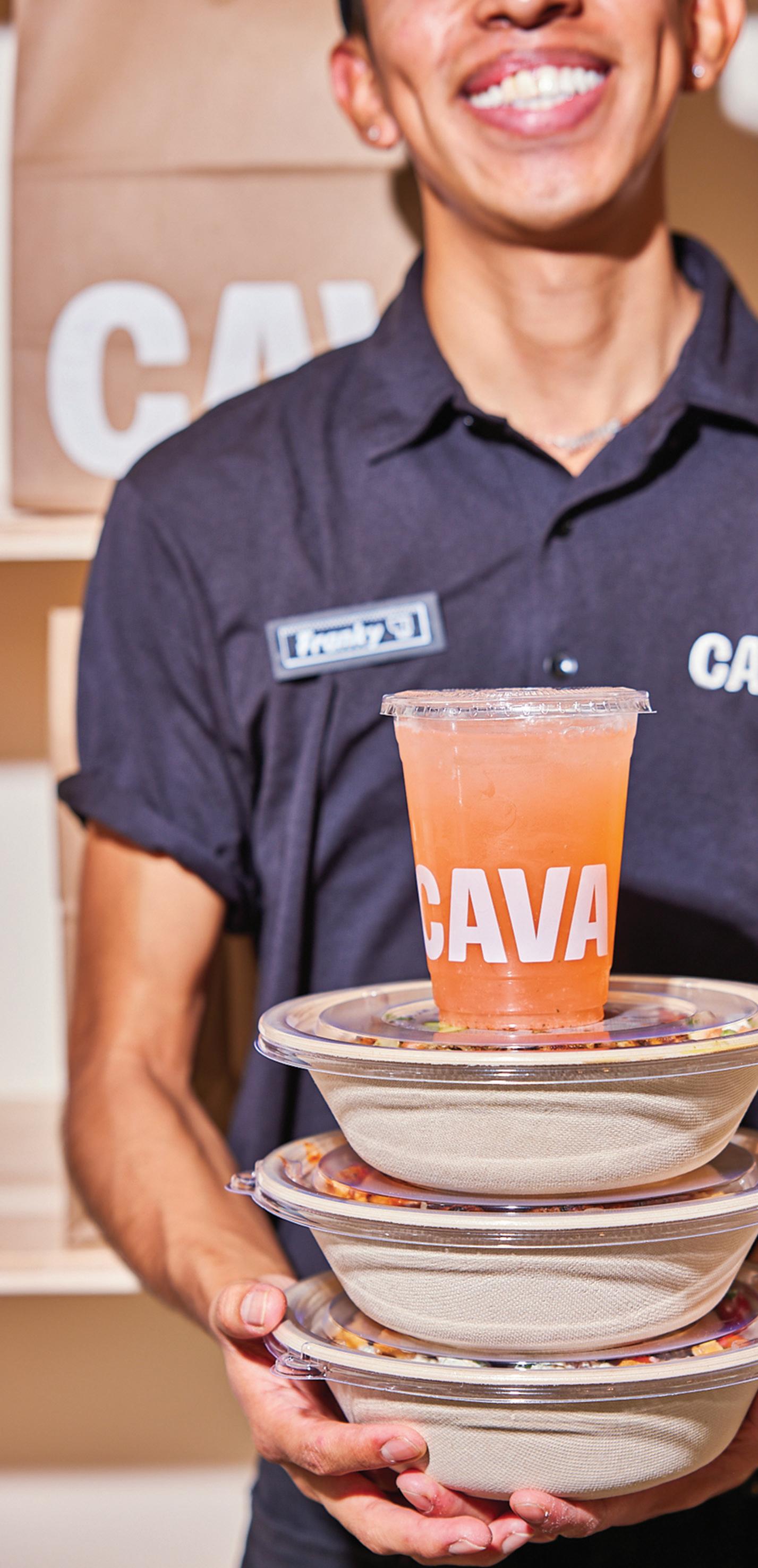
An offer to join as the fourth partner came a year later. It only took a single meal at the restaurant to seal his decision.
“I didn’t tell the guys I was going to dinner there because I wanted to see how they ran their business,” Schulman says. “I was struck by how happy the team was, how broad the appeal
CFO
TRICIA TOLIVAR
CEO BRETT SCHULMAN
• CAVA’S FAST-CASUAL JOURNEY BEGAN IN 2011.
20 JULY 2024 | QSR | www.qsrmagazine.com GROWTH AND DEVELOPMENT
CAVA (2)

of the menu was, and how good I felt after eating the food. So, I went to them the next day and said, ‘I’m in, but have you ever thought about taking what you do in full-service and putting it in a fast format?’”
Riding the crest of fast casual’s exploding popularity, the team saw an opportunity to bring their Mediterranean cuisine to a broader audience. It took some time to figure out how the food would translate from a made-toorder format in a full-service setting to a more convenient quick-service environment. They landed on a walk-the-line model for a few key reasons.
“I’m kind of impatient, so I loved the idea that you have your food when you get to the register no matter how long the line is,” Schulman says.
More importantly, customization was starting to take hold throughout the industry, and this was the perfect format with the perfect pantry for guests to tailor their meals to their preferences.
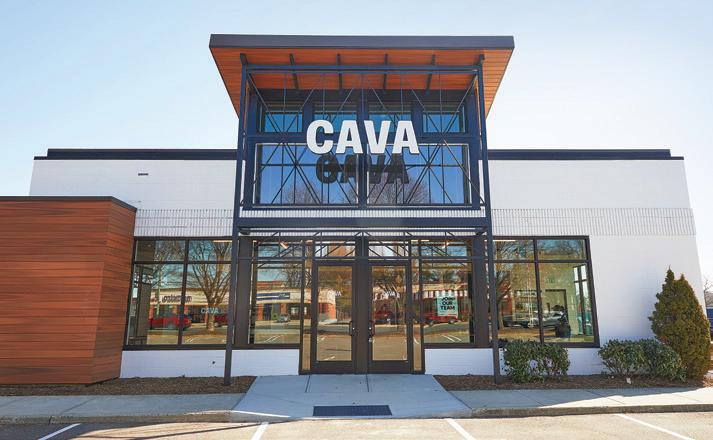

of wanting to eat better without necessarily making a bunch of sacrifices. That’s where our food comes in with legumes, Greek yogurt, olive oil, chickpeas, and all of these things that are satisfying and healthy at the same time.”
Armed with $2 million in investments from friends and family, the group set out to open three locations in different types of trade areas throughout the Washington, D.C. metro area. Store number one came online in early 2011. Two and three followed a year later. There were some lessons around sourcing and kitchen processes that helped improve consistency. CAVA introduced Community Days that offer free meals and match donations for local charities to address tepid traffic at one of those initial stores. The tradition has been upheld with each new restaurant since then.
The partners personally guaranteed a loan for the next few units after working through those early kinks. The goal was to get to five units, gain a deeper understanding of what was and wasn’t working, and “really own the model” to potentially scale further.
“I think we realized we had something that could become much bigger when we opened our fifth restaurant,” Schulman says. “Our Community Day had long lines. The other restaurants were really accelerating their growth. We could see it all start to come together and clearly resonate with consumers.”
By 2015, CAVA had eight stores and another three on the way in its home market, plus $16 million in fresh funding to fuel its expansion on the West Coast. It marked the beginning of a “Coastal Smile” strategy aimed at following population migration trends toward the Sunbelt and the suburbs.
Things kicked into hyperdrive a few years later when the company acquired Zoës Kitchen for $300 million. The purchase was financed through a significant equity investment in CAVA led by Act III Holdings, the investment vehicle created by Ron Shaich, founder and former CEO of Panera Bread.

Plus, it supports high volumes with a labor-efficient production format.
“That allows you to take some of that efficiency and invest in higher-quality ingredients, which we could already tell people were gravitating to,” Schulman says. “There’s that struggle
At 261 units, the competing Mediterranean fast casual was much larger than CAVA, with high-quality sites that Schulman says were “way underperforming their potential.” The main thesis was that this real estate could rapidly accelerate CAVAs expansion under its new growth framework.
CAVA (4) www.qsrmagazine.com | QSR | JULY 2024 21 GROWTH AND DEVELOPMENT
“We also thought that scale was going to matter more than ever, and that technology was a big driver of that bifurcation into the haves and the have-nots—those that have the necessary resources to invest in delivering relevant, differentiated guest experiences and have the business insights to compete in a modern world, let alone have the resiliency in their business model to withstand COGS and labor inflationary pressures,” he says.
Zoës was a “melting ice cube” with slumping sales and stagnating traffic when the deal closed in November 2018, Schulman adds. His team just needed to make sure it didn’t turn into a puddle before they flipped all of its units into more productive CAVA locations. The scope of that challenge came into full view within a week of operating as a combined entity. Same-store sales at Zoës, which were declining in the low-single-digits during negotiations, suddenly tanked nearly 12 percent.
The team was already formulating how to shore up the business, but it wasn’t anticipating that level of comp deceleration, so its attention immediately turned toward triaging the newly acquired brand.
“We were just holding the line and trying to keep our head above water,” Schulman says. It was a classic case of menu creep breaking operations. The newly acquired brand had 276 ingredients in its pantry, a third of which weren’t cross-utilized. CAVA spent the better part of a year eliminating some of the complexity and stabilizing Zoës before executing any conversions.
The first test came in late 2019. It cost $60,000 to repurpose the store versus the $1.2 million CAVA was spending on new builds. The result? Weekly sales doubled from $25,000 to $50,000.
Emboldened by the post-conversion performance lift, the company started pushing harder and faster on the project, even amid the pandemic. It flipped eight restaurants into the primary brand in 2020. Another 117 were completed over the next two years.
Going Public
CAVA announced its plan to go public last spring after confidentially filing to do so earlier that year. The idea started percolating during the 2021 IPO boom. Krispy Kreme, Dutch Bros, Portillo’s, First Watch, and sweetgreen all went public that year.
Naturally, CAVA’s board asked Schulman and Tolivar if they thought the company was ready to take the plunge.
“Operationally and organizationally, it just didn’t feel like we were as fine-tuned of a machine as we needed to be,” Schulman says. “The board didn’t put any pressure on us. They just said,
‘OK, got it. But if we were going to operate as a public company, whether we ever go or not, what would you need that you don’t have?’”
Tolivar said she’d upgrade the controller to a chief accounting officer, bring in a financial planning and analysis leader with investor relations experience, and review all of the internal controls. Schulman wanted a line of sight into the end of the Zoës conversions and a clear sense of when the company would get back to a single-brand state. He also wanted to see less variability on the scatterplot tracking store-level performance metrics.
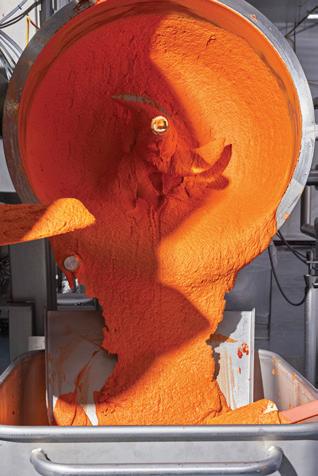
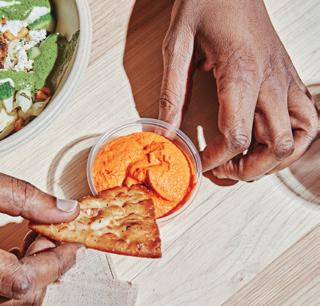
“You’d have restaurants in the same area ordering at the same prices with similar rent and revenue, but there’d be a 400-basis-point delta in performance,” he says. “We needed to be more consistent.”
The question of going public resurfaced at a board meeting in January 2022. That scatter plot was tighter, but the answer was the same—“We’re not quite there yet.”
The company embarked on a non-deal roadshow that summer. Executives met with dozens of public participants to socialize the story around the conversions and gain feedback on the business to help shape the strategy going forward. Those conversations, coupled with ongoing improvements across the
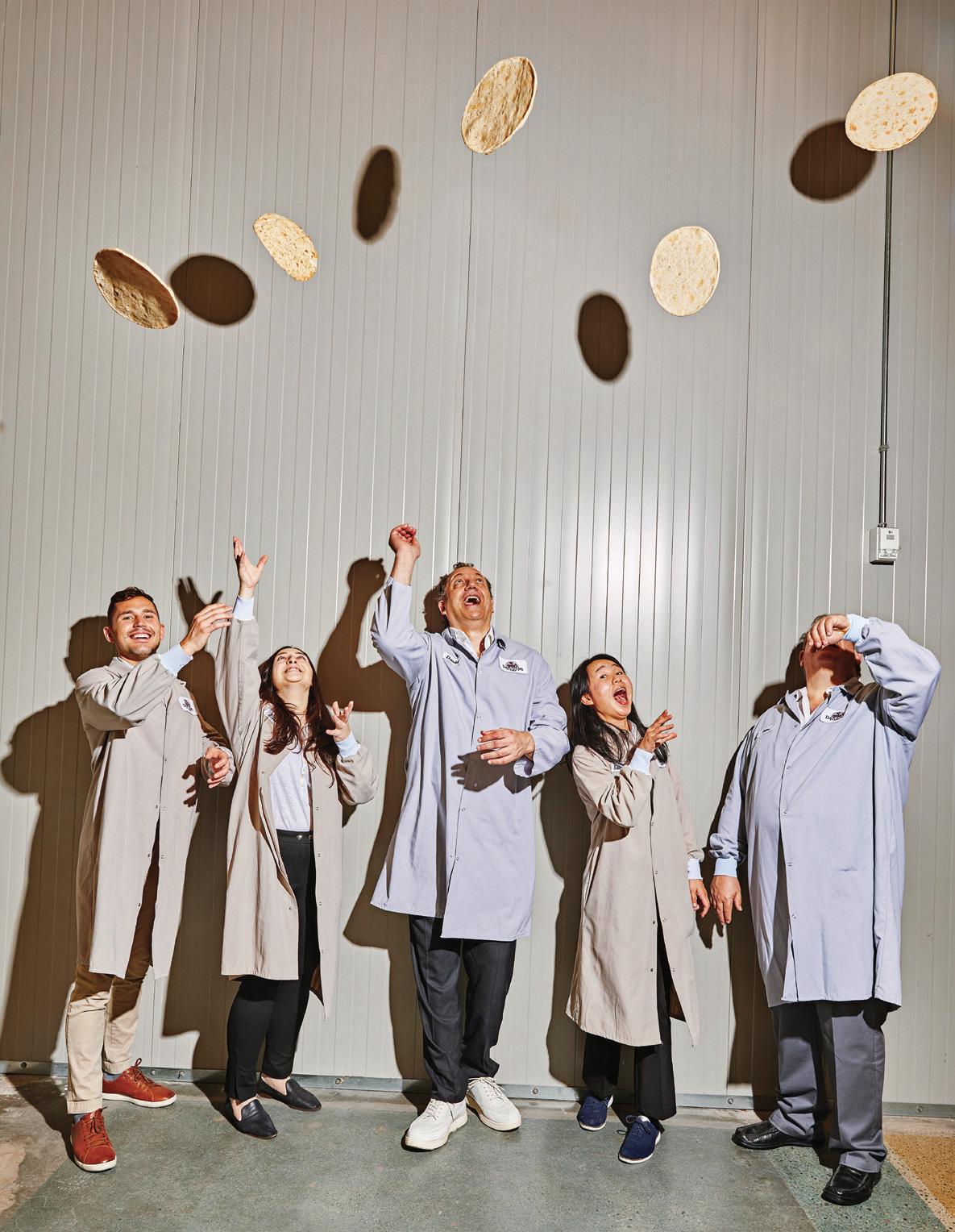

22 JULY 2024 | QSR | www.qsrmagazine.com GROWTH AND DEVELOPMENT
• CUSTOMERS GRAVITATE TOWARD CAVA’S OFFERING OF FRESH FLAVORS AND CUSTOMIZATION.
business, sparked a change of tune when the question came up again at a board meeting in August.
“Tricia and I looked at each other and said, ‘Actually, we feel really good about it,’” Schulman says. “We felt like we were hitting our stride. We’d achieved that operating consistency we were striving for. We had that line of sight into the last conversion in 2023.”
They mapped out a timeline, looking six to nine months ahead toward the end of a rate hike cycle, and began conducting audits, filling out the finance team, and drafting mock earnings releases and public filings. CAVA even staged a few practice earnings calls to give everyone a sense of what it’s like fielding questions from investors.
“We leveraged our board and other team members to get feedback on how we were distilling information and articulating our strategy,” Tolivar says. “For us, the most important thing was working as a team to communicate the power of the brand and what we have to offer so that when we were doing it for the first time live, it wasn’t nearly as daunting as it might have been otherwise.”
CAVA could’ve achieved its five-year plan without accessing additional funding beyond the credit facility it had in place, but there were a few things that made it worthwhile to go public.
“We thought it would bring tremendous awareness to what we’re doing and the food we’re serving,” Schulman says. “It

would really fortress our balance sheet so that if there were any economic challenges on the horizon, we could be steadfast in our strategy of defining the category and building out this national brand, and we could do it the way we wanted to do it.”
The Road Ahead
CAVA netted 153 restaurants from the conversion journey, which came to an end last fall when the last of the remaining 28 Zoës locations reopened under a new banner. It opened 72 stores in 2023, including 28 conversions, and exited its first year as a public company with 309 units in 24 states and Washington, D.C.
CapEx requirements for new builds are now substantially higher for the solo-minded growth brand as it searches for its own properties. But it has an expanded capital base to fund its expansion and a goal of putting 20 percent of its pipeline each year in greenfield markets. There’s plenty of whitespace to plant flags in new territories, including the Midwest. Growth in that region commenced this spring with the first of many planned restaurants for the Chicago market.
A few infrastructure points are working behind the expansion curtain. There’s a new dips and spreads manufacturing facility in Virginia that came online earlier this year. Tolivar says the site, combined with an existing facility in Maryland, will support 750 restaurants alongside the brand‘s CPG arm.
Most importantly, from her perspective, CAVA is cultivating an internal pipeline of leaders it can deploy across new openings. The idea is to sprinkle “cream of the crop” GMs across the country—one per each cluster of eight restaurants—who train and develop new GMs.
“This program is critical to the future success and growth of the company overall,” Tolivar says. “You have to find the right real estate, but if you don’t have the right GM, it doesn’t matter. We anticipate growing at least 15 percent per year, and we want to make sure we’ve got that pipeline of new GMs so that we’re ready to grow and open those restaurants in a very powerful and meaningful way.”
CAVA is targeting 15 percent annual growth as part of a broader goal to reach the 1,000-unit threshold by 2032. Much like the endless customizations presented in the walk-the-line model, it’s going to get there with diversified formats and a playbook written on the customer’s terms.
Prototype innovation in the fast-casual segment has leaned heavily toward shrinking footprints and fewer, if any, seats for in-store dining as more resources shift toward growing off-premises sales. In-store dining still accounts for roughly two-thirds of CAVA’s sales, though, and Schulman sees a chance to win over guests seeking alternatives to pricier casual-dining experiences in a post-pandemic, post-inflationary environment.
“The traditional full-service chain model is challenged to deliver a relevant value proposition to modern consumers, and quick-service is moving away from dining rooms,” he says. “I think that’s creating an opportunity and space in between.”
CAVA is reimagining how it shows up in the dining room with its new 3.0 store design. The latest prototype features softer
CAVA (4) www.qsrmagazine.com | QSR | JULY 2024 23 GROWTH AND DEVELOPMENT
seating, a fresh color palette, and other visual updates aimed at driving greater on-premises traffic.
“In a world that’s increasingly permeated with technology, people still crave that human connection,” Schulman says. “So, we think there’s a real opportunity to enhance our physical experience and grab even more of those full-service occasions in our multi-channel format.”
Ultimately, the goal is to increase access to the brand and improve its adaptability across trade areas. That means offering comfortable channels for customers to get their bowls and pita wraps however they choose. So, while it’s tinkering with the ambiance to drive in-restaurant occasions, it’s also continuing to invest in store models that cater to dig-


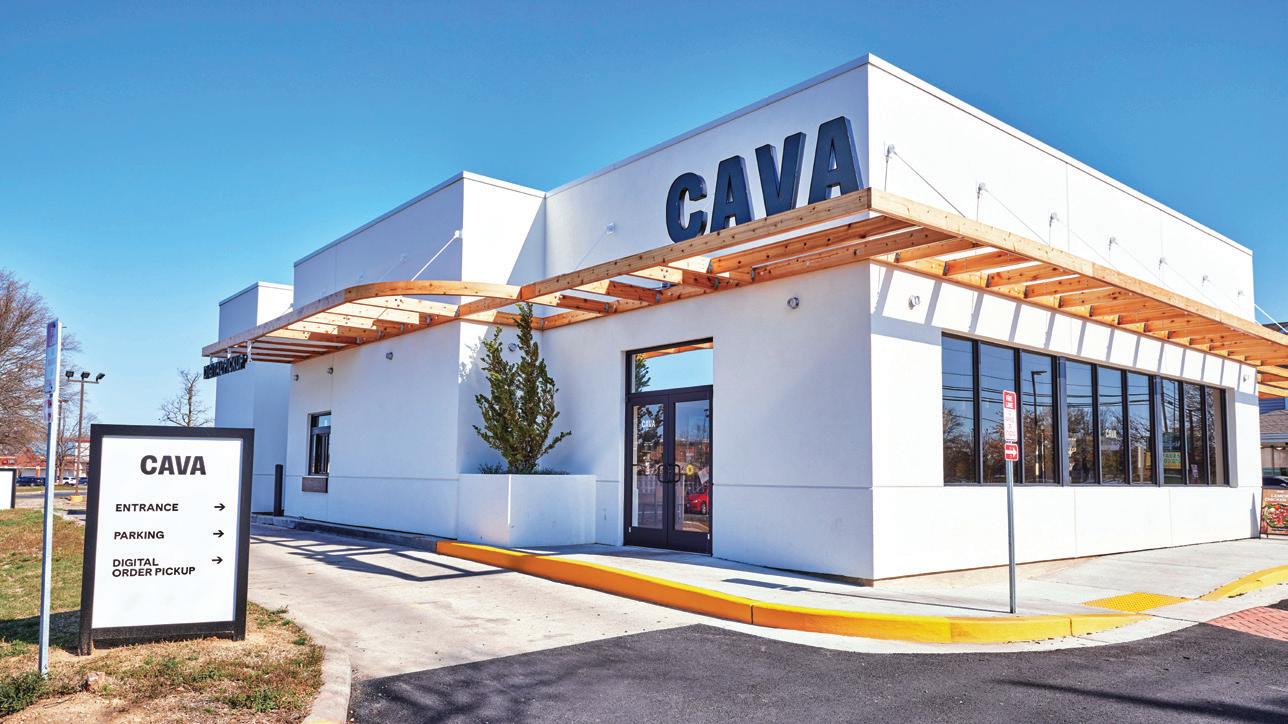
ital channels and off-premises occasions.
About 10 percent of CAVA’s footprint featured digital-order drive-thru lanes heading into 2024. They boast higher AUVs and stronger restaurantlevel margins. The company wants to see them make up a larger portion of the portfolio going forward. Since those sites typically come with higher real estate and construction costs, the priority is achieving cash-on-cash returns exceeding 35 percent, instead of chasing a specific quantity.
Group settings offer another opportunity to meet guests on their terms, and new formats geared toward launching a full-scale catering program are entering the fray. There’s a digital kitchen prototype that doesn’t have an in-restaurant serving line. It’s strictly for digital order pickup and delivery courier pickup, plus catering hub production. There’s also a hybrid kitchen model with a serving line, a digital makeline, and a 300-square-foot kitchen to support centralized catering production.
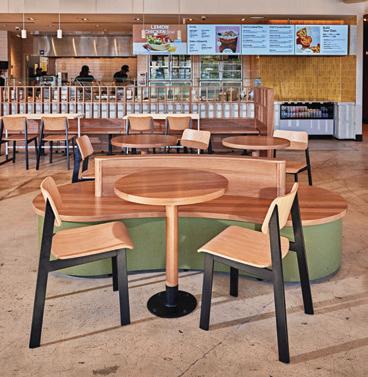
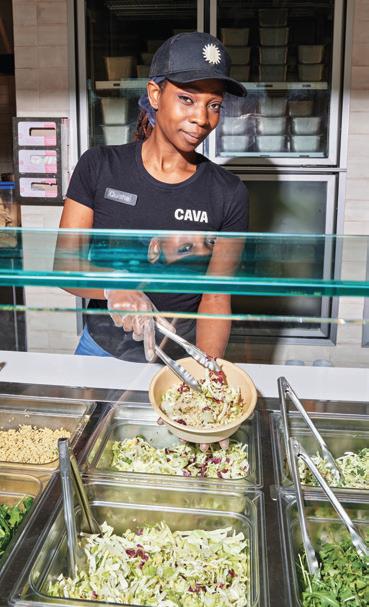
These new formats are just the latest example of CAVA’s constant recalibration amid shifting consumer tides. It recognized the growing adoption of digital tools early on and adapted accordingly, introducing a mobile payment and loyalty app in 2013, followed by dedicated digital order makelines
in 2015. By 2017, an in-house digital platform was established, paving the way for those pickup lanes a year later. In 2021, digital menu boards were implemented, and in 2022, CAVA revamped its digital order platform with a scalable microservices architecture.
This 10-year transformation led to 34 percent channel revenue. Building on that foundation, CAVA is now on the precipice of what Schulman believes will be another decade-long transformation. This time, it’s centered around data. And it’s coming into focus on several fronts.
Enhanced operational data and AI insights are rolling out alongside a “restaurant health system” that gathers real-time guest feedback at the store level. Those tools come on the heels of a new real estate platform with deeper analytics and anonymized mobile data for quicker site analysis.
CAVA is in the early innings of its Connected Kitchen initiative, a multi-year project geared toward making restaurants easier to run. It will focus on exploring and implementing data-driven and generative AI technologies to automate inventory, manage scheduling, and provide guidance on how much food should be prepared or cooked by the day or even by the hour.
The company also is looking to grow its audience of first-party data. Schulman says that’s imperative given the advent of thirdparty privacy regulations. It sees a significant opportunity to use that data to build one-toone lines of communication and foster deeper, more personal relationships with guests as it scales. To that end, it is reimagining its loyalty program with new types of rewards that it hopes will drive frequency, mix, and check. Tests are underway in a handful of markets and will roll out nationwide by the end of the year.
At first glance, this data-centric push toward automation and AI might seem at odds with the original vision of combining heart and hospitality with healthy food that catalyzed CAVA’s success. Technology has a way of making consumer touchpoints increasingly transactional. But Schulman says it all depends on how you use it.
“Using data to empower our team to deliver that hospitality and personalize the relationship with you—I think there’s tremendous opportunity there,” he says. “It’s about leveraging technology to enhance, not replace, the human experience.” Sam Danley is the associate editor of QSR. He can be reached at
CAVA (5)
sdanley@wthwmedia.com
24 JULY 2024 | QSR | www.qsrmagazine.com GROWTH AND DEVELOPMENT
• CAVA IS BUILDING MORE DRIVE-THRUS FOR DIGITAL CUSTOMERS.


THE REVOLUTIONARY QUICK & QUIET™
The biggest breakthrough in blending efficiency has arrived. The new Quick & Quiet™ creates Vitamix-quality blends at least 30% faster than ever before – all without sacrificing the consistency you and your customers demand. Learn more, or find a dealer near you at vitamix.com/faster.


MAKES EVERYTHING FASTER


THEPOWEROFSCALE
/ BY BEN COLEY
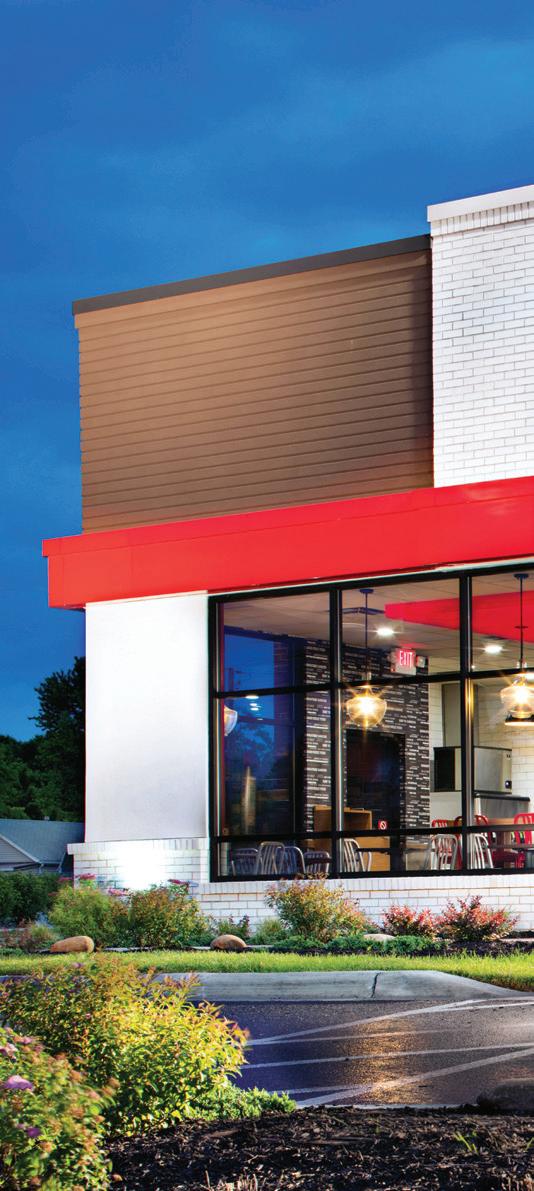
HELMING A RESTAURANT GROUP PROVIDES A WIDER PERSPECTIVE OF WHAT’S IMPACTING THE INDUSTRY. BRIX HOLDINGS (5) CARLOS VAZ
26 JULY 2024 | QSR | www.qsrmagazine.com BUSINESS ADVICE
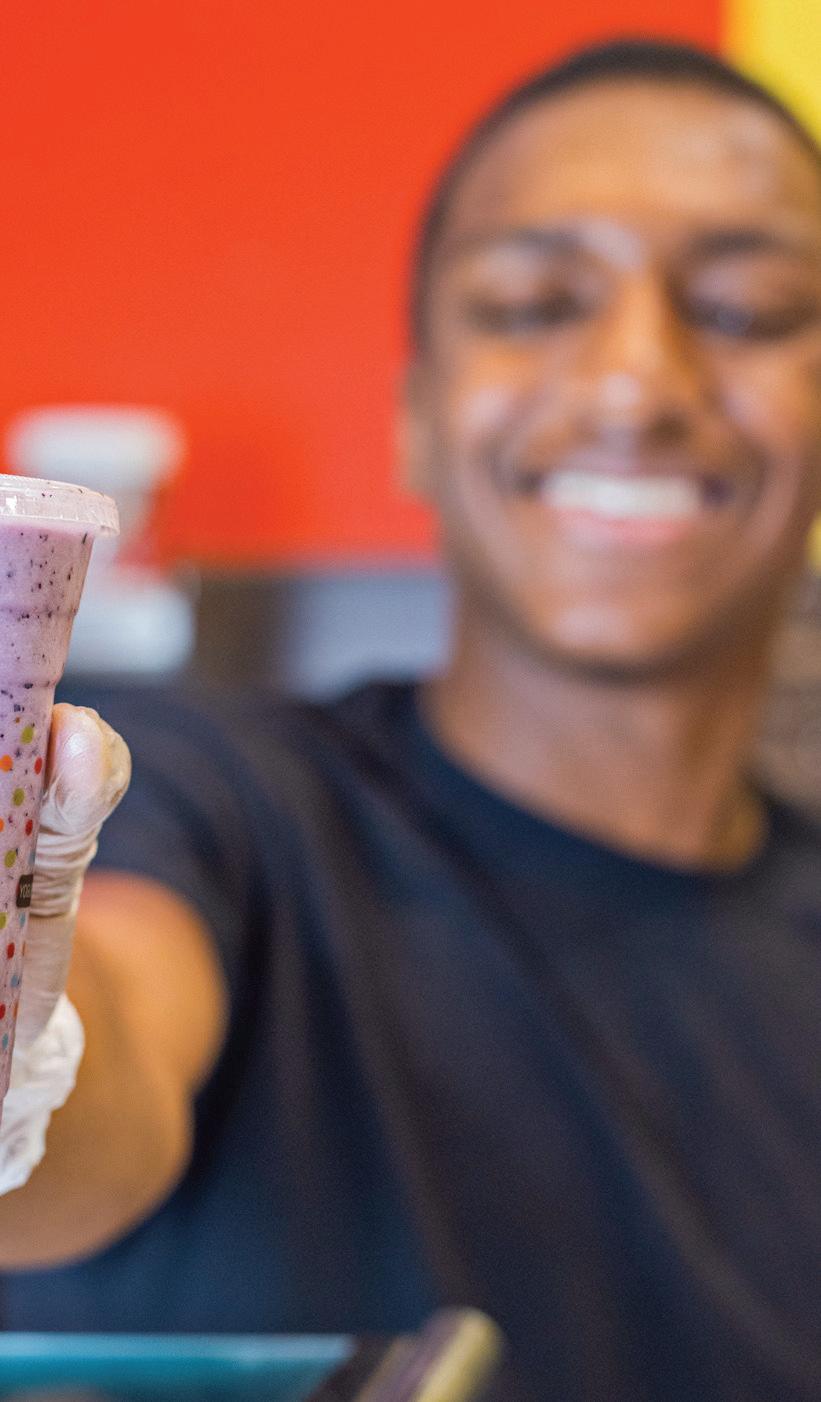

SCALE

Restaurant group leaders share best practices and advice on how to run a company covering several food concepts and personalities.
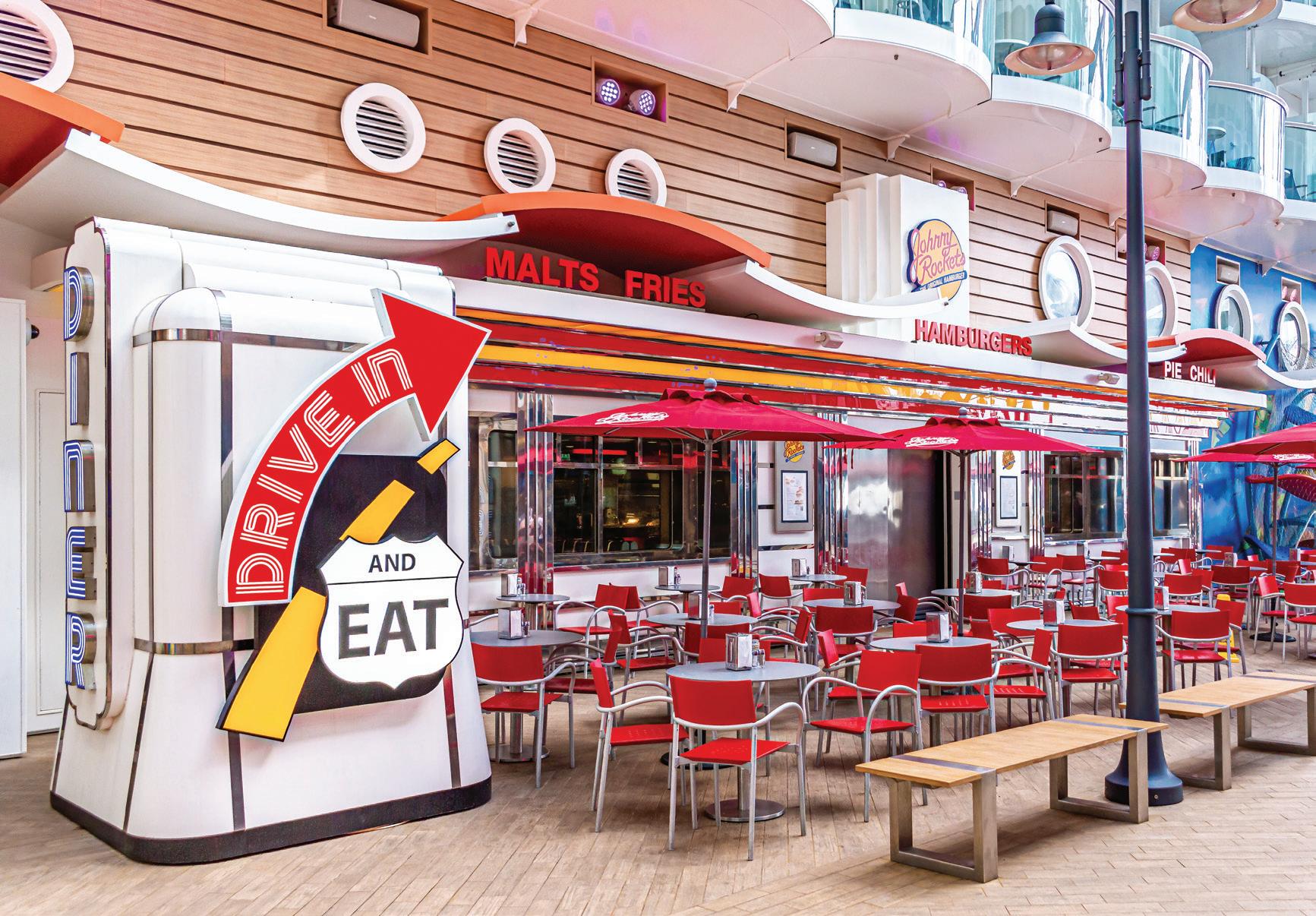
HAIGWOOD STUDIOS PHOTOGRAPHY ADOBE STOCK DARRYL BROOKS
www.qsrmagazine.com | QSR | JULY 2024 27 BUSINESS ADVICE
Brix Holdings CEO Sherif Mityas likes to compare running a restaurant group to skin.
Above the outer layer are the characteristics that make a restaurant unique: menu, food offerings, restaurant design, colors, service model, and taglines. And Brix differentiates by having brand-specific employees responsible for those departments.
Below the skin, the part that guests don’t see, components are a lot more similar across the board. Like a singular technology and finance team that can support all brands in the portfolio. Chains need POS, back-office systems, and loyalty programs, but those can be shared. That’s where the cost savings and synergies come into play.
“That’s the scale benefit we get by being able to supply those things across all the brands with centralized shared services,” Mityas says. “But the things that touch the guests that are visible, you have to make sure that they stay unique, that they’re specific, and differentiated by brand. And we have people that are dedicated to those brands for those types of activities.”
Brix comprises Friendly’s, Orange Leaf, Red Mango, Smoothie Factory + Kitchen, Humble Donut Co., Pizza Jukebox, and Clean Juice. The company is one of many concepts consolidating in the restaurant industry to unlock greater power, scale, and resources compared to one concept going at it alone.
Behind the scenes, FAT Brands is organized into separate verticals (quick service, fast casual, casual dining, polished dining, and a manufacturing business) to create savings by buying in bulk and leveraging purchasing power.
Wiederhorn adds that best practices, like cleanliness, food safety, and recipes, are universal across multiple concepts. When it comes to the brand level, the company relies on its presidents to work with the marketing team to develop specific initiatives.
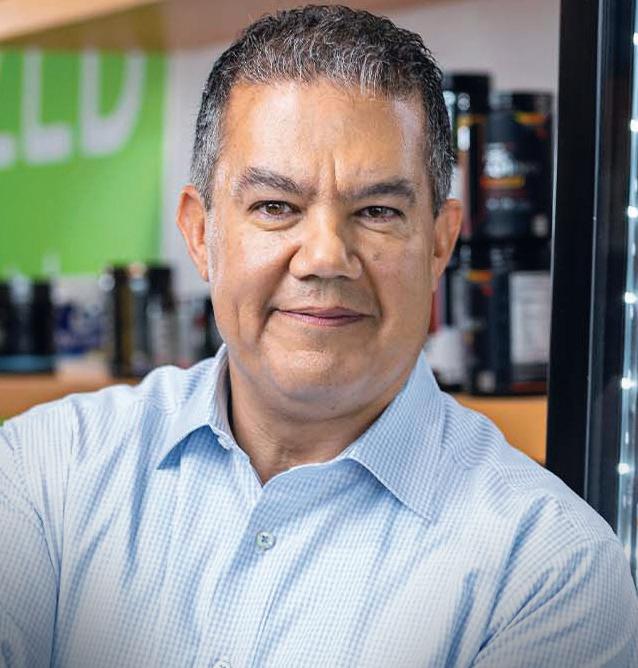
“While there’s obstacles and challenges, there’s also these opportunities to leverage the strength of the portfolio and increase the opportunity for all the brands to get better, to perform better, and to grow because of the strength of the portfolio.”
The obstacles faced by restaurant groups aren’t too different from any single chain, says Mityas. It often goes back to, “How do you create unique experiences for your guests?” And in today’s time, when prices are up, it’s tough for guests to go out versus eating at home. Brands need the complete package to earn a customer’s dollar. From a portfolio perspective, Brix has to worry about that seven times over, considering the varying consumers, targets, dayparts, and occasions for each of its restaurants. Mityas says “It becomes a little bit of a Rubik’s Cube because you’re working with different dimensions of guests.”
“While there’s obstacles and challenges, there’s also these opportunities to leverage the strength of the portfolio and increase the opportunity for all the brands to get better, to perform better, and to grow because of the strength of the portfolio,” Mityas says.
FAT Brands chairman Andy Wiederhorn, who oversees nearly 20 chains across 47 states, 40 countries, 2,380-plus locations, and 760-plus franchisees, agrees with Mityas that customer-facing attributes are crucial in operating a restaurant group effectively. To him, each restaurant must understand what it’s known for and lean into it, whether that’s the best wings, burgers, or buffet. For Great American Cookies, it’s the cookie cakes that many order for their graduation, proms, birthdays, and other special occasions. For Twin Peaks, it’s the 29-degree beer.
“We’re bringing everybody together so they realize that they’re part of a much bigger system and that they can understand the purchasing power and the shared services and things that they can take advantage of,” Wiederhorn says. “So we’ll have supply chain meetings where there’s attendees from all brands and they can all talk about what they need in their brand and what we have going on as initiatives and best practices. But in terms of communicating, it’s usually either the marketing teams or the brand presidents communicating to their brands, whatever messaging is applicable at the brand level.
“We might send out messages about same-store sales or ‘Here’s what we’re seeing in terms of traffic or cost across categories or across the system,’ but not that often,” he adds. “ It’s really more at the brand category level.”
Jay Fiske, president of Powerhouse Dynamics, is familiar with building the behind-the-scenes structure that Wiederhorn and Mityas refer to. He helps run an IoT company that connects devices—oven, shake machines, thermostat, etc.— directly to the internet so that operations managers can easily access the latest information on their equipment.
For more than a decade, Powerhouse Dynamics has worked with Inspire Brands, one of the largest restaurant groups in America. The technology is based in close to 4,000 locations across Arby’s, Buffalo Wild Wings, and Dunkin’. The company started at Arby’s with internet-connected thermostats, which involved installing energy sensors to track HVAC equipment and performance. Powerhouse Dynamics began by rolling out the technology to corporate stores and then expanded it to franchisees. Inspire then approached the company about using the same innovation for its ovens.
Powerhouse Dynamics’ system automatically tracks oven temperatures from the moment food is placed inside until it’s cooked, eliminating the need for manual temperature checks and record-keeping. Previously, kitchen staff would manually monitor and record temperatures, a time-consuming task prone to errors. With Powerhouse Dynamics’ IoT solution, oven data is seamlessly transmitted to the cloud, where it is analyzed and compiled into comprehensive reports. Fiske estimates that his company’s system saves approximately an hour per store per day in administrative work.
BRIX HOLDINGS
28 JULY 2024 | QSR | www.qsrmagazine.com BUSINESS ADVICE
SHERIF MITYAS

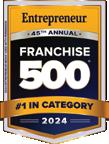
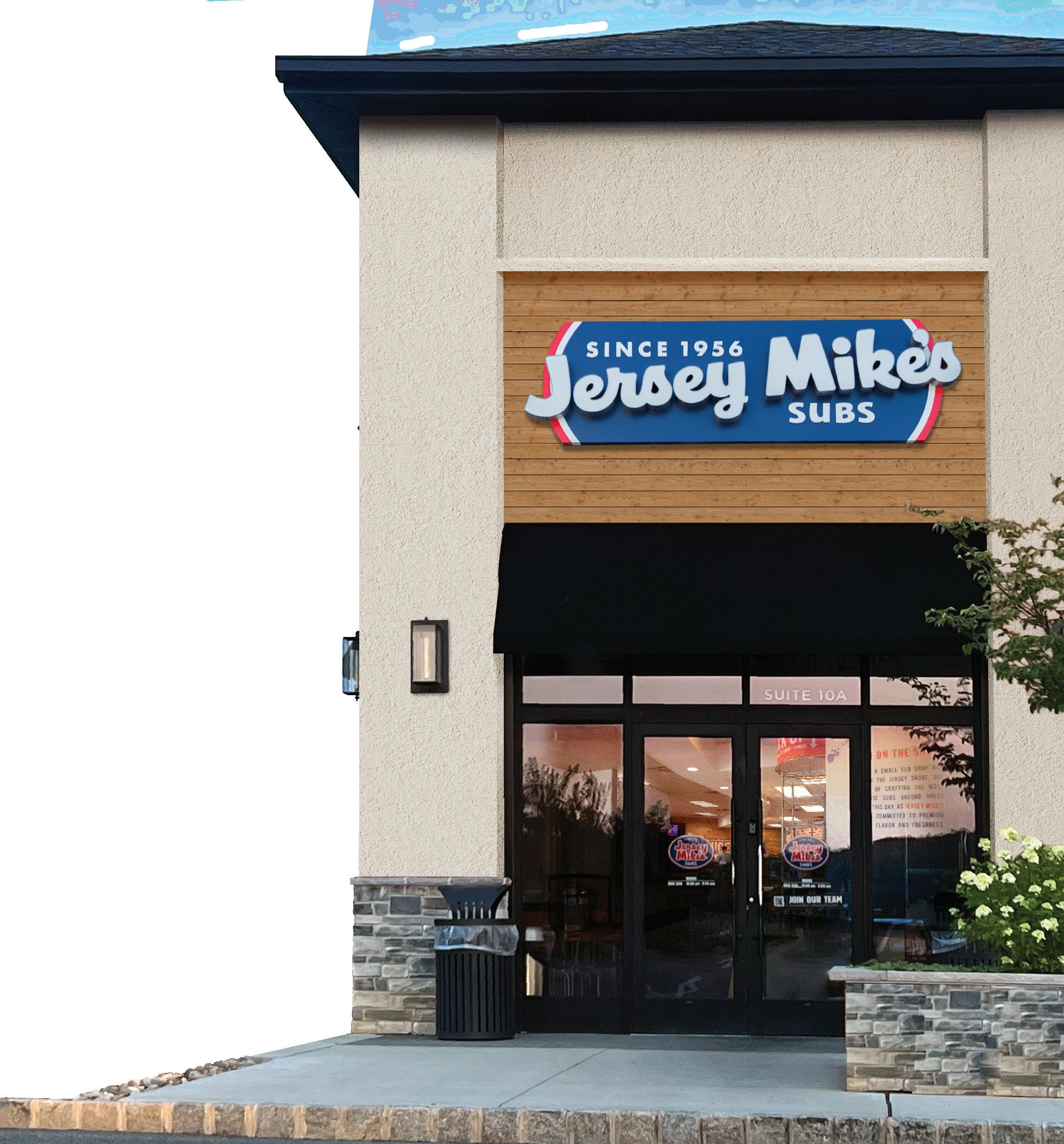

PARTNER? STANTIAL GROWTH! Sub#1 Fast Casual and Sandwich Categories Nation’s Restaurant News America’s Favorite Chains list #1 Fastest Growing Sandwich Franchise Nation’s Restaurant News 11 Years in a row! #1 Most Respected Fast-Casual Brand QSR Magazine Readers Choice #1 Fast-Casual Restaurant Chain Newsweek’s America’s Best Customer Service 2024 Ranking call 732-292-8272 email: franchise @ jerseymikes.com scan: QR code with your cell For franchise information: #2 on Franchise 500 Best Franchises Entrepreneur Magazine 2024 OVER 3,500 & IN DEVELOPMENT STORES OPEN WORLDWIDE! jerseymikes.com FRANCHISE Are you our next a #1 Fastest Growing Restaurant Chain QSR Magazine 2022
Inspire found the technology so useful that it awarded Powerhouse Dynamics with its Maverick Award for Innovation in 2022.
“Margins are thin and there’s a lot of complexity,” Fiske says. “You’ve got high staff turnover. So how can you apply technology to manage this infrastructure in such a way that you let people focus on what people are good at and let technology help take a lot of the burden off of the shoulders of running a restaurant, especially for the multi-site?”
When these types of technologies can be spread throughout multiple concepts at the same time, restaurant groups find it easier to fold acquired chains into the portfolio. The transaction essentially turns into a “plug and play” situation.
Wiederhorn has been involved in several purchases over the years.
FAT Brands began its journey in 2003 with the acquisition of Fatburger. Over the years, the company expanded its portfolio, adding Buffalo’s Café and subsequently launching Buffalo’s Express. In October 2017, Ponderosa Steakhouse and Bonanza Steakhouse were acquired for $10.5 million. This was followed by the acquisition of Hurricane Grill & Wings for $12.5 million in July 2018, and Yalla Mediterranean in August 2018. In June 2019, Elevation Burger was purchased for $10 million.
Amid the challenges of the pandemic, FAT Brands continued its expansion efforts. In September 2020, the company acquired Johnny Rockets for $25 million. The following year saw significant acquisitions, including Global Franchise Group (comprising Round Table Pizza, Great American Cookies, Marble Slab Creamery, Hot Dog on a Stick, and Pretzelmaker) for approximately $445 million, Twin Peaks for $300 million, Fazoli’s for $130 million, and Native Grill & Wings for $20 million. Additionally, Nestlé Toll House Café was acquired in late 2022, followed by Smokey Bones in 2023.
Wiederhorn stresses the importance of selecting proven brands with a track record of success across numerous markets and units. He also notes that FAT Brands typically targets franchise brands for acquisition, citing their scalability and ability to stand independently. However, he mentioned that the acquisition of Smokey Bones was somewhat unique, as the company plans to convert some stores to Twin Peaks and potentially refranchise others. This decision, he explains, was driven partly by the desire to diversify the company’s portfolio with a barbecue brand.
“I made mistakes before where I bought brands that were too small and it’s one mistake or problem along the way,” Wiederhorn says. “Soaks up all the cash flow from that brand. And it’s a bad lease or something else. So that’s something that we always work for today is, if we’re going to make an acquisition, does it have enough scale to make sense for us? Today we’re fortunate that we have so many stores and then we’re looking for, in our case, has it been proven in a franchise model because we’re really a global franchising company.”
Brix Holdings has shown interest in M&A activity too. In April, the group revealed that it reached a deal to acquire Clean Juice, a better-for-you fast casual with 75-plus units and a dozen more in development. That brought Brix’s portfolio to more than 300 locations. However, the restaurant group will have
some work to do as Clean Juice has shuttered a net of roughly 60 stores since the end of 2022.
At the time of the acquisition, Mityas said each of Brix’s brands has a “unique and differentiated position” in their respective sectors, and that Clean Juice is in the same class. The restaurant group plans to support a “renewed period of growth and success” for the fast casual.
Wiederhorn, offering advice to restaurant operators aspiring to manage successful restaurant groups, emphasizes the importance of financial awareness and operational efficiency. He says operators need to have a firm grasp on their financial metrics daily, including revenue, labor costs, and food costs. Waiting until weeks after the end of the month to assess financial performance could result in missed opportunities to address issues promptly.
In addition to financial vigilance, Wiederhorn highlights the significance of analyzing product mix to ensure menu items align with customer preferences and profitability. He also mentions the necessity of investing in personnel, recognizing the critical role employees play in delivering service and maintaining operations.
“You really have to be sensitive to having a relationship and reducing your turnover,” Wiederhorn says. “You need to care about your people. You need to know what’s going on in their lives so that they can feel connected to you and therefore they’re more loyal than just hopping jobs for the next incremental 50 cents or a dollar they get per hour in their wage. So I think knowing your numbers and knowing your people, investing in your people, are your critical steps.”
Mityas knows it’s cliche, but he believes restaurant group leaders must understand the role of assembling a competent and cohesive team capable of navigating the complexities of managing several brands. He notes that companies shouldn’t view acquisitions as mere add-ons, and urges operators to prioritize seamless integration into the existing portfolio.
It helps that Brix plays in both the quick-service and casualdining spaces.
“Because we play across all the segments, we actually believe we have a better understanding of the total consumer of their different occasions, their different daypart needs,” Mityas says. “Basically the reasons why they go out to a restaurant, when they just need to stop in quickly for something, when they’re ready to spend an hour sitting down and having something. And so that knowledge we believe gives us a more complete view of the guests so that we can better personalize the experience across our brands. We can better create menu innovation because we understand something from one concept is probably applicable to that guest in a different concept. And so by giving us basically just more knowledge of the totality of the guests’ needs and their preferences, we’re in a better position to tailor and create unique and personalized experiences for the total guests, not just when they’re ready for a quick-service experience or not just when they’re ready to come and sit down with their family at our Friendly’s.”
30 JULY 2024 | QSR | www.qsrmagazine.com BUSINESS ADVICE
Ben Coley is the editor of QSR. He can be reached at bcoley@wtwhmedia.com



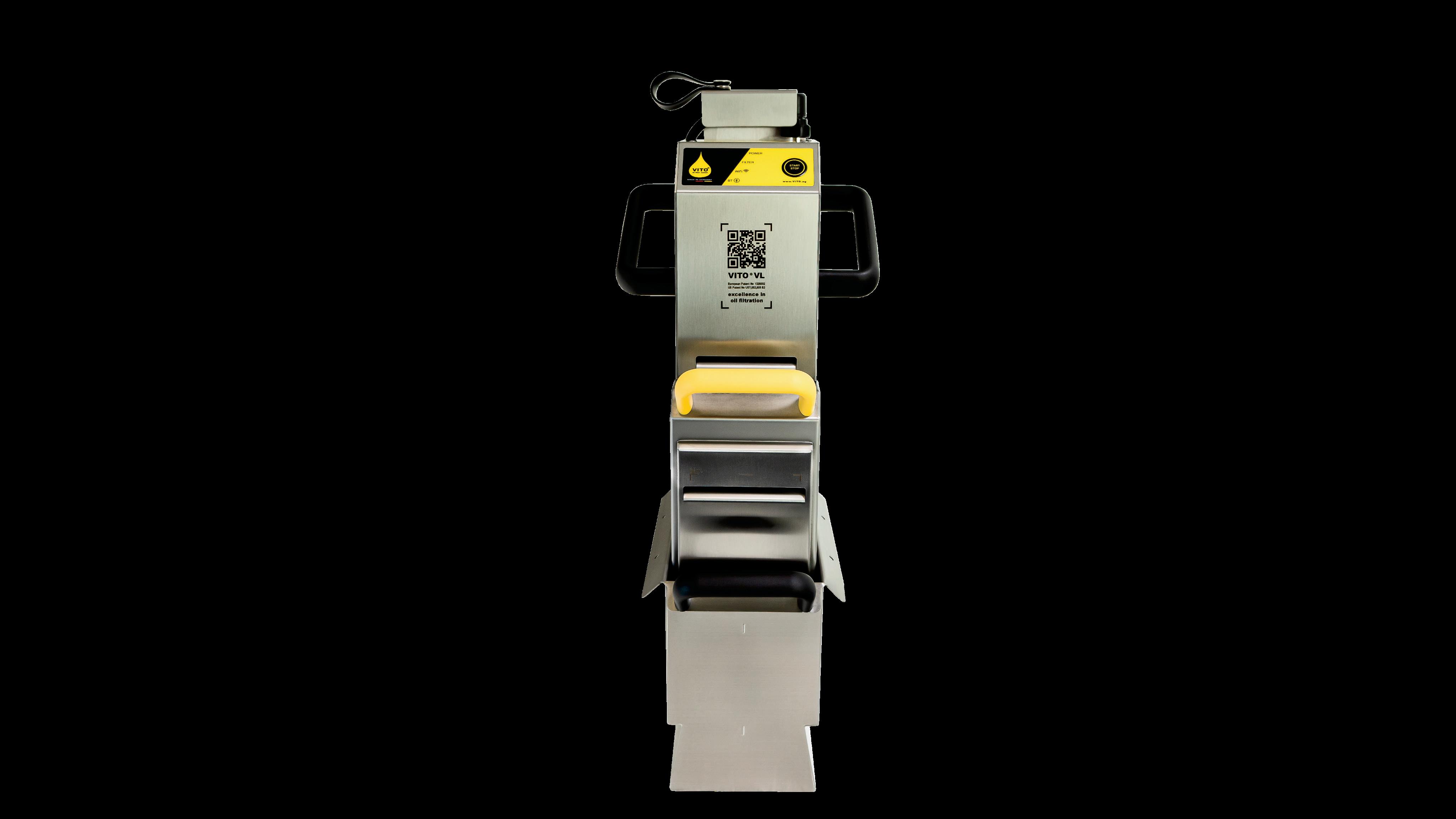









SAY HELLO TO YOUR OIL'S NEW BEST FRIEND FILTER AND SAVE UP TO 50% IN OIL COSTS STREAMLINE LABOR AROUND THE FRYER REDUCE RISK IN THE KITCHEN HANDLE LESS HOT OIL IMPROVE THE QUALITY OF FRIED FOODS VITO FRY FILTER SHOP.VITOFRYFILTER.COM INFO@VITOFRYFILTER.COM +18478590398
 / BY DANNY KLEIN
/ BY DANNY KLEIN
Invest Invested In AND BE
The restaurant market has been volatile, quiet, and complex—somehow all at once— over the past year or so in COVID’s wake. Is stability ahead, or more chaos?
ADOBE STOCK AMENIC181 32 JULY 2024 | QSR | www.qsrmagazine.com FINANCE

PwC said in early January the starting bell was beginning to sound for M&A. It also acknowledged the country was slogging through “one of the worst bear markets for M&A in a decade.” The puzzle was a convoluted one, mainly drawn by inflation, interest rates, and difficulty accessing capital to fund growth. The climate, broadly, made it challenging for many brands to generate profitability through high-cost measures, like commodities and building materials. In all, it depressed valuations, which made it appear wiser to wait things out.
PwC’s thought, however, was decelerating inflation and expected reductions in interest rates, along with pent-up demand for (and supply of ) deals could tip the scales later this year.
In this special report, we’ll touch base with some of the restaurant industry’s top thought leaders in the investing arena to take their pulse on the current state as well as what could be coming next. Additionally, we’ll explore how brands can position themselves to partner with investors and what they need to check off before taking that leap.
THE STATE AND SETBACKS
There are a few converging factors mudding the growth proposition, says Lauren Fernandez, CEO and founder of Full Course, a restaurant industry incubator and accelerator of early stage brands. You could start with the high interest rates tied to construction lending. It’s also true for general business lines of credit. These rapid rate hikes, she says, did nothing to support banks wanting to lend because they weren’t sure when things would level out. “So like many investors in this space,” Fernandez says, “they were just waiting to see what’s going to happen.”
That lack of lending action showed up in different places for restaurants in 2023. Big deals slowed since private equity firms didn’t want to buy and sell without leverage. Large bank offers were hit by unfavorable interest rates. And, in turn, activity grinded to a halt.
Andrew Smith, cofounder and manager partner of Savory Fund, a group that oversees 11 brands, says 2023 was the toughest year over the last 15, even more so than 2020 or 2021. “I think a lot of people kind of felt like, gosh, what is this next phase in the F&B industry? And all I would say is from a Savory standpoint, our team, our leadership, will be the first to say that we are extremely excited and bullish about the future. We feel like the future is going to be better than the past.”
www.qsrmagazine.com | QSR | JULY 2024 33 FINANCE
Fernandez agrees with PwC on the point of there being a backfill of demand and people sitting on the sidelines ready to go when money starts moving.
So does Pete DiFilippo, principal at C Squared Advisors. “The state of financing for restaurants is varied,” he says. “National tier 1 brands with solid operations should not have trouble finding a finance partner. Lenders and nontraditional capital sources are hungry for deals after a particularly slow 2023. Those operators in regional or less established brands continue to face more challenges when seeking financing as capital providers are being more cautious with structure and terms.”
Erik Herrmann, partner and head of investment group at CapitalSpring, thinks the current landscape has to be viewed through the tumult of the past few years. In some ways, as tepid as it was, 2023 was the first glimpse of a “new normal” since 2019. This coming year is similar minus one caveat—the commodity and labor environment (outside of California) is relatively stable. However, the consumer outlook is weaker than it’s been thanks to inflation and challenges with discretionary spend. “I think a lot of the concepts that we invest in are differentiated—they’re going to market based on value and convenience,” he says. “They’re decently well insulated but not immune from that consumer dynamic. So I think it’s probably a year of net headwinds for the industry after a year of normalization in 2023.”
“ In many ways, you need to be thinking about 2025 as the next buying year for banks. I think there’s been a massive repricing of risk.”
-ERIK HERRMANN PARTNER & HEAD OF INVESTMENT GROUP CAPITALSPRING
“I think it just makes your work harder to grow or to refine your model,” Herrmann adds. “To find ways, whether it’s making it more efficient, or reduce the development costs so the units can still generate attractive returns. It’s just tougher today. But it really hits you from all sides.”
Chris Elliott, CEO of FSC Franchise Co., owner of Beef ‘O’ Brady’s, The Brass Tap, and most recently, Newk’s Eatery, says, by and large, M&A has lagged along since COVID. He believes it will gain momentum in 2024.
“From a private equity standpoint, there’s a lot of dry powder, meaning, there’s a lot of people that are looking and have money to spend,” he says. “Sellers are getting better valuations and are looking to make a deal. If we get some favorable news from the Fed on interest rates, that will be a positive indicator to the market that now is a time to consider M&A. The biggest obstacle to deals in 2024, will be agreement between seller and buyer on valuation.”
“ From a private equity standpoint, there’s a lot of dry powder, meaning, there’s a lot of people that are looking and have money to spend”
-CHRIS ELLIOTT CEO FSC FRANCHISE CO.
There’s also the presidential election to consider, “which is going to be off the Richter scale in terms of craziness,” Herrmann adds. “In many ways, you need to be thinking about 2025 as the next buying year for banks. I think there’s been a massive repricing of risk.”
Herrmann says the country lived in a world, for a decadeplus, of money being free. Interest rates and inflation hurt the model. And because the cost to build a store goes up, labor costs are higher, materials cost more, so does financing, and as a result, the path to accessing and deploying capital changed. An operator just might not build that incremental site in a B-plus trade area they would have before given how much more they need to pay in what was once a more affordable equation. “You used to be able to borrow money for 4–5 percent. Today, that same loan is probably 8–10 percent,” he says. “It’s a challenge. Then, on the investor side … you just don’t have the financial engineering benefits because of where the rates are.”
Elaborating on the notion of this affecting segments differently, Fernandez says mid-sized brands with multi-unit developers in their franchise systems, those who wanted to grow themselves, have struggled to access mezzanine-level debt. Or interest levels were so high economic models got strained. That stalled growth, too. “A very easy example of this,” she says, “is think of when you’ve got a multi-unit franchisee whose got a 10-pack deal and they’ve signed three leases for the year. What happens to those leases into the brand as a whole when those three units can’t open because your franchisee cannot get debt from a bank? This is happening in real time.”
Morven Groves, a managing partner at 10 Point Capital, which holds investments in Walk-On’s, Slim Chickens, and Smalls Sliders, relayed the idea interest rates slowed M&A, “with the greatest impact seen in the middle of the market.”
“The impact on the highest-growth brands is less,” she says, “given that they typically need more equity. The deals that are getting done are using less debt—and more equity—with the intent being to refinance the debt in the future as rates come down.”
Going down the ladder, Fernandez adds the market deeply impacted emerging restaurants—the field Full Course thrives in. There was a higher number of “really solid” businesses, she says, operating on non-cash reserves who were unable to pay for their next level of development because, again, they couldn’t get debt. And they depleted cash to perhaps meet some development obligations signed previously, or to overcome hurdles
ADOBE STOCK / BOYKO.PICTURES 34 JULY 2024 | QSR | www.qsrmagazine.com FINANCE





TOP IT OFF WITH crispety, crunchety, peanut-buttery!® premium DESSERT INCLUSIONS
BUBBLE MILKSHAKE MADE BUTTERFiNGER pieces Butterfinger® Pieces, Available in 3 lb. bags & 25 lb. case. Call (800) 408-1505 for more product information. ®
Ferrero S.p.A.
like paying back PPP or EIDL out of COVID.
“The overall snapshot I would give you is the growth of the industry, while being pushed by outside forces like population growth and consumer demand—which has not really deeply slowed down post-pandemic, except for very recently with some inflationary behavior—that demand is not necessarily being met at a pace that the market wants to meet it with growth and development because banks are not necessarily lending,” Fernandez says.
In some respects, it’s been a market ripe for investor-operator partnerships. If funding isn’t available in traditional markets, the lack of runway will always send growth-minded brands elsewhere.
But there’s more to that, Fernandez says. One of the trends the space witnessed, especially in foodservice, is the understanding that not all money is handed out the same. Fernandez has been both a multi-unit franchisee and brand developer, serving as a strategic growth partner for companies such as Chicken Salad Chick. Before forming her own companies, she was general counsel at GoTo Foods (formerly Focus Brands)
So all those stressed pathways of restaurant operations, from supply chain to labor, Fernandez can offer help and insight as well as a paycheck.
The landscape of banks not lending tends to encourage some unique behavior, she continues. Things like seeking venture capital, crowdfunding, trying to IPO. Fernandez cautions, in all those cases, to make sure there’s an understanding of what each option actually costs. Audits, quarterly reporting to the SEC, shareholder meetings, PR firms, and so forth.
“There are several challenges operators face as they are searching for the right financing partner,” DiFilippo chimes in. “Many have experienced significant fluctuations in their COGs and labor over the past two years. Commodity prices have increased rapidly and at a high volume in some cases. Minimum wage increases and the legislature surrounding it have also affected many restaurants and franchises. These fluctuations in many cases continue to have a great impact on profitability and stressed cash flow.”
But like PwC, throughout the industry, DiFilippo says many expect Feds to lower rates throughout the year. Operators gearing up for investment must evaluate their operations and profitability ahead of the changing tide. “Franchisees should focus on controllable aspects of the income statement. COGS and labor should be at the forefront of this discussion,” he says. “Consider the inventory and ordering practices of your management team. Are there areas that can be improved to save time, expense, and waste? Look for ways to reduce or eliminate costs and increase cash flow.”
Michael Schatzberg, cofounder and co-managing partner of Branded Hospitality Ventures, an investment and advisory platform with over 25 years of experience in the industry, says a lot of companies cycled through cash last year as they tried to meet growth targets. And valuations were crushed. It’s not entirely a bad switch, he says, given some of the go-to-market runs in recent years were simply not realistic. You’d see companies with $1 million in sales raising money at $100 million valuations,
Schatzberg shares. “It’s not sustainable,” he reiterates. Yet despite headwinds, the pool of brands looking to expand does warrant accelerated activity. A changing palate of consumers spawned brands like CAVA (which went public in June and raised $318 million), in one instance, to support capital infusions. “I think we’ve also seen a prioritization of what operators are really thinking about,” Schatzberg says, referring to some of the technology whitespace, everything from inventory to procurement to digital omnichannel ordering systems. “I think a lot of people are probably on a wait-and-see side,” he says. “Do I want to retrofit my restaurant for total automation? Or am I thinking about when I’m designing a new restaurant to maybe implement within the new design some room for that type of thing. But I think there’s some real low hanging fruit on automation like self-pouring beverages.”
THE OPERATOR ANGLE
If you fall into that camp of wanting to find an investor, Fernandez starts with one piece of advice: don’t wait until it’s perfect. “Just be ready and prepared to show and explain,” she says. It’s a bigger red flag from her perch if an operator is unwilling to show their books than if they can explain what’s going on, good or bad.
Schatzberg says being too early and too late can often feel the same. Namely with technology—a space the group invests heavily in—it’s not always about the merit of the idea, but rather if the timing aligns. So does the brand (or solution) fit a pressing need? Investors, he says, can generally identify that and figure out the rest. “There’s certainly a lot of money on the sidelines right now in this country,” Schatzberg says. “But I think if you have a compelling story and your company is doing good things and you’ve got a good pipeline and you are growing, you’re getting the funding you need.”
Groves says investors like 10 Point Capital want to quickly understand the brand, its sources of differentiation, and, ultimately, the growth outlook.
“Having an easy-to-follow data packet with unit-level information—economics, location profiles, ownership, etc.—and information about the brand/company more generally, like management team, guest feedback, brand positioning, makes it easier for a possible partner to engage,” she says. “Taking this step ultimately protects the management team’s time, allowing them to spend real time with only serious potential partners.”
And to be blunt, Fernandez continues, the most common holdup is many brands simply don’t realize what their options are.
No. 1, investigate the landscape out there, which Fernandez says falls into three buckets:
Debt options; equity options; and grants or sponsorships/ scholarships. Minorities, socially economically disadvantaged individuals, and veterans generally have access to capital or can subsidize debt Fernandez feels would be a better decision before deciding to give up equity.
The danger she often sees is people gravitating to the equity
36 JULY 2024 | QSR | www.qsrmagazine.com FINANCE
YOUR FOOD DESERVES
Packaging That Performs
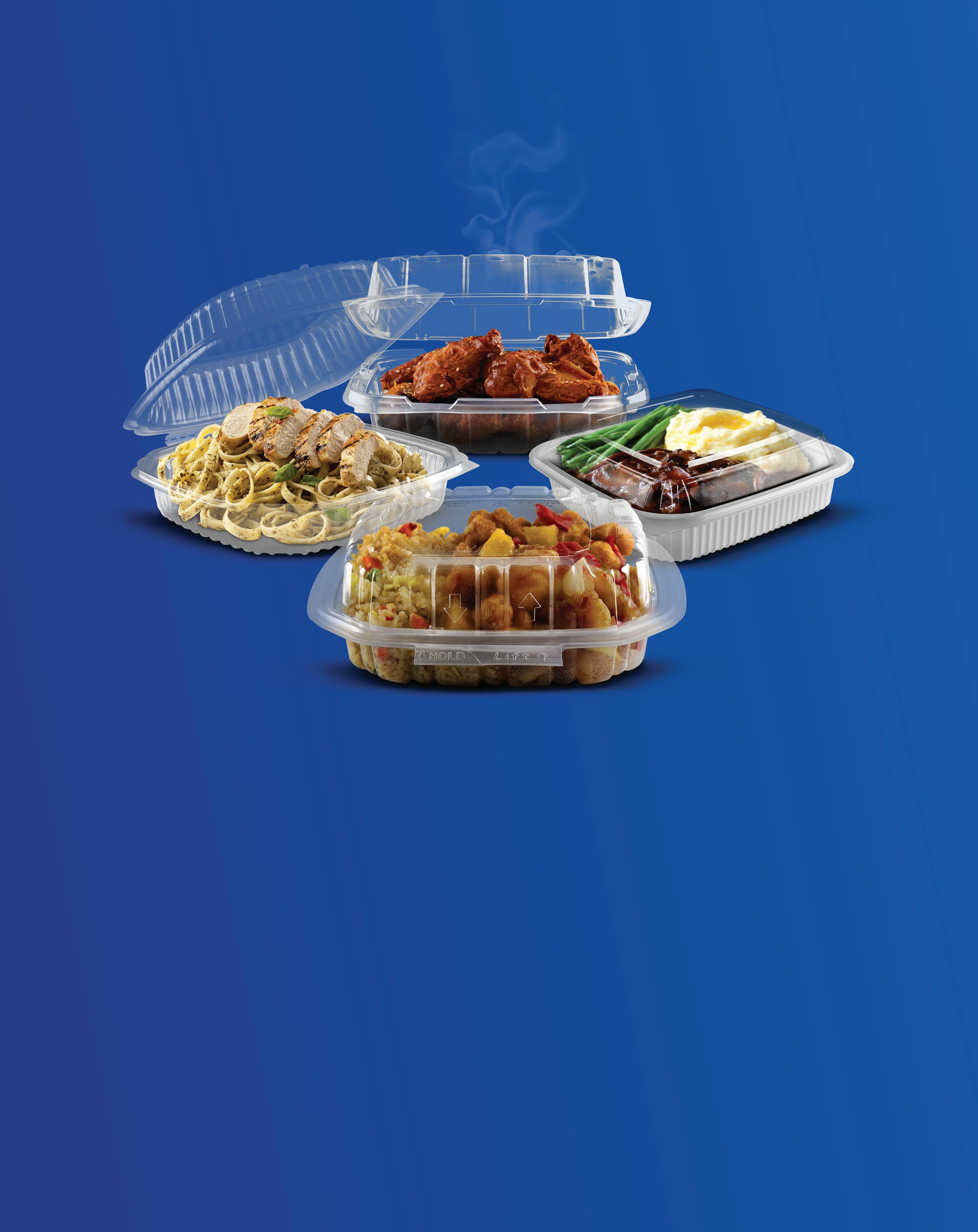
CULINARY LITES®
Versatile sizes, create visual appeal that sells
CRISP FOOD TECHNOLOGIES® CONTAINERS Keeps food hot & crispy for 30 minutes on the go
CULINARY SQUARES® Two-piece perfect for fresh-serve, hot or cold case
CULINARY TAMPER-SAFE™ Tamper-Evident Solutions Secure Sales
ANCHOR PACKAGING DELIVERS FOR YOU
DINE-IN QUALITY TO GO
Keep food hot & crispy for 30-minutes on the go, maintain presentation, and provide tamper-evident security to serve a great food experience.
PROTECT PROFIT
Clear lids prevent costly order errors, compartmented packages control portions, and enhanced ventilation and secure closures help avoid costly comps and win great reviews.
PROTECT CUSTOMER EXPERIENCE, TOO
Leak-resistant closures, re-closable lids, secure stacking, and multi-compartment design options protect presentation and food quality.
REDUCE WASTE, NOT TASTE! Superior performance protects food quality to prevent waste Consumer reusable and recyclable after use.
SAMPLES FREE
Reusable. Recyclable. Made in the USA.
Reusable. Recyclable. Made in the USA.
PFAS-FREE & BPA-FREE - ANCHORPAC.COM ©2024 Anchor Packaging® LLC - St. Louis, Missouri
route and making that play too early. “What I always explain to people is you get one bite at that apple,” she says. “If you give up a majority controlling interest of your company too early, you’re not going to get the real value out of it, not just because you reduced your share, but because you only have once chance to sell that equity for value.”
“And if you sell it too early, the value on the company is going to be very low, right?”
Herrmann concurs. “You really only have one opportunity to introduce the business to the market,” he says. “And so, you have to put in the legwork and pick your moment, so to speak. You go out with middling performance or your unit-level economics aren’t there or growth has been lackluster, it’s going to obviously impact your brand in terms of evaluation, level of interest, the terms you might get. … You want to pick that moment when you can make your best case to the investment community that you have something special. More foundationally, you obviously have to have a concept that works. You have to have a differentiated positioning to the consumer. It should translate to healthy to above-average unit-level economics because any investor looking at a business regardless of whether it’s quick service, fast casual, or full service, is going to say ‘OK, what are the unit economics thereafter, right?’ And I think having a differentiated concept will eventually manifest itself in unit economics.”
The general rule of thumb: wait for equity until you’ve appreciated book value in the business and unlocked some of that enterprise value and there’s clear space for growth. This way, Fernandez says, an investor will see and understand what the brand is worth—and could be worth—in a way they can help subsidize.
Beyond the timing, though, she can’t stress enough how much unit-level economics matter as much as the top line. “How the parent company roll-up looks on the financials is important, how much headcount you have, how smart you’ve been with your spend, but it also matters that you’ve fixed the unit-level economics and I cannot tell you how many times I see brands trying to grow to make more money,” she says, “instead of trying to fix the things that are broken about their profitability. And it’s shocking to me that people try to sell franchises all the time for brands that don’t even show a profit.”
If an operator can’t prove the business model works, why would an investor buy in, or a franchisee for that matter?
DiFilippo echoes the point. “Understand any challenges and hang-ups throughout operations. Be prepared to explain any new initiatives, promotions, or management projects on the horizon,” he says. “Gather and review contracts, agreements, and leases in preparation for a capital event. Most of the time operators can leverage equity within their current network to position them for the upcoming investment. Speaking with trusted advisers can also provide valuable feedback and information as these partners see numerous transactions a year and can provide insights into the current marketplace.”
Fernandez notes unit-level economics are sometimes a matter of being able to decipher what’s in front of you. Put things on the books for stores that are necessary to running the business.
From a more holistic standpoint, the restaurant industry has long been one navigated on guts and passion. That flows both ways. Fernandez says she’ll talk to interested parties who begin with the food. “OK,” she says, “well, let’s start with the numbers.”
Groves says a concept, once its financials are tight, also needs to resonate with today’s guest. It’s likely those two things go hand-in-hand if the brand is making money. It’s not always true the other way around. The food must win in the segment it plays in and be core to the restaurant’s identity. “We find that this passion and clarity of purpose helps brands navigate and prioritize the multitude of decisions that need to be made as the brand grows in new markets and with new franchisees and team members,” she says.
Shauna Smith, CEO of Savory Fund, adds it needs to start with an “it factor.”
“There has to be something that has drawn us to it and also customers and guests because we need to be able to see that visibly in the numbers,” she says. “We absolutely need to see that. And when I think about what attracts us and who the best candidates are, it really is first that it factor. Also, that there’s a lot of whitespace for whatever this product is. There’s an opportunity to bring this product to the masses. So maybe they’re in one geography or two geographies at the moment in time where we invest.”
Herrmann says CapitalSpring gravitates toward brands with a “unique mousetrap. Something that’s working well and working better than its competitive set.”
“You have to start with having an understanding of what you’re trying to accomplish,” he says. “Because there are so many different permeations out there. People don’t always know, and just the process of going out and talking to people becomes a way to figure out what you want to do.”
Operators, Fernandez continues, especially those involved on the ground level, need to understand who they are and what they want to do; where their strengths are; and the job duties they’d be better off handing to somebody else. It’s an industry anchored with people, Fernandez says. It’s personal. “Not to be denigrating,” she says, “but if you’re not clear about what it is you want as a founder and what you need as a business partner, No. 1 you’re going to partner with the wrong person. You’re going to end up with a private equity firm who maybe provides zero support or an angel investor who maybe provides too much support and maybe debt that’s not the right thing for you. I think being very sharpened and very real about your limitations as a founder, what you need to hand off, where you need support, where you want the company to go, are all very important things to making sure that you pick the right partner to sit next to you at the table.”
Fernandez suggests operators ask themselves if they’re wearing a lot of hats. The answer 100 out of 100 times is “yes.” So what are the top five you hate putting on? “And 99 percent of the time they want to hand off things they’re neither qualified nor like doing,” she says. “And the reason they have friction is because it’s hard for them to do it because it’s either not a natural skill or they have no experience in it.”
38 JULY 2024 | QSR | www.qsrmagazine.com FINANCE

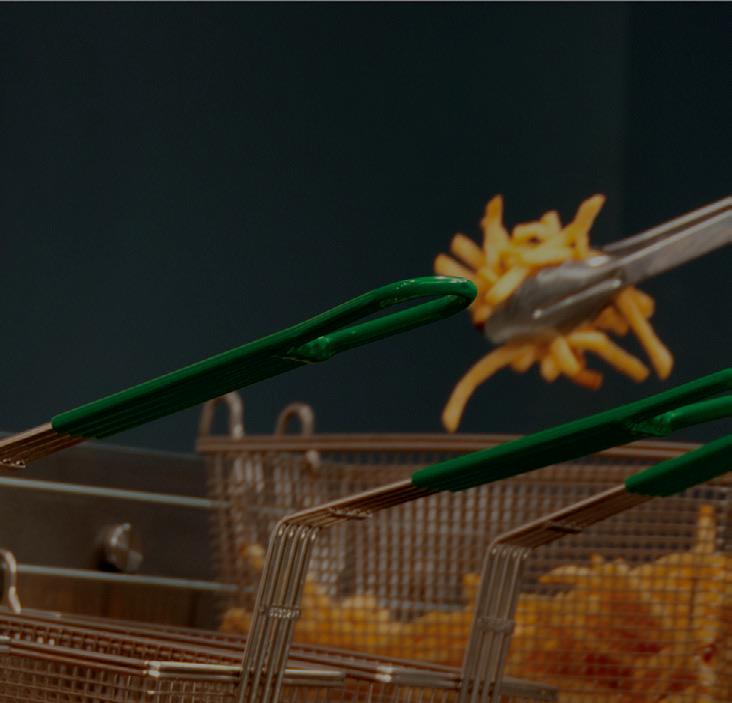
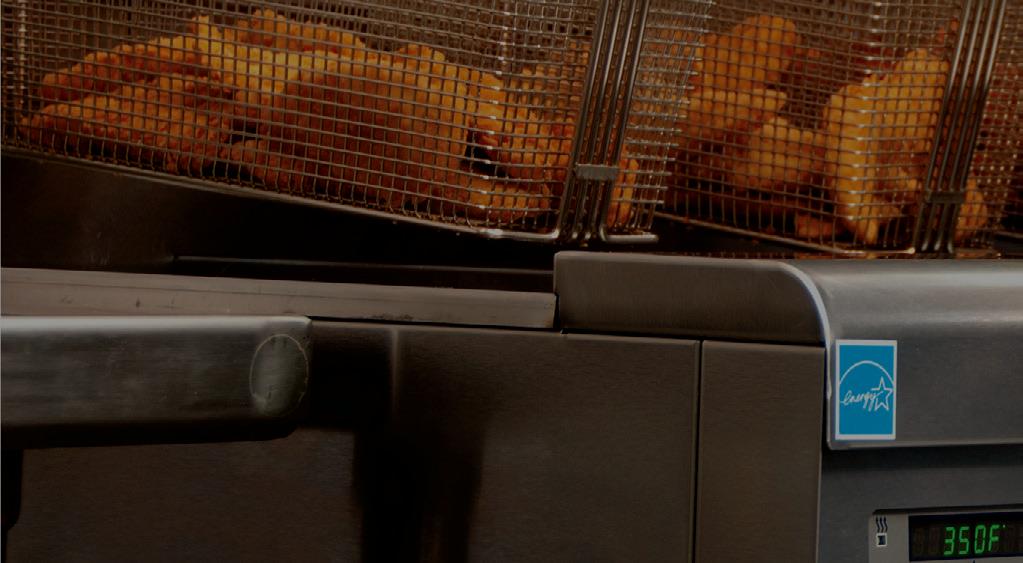
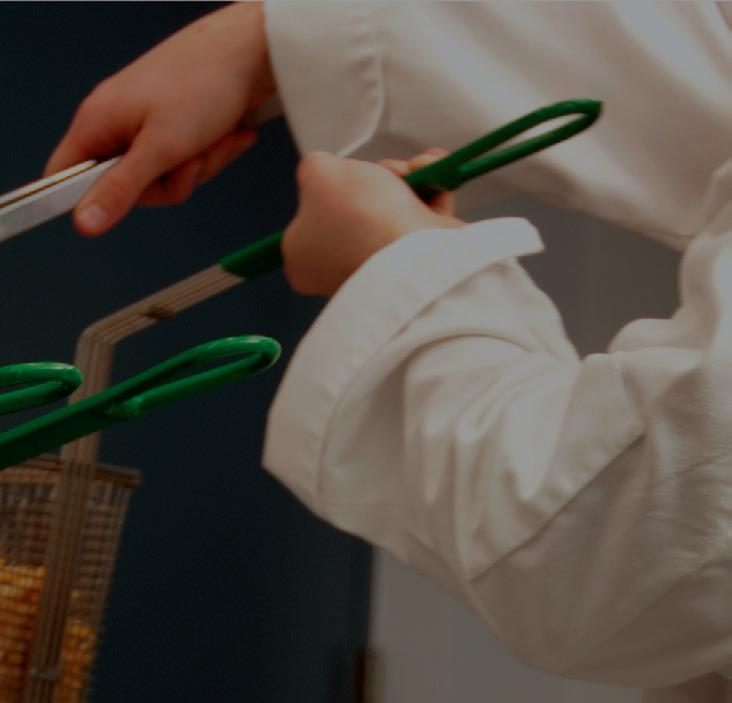
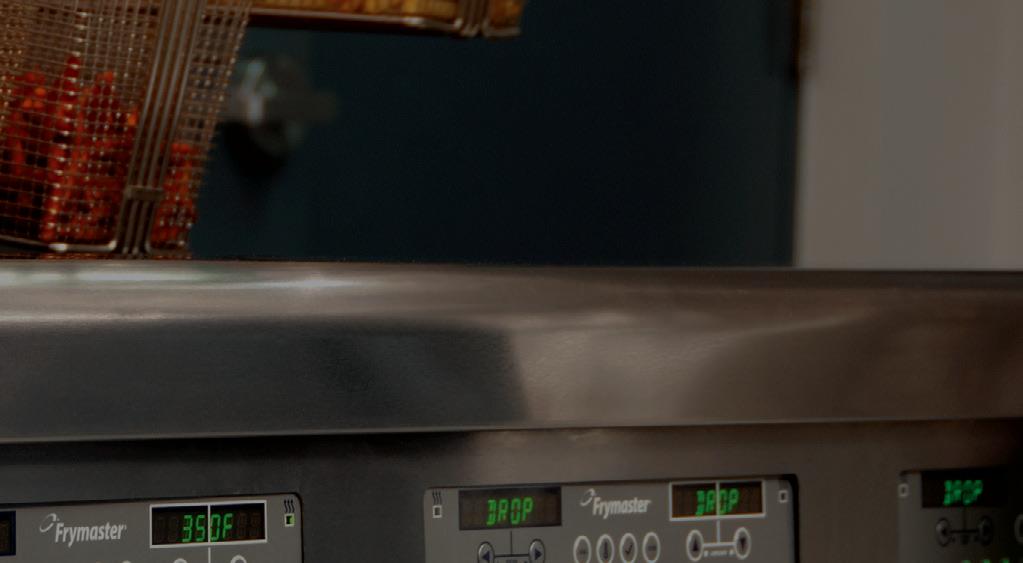



WE FIT THE WAY YOU FRY™ WHAT ARE YOU FRYING? 14 fryer families with over 100 fryer configurations Value, high performance, or high efficiency
and electric Open pot and tube style
to 120-lbs. frypots Single and multiple batteries
to high-sediment Built-in filtration, fully automatic filtration, or no filtration Single temperature control to intuitive touchscreens with advanced features REGARDLESS OF THE ANSWER, WE’VE GOT YOU COVERED! VISIT WWW.FRYMASTER.COM TO LEARN MORE ABOUT OUR PORTFOLIO OF FRYERS
Gas
30-lbs.
Low-sediment
Rethink it as, if you could use 100 percent of time and focus and service to the company, where should it be? Then get help everywhere else.
Herrmann shares CapitalSpring saw 600 opportunities last year. Flip that script. “What they don’t understand,” he says, “is there are 599 other people we looked at. So understanding that you’re going to need to view it through a comparative lens. You may not have that context because it’s your own business.”
At least for Fernandez, this dovetails into also knowing when to walk away. If a founder thinks they can do it all themselves and just wants money, it’s a hard no for her.
“Because you’re asking me to invest in what would be normally a high-risk investment, so early stage, we have a formula and a process to protect you and our investors and if you don’t participate in that process and accept our help, we’re not writing the check,” she says. “It’s too risky.”
“ There has to be something that has drawn us to it and also customers and guests because we need to be able to see that visibly in the numbers.”
-SHAUNA SMITH CEO SAVORY FUND
with whom they can be aligned.”
Smith agrees with a notion Fernandez brought up earlier—that things don’t have to be perfect. She wants to see a growth-minded team where “humility is a huge component.”
“Hard-working people who have been scrappy and were hard-working before we came along, we’re pretty sure they’re going to be that way after we come along,” Smith says.
“When someone comes to us and says, ‘I just see the money, I know what I’m going to do,’ first of all, it flags for us an inordinate amount of ego and hubris,” Fernandez adds. “Not going to play that game. And two, what, I’m going to give you the check and let you go run with it? You’ve got to be kidding me.”
Schatzberg says a partnership, like any business, should be looked at like a marriage. When it goes wrong, divorce can be dirty and expensive.
“You have to be really, really careful about who you partner with,” he says.
Mirroring Fernandez, there are options where a dollar is a different kind of dollar if you’re adding a strategic partner versus trying to load up on cash to do it yourself. He’ll often talk to some brands who have a Hollywood-ready list of backers. But are they going to industry events? Tapped into trends and networks?
“ we have a formula and a process to protect you and our investors and if you don’t participate in that process and accept our help, we’re not writing the check.”
-LAUREN FERNANDEZ CEO & FOUNDER FULL COURSE
Groves says self-reflection by founders or leadership teams is critical to making funding choices. “Our initial conversations are focused on discovering the founder’s aspirations for the brand, and on understanding the role that they want to play post-investment,” she says. “Does the founder want to stay active in the business, for how long, and what role do they want to play in decision-making going forward? Are they looking for a strategic partner, or for capital only? Answering these questions helps clarify whether debt or a partner is the better near-term fit for the brand. Additionally, in the case of choosing the partnership path, they help the brand identify a partner
Once more, it boils down to understanding what you’re looking for. Capital? Or a partner? There’s no right or wrong answer as much as making certain operators have a sense of what they need and what they’re getting into. “We built our company on the premise that maybe you are one of the rare unicorns who is good at ops and development, but the reality is you can’t do both at the same time,” Fernandez says. “You can either be an operator and run your business or you can grow it, but you probably can’t do both. That’s what we do. We say you run your business and we’ll grow your business and together we’ll get there faster.” Smith refers to this as the “feedback loop.” Brands that have something to gain and want to be successful, she says, often start by soliciting advice. “If this is what you are wanting to do, feedback is going to be essential and asking people who know is a great place to start,” she says. “And we’ve seen that successfully work for some of the brands that we are surrounded by.” Looking at the relationship from the angle of a multi-concept operator working to round out a portfolio, Elliott says FSC seeks complementary concepts that don’t directly compete with existing ones. Also, these add-ons should be in the operator’s wheeling where there’s relevant experience, systems, processes, and talent in place to support bringing the brand in.
“Acquired concepts need to have good DNA,” he says. “Even if growth has stalled, good DNA—high-quality products, profitable unit-level economics and growing AUVs, then there’s something to build on. Additionally, it is best to have obvious synergies in areas like purchasing, overhead and marketing, which all help make a deal more attractive.”
It’s valuable to examine culture alignment from both sides, too. It makes integration easier. “Ultimately, a deal price that works is critical and some additional top spin is great: a concept that has a decent pipeline, is easily [franchised ], and has retained good talent,” Elliott says. [CONTINUED
PAGE
ON
45]
ADOBE STOCK BOYKO.PICTURES 40 JULY 2024 | QSR | www.qsrmagazine.com FINANCE
ATLANTA MARRIOT MARQUIS


































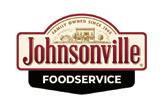









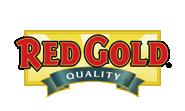






















Join us
two days of informative sessions, expert speakers, and networking opportunities. Discover the latest industry trends, gain insights into customer behavior, and learn about cutting-edge technology that can help take your business to
next level. Don't miss out on this exciting opportunity to connect with fellow industry professionals and gain a competitive edge in the ever-changing world of full-service restaurants. Register now and secure your spot at the QSR Evolution Conference— the must-attend event of the year! QSREVOLUTIONCONFERENCE.COM SCAN FOR MORE INFORMATION CO-LOCATED WITH: REGISTER TODAY! JOIN THE QUICK-SERVICE EVOLUTION
for
the
SEPTEMBER 4–5, 2024 SILVER SPONSORS: FOUNDING SPONSOR: DIAMOND SPONSOR: GOLD SPONSORS:
Tackling Franchisee Bankruptcy
Quick-service operators are facing plenty of challenges with their economic models, and experts don’t see the headwinds ending anytime soon.
BY SAM DANLEY

Burger King, Popeyes, McDonald’s, Wendy’s—those are just some of the chains that saw multi-unit operators go belly up last year. And the trend has bled into 2024. Each case has its own unique set of triggers, but collectively, the rising tide of franchisee bankruptcies points to an array of challenges facing the industry.
There’s the surging costs of ingredients and labor along with stagnant or dwindling foot traffic. Not to mention a general sense of “doom and gloom” from consumers when it comes to where the economy is headed, says Chris Desiderio, counsel in Nixon Peabody’s corporate restructuring and bankruptcy group.
Another factor at play is the move from city centers and the exodus of office workers from downtown business districts.
“I think that’s been more sustained than people envisioned,” Desiderio says. “Granted, people are pushing back, but occupancy rates are still low. You have landlords that are now in default as a result of lower tenancy rates, and they’re in a harder position to be able to work with restaurants.”
In short, franchisees are facing plenty of challenges with their
economic models.
“There’s a lot of things hitting at once, and I don’t think we’ve seen the end of it,” Desiderio says. “I don’t see the headwinds ending anytime soon. I don’t think they ramp up. I think it’s just going to be a ‘put your head down and grind it out’ type of process. It’s not like interest rates are all of the sudden going to double and everything starts collapsing, but it’s going to be a challenging couple of years.”
There are two primary types of bankruptcies. There’s Chapter 7, which is a liquidation, and Chapter 11, which is a reorganization. A lot of the stigma attached to bankruptcy comes from the former. But the reality is that the vast majority of corporate bankruptcies fall into the second camp. Every airline you’ve ever flown has been through it, Desiderio says. Most hospitals in the country have done it, too. It’s simply a tool that can be used to deleverage a balance sheet in order to pave the way to a successful business going forward.
The biggest hurdle can sometimes be coming to grips with the fact that a Chapter 11 bankruptcy is something you need to implement.
“Sometimes you just need to do it in order to advance the ball because maintaining the status quo just means self-assured destruction, which makes absolutely no sense,” Desiderio says. “I often get viewed as an undertaker, but I prefer to be more of a surgeon, where we triage the situation and see what the stressors are. Some can be solved in bankruptcy and some can’t.”
Bringing people back to central business districts? The courts can’t do anything about that. Burdensome leases or significant debt problems? Those are things that can be addressed.
“Things like renegotiation of leases, closing unprofitable locations but keeping others open, restructuring your secured debt—that can all be achieved,” Desiderio says. “There are definitely tools available that are not necessarily available outside of bankruptcy court.”
The sooner a franchisee starts thinking about those tools, the better, he adds.
“Margins are getting thinner, things are getting more difficult, and you look at the headwinds of things like minimum wage coming down the pipeline—that’s when you start
DEPARTMENT FRANCHISE FORWARD [CONTINUED ON PAGE 44] ADOBE STOCK PROSTOCK-STUDIOW
42 JULY 2024 | QSR | www.qsrmagazine.com
Chapter 7 and Chapter 11 are the most widely known bankruptcies.

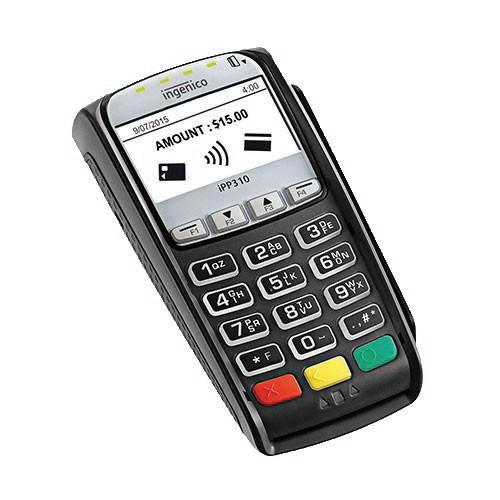


Next Day Funding with weekend settlement TODAY! 866.481.4604 © 2024 North American Bancard, LLC (NAB). All rights reserved. NAB is a registered ISO of BMO Harris Bank N.A., Chicago, IL, Citizens Bank N.A., Providence, RI, The Bancorp Bank, Philadelphia, PA, and First Fresno Bank, Fresno CA. American Express may require separate approval. *Durbin regulated Check Card percentage rate. A per transaction fee will also apply. **Some restrictions apply. This advertisement is sponsored by an ISO of North American Bancard. Apple Pay is a trademark of Apple. WWW.NYNAB.COM STANDARD TERMINAL SMART TERMINAL FREE TERMINAL PLACEMENT OPTIONS Rates As Low As 0.05%* SAVE MONEY TODAY! REDUCE YOUR CREDIT CARD PROCESSING FEES • Send digital receipts: Email or SMS a receipt • Send Invoices • Integrate to Your Point of Sale OPTIONAL PROGRAMS: EDGE: The Best CASH DISCOUNT PROGRAM from North American Bancard Are you ready to get rid of the impact of payment processing costs on your business? With the Edge Cash Discount program you will enjoy the same profit margins from cash payments as you do from non-cash payments. with 4G / Wifi
thinking about it because that’s when most tools are available,” Desiderio says. “When you’re a week away from missing payroll, or the electric company shutting you off, or the landlord serving an eviction notice, you’re kind of too late.”
On the franchisor side, it’s important to keep your eye on the pulse of your system, says Keri McWilliams, another lawyer at Nixon Peabody who co-leads the firm’s franchise and distribution team.
“The more you can be ahead of it—whether it’s providing some financial support, looking at the royalties you charge, or figuring out what tools you have to try to mitigate whatever they might be struggling with—the better,” she says. “If the reason that your franchisees are struggling is that so many of them are located in city centers, maybe you encourage them to have those proactive conversations with their landlord. Maybe you try to make your potential relocation process a little bit easier. It’s going to be different for every system, but thinking about that early and trying to figure out ways to support your franchisees to minimize their distress is only going to be better for the system as a whole.”
There are other ways to support a franchise, Desiderio adds. The last few years have seen many chains undergo “pretty extreme renovation projects” that require a lot of capital expenses.
“Upgrades to kitchens, specific ovens, renovating colors or tables and chairs, those are really expensive,” he says. “Meanwhile, on a
liquidation value basis, they’re worthless. So to force someone who’s already struggling, to say ‘OK, but we want you to put $250,000 or $300,000 in improvements today’ when they can already not afford the payments, now you’re putting an additional debt burden on them. Is it better to keep the old model for a little bit longer to allow them to get on their feet?”
Ultimately, Desiderio says franchisors should have enough tools through the various reporting systems that are available to understand how their operators are doing and know when they might be headed for financial distress.
“The franchisor’s worst nightmare is one of their franchisees files for bankruptcy and allows their store to go into disrepair,” he says. “Now, anyone who goes to that location thinks, ‘this is a failing chain.’ It reflects on the larger system as a whole. You want to avoid that. The problem is, once there’s a filing, the automatic stay is in place, which prevents us from taking certain actions without court approval. With that in mind, if you’re providing the goods being sold and they start falling behind on those payments, or they start falling behind on their franchise fee payments, or you start getting a sense that things are falling into disrepair, a conversation needs to happen immediately. If you wait until the filing, you lose some of your ability to monitor that.”
Sam Danley is the associate editor of QSR. He can be reached at sdanley@wthwmedia.com
FRANCHISE FORWARD / CONTINUED FROM PAGE 42 44 JULY 2024 | QSR | www.qsrmagazine.com
pushed its evolution further by undergoing a full brand refresh, involving improved equipment and streamlined technology platforms. Every store was updated to have the same POS, menu, and price point.
“We’ve always been ahead of the game. We launched on Uber Eats way before the pandemic, and we invested heavily in our existing stores before starting down a large growth path. We’ve done three remodels, including our original location,” Conerly says. “When we decided to work on opening on a larger scale, we made sure we streamlined our equipment, our technology, and updated our recipes and operations to ensure we had a certain level of consistency first.”
When guests outside of Oklahoma City began to show interest in the brand, Conerly listened. He applied his decade-long experience in franchising to build a franchise program for Old School Bagel, which launched in late April. Over 15 months, he opened eight stores, optimizing the model in terms of site selection, unit footprint, branding, store design, preferred vendors, and equipment packages.
He experimented with different scenarios to find the right model: unique spaces, drive-thru, standalone, and in-line.
Conerly imagined what it would look like for the chain to move into a larger or smaller market, all with the idea of going through everything a franchisee could think of before the fact.
Conerly is looking for both single and multi-unit franchisees who are passionate about their communities and serving others.
The brand’s first focus is to award franchises within driving distance of Oklahoma City, in states including Texas, Kansas, Missouri, and Arkansas. Although there’s been interest from operators coast to coast, Conerly decided early on that he didn’t want to expand Old School Bagels’s footprint at a rapid scale.
“We’re going to focus on the surrounding states first … and move operators into an area we can easily support without stressing our logistics or distribution. There’s plenty of opportunity centered around Oklahoma City, and we don’t see [expanding further] as a proper strategy right now,” Conerly says.
tion process was strenuous, but she brought her daughter along with her every step of the way. She learned about the struggles to find a unit location in a post-COVID landscape.
“I want my first store to be open by the end of summer … I know I’ll find a place. I’ll fall into the right place at the right time, and that’s how my life has always worked,” Lott says. “Take my mother and daughter for example. See how perfect they are for this?”
Although this is Lott’s first foray into franchising, and the hospitality industry in general, she says she is not foreign to being responsible for people and initiatives. Her experience as a mother, teacher, and instructional leader will help her hold the delicate balance between nurturing a concept and running a business. But she’s still improving her professional development to prepare herself for joining the spotlight.
“Zach and Jonny had me go through a five-week long class from the McClaskey Excellence Institute, and it takes away any fears on the front end because we’re all on the same page,” Lott explains. “I don’t have to worry about my leadership style. It’s trained to excellence, and although I’m stepping out on my own, it’s more fun because it’s a committee of me. I’m doing something for myself, and I get the credit for it.”
Once open, she plans on partnering with local theater groups in San Diego and hiring out of the same community college school district she taught in for decades. In a way, doing this brings her life full circle. Lott plans on growing past one store in the future but is more focused on making an impact in her community first and growing her knowledge in the industry.
“I think as women, we can’t show any weakness or lack of knowledge because we’re already in a position where people are looking at us a little side-eyed,” Lott shares. “But we fix this by putting ourselves in communities where mistakes are OK. With Fransmart and Schmackary’s, I feel safe to ask questions. I’m acknowledging that I don’t know everything, but I’m building a community where I’m not relying on people waiting for me to fail. I’m surrounding myself with people who are going to make sure I don’t.”
For a parent company, like FSC, he stresses the organization needs to be in good shape with current brands. Acquiring another brand likely isn’t going to fill a hole that’s already there. “You should have bandwidth within your existing team to absorb the new brand,” Elliott says. “It’s best if you already have systems and processes in place that can be shared with the acquired brand for ease of integration.”
And for a concept hoping to find a buyer, in the broadest sense, he notes, “investors like unique, scalable concepts with compelling value propositions. Investors are looking at whether the concept has high-quality food and accessible pricing. We look at AUV and comp sales trends to evaluate whether the concept is showing positive trends.”
“If they are a franchised group, investors will want to see your pipeline—how believable is it?” Elliott adds. “Do you have systems in place to control food and labor costs? Bottom line is: to be attractive to a buyer, you need to have a unique selling proposition, demonstrated growth with your systems, processes, and financials buttoned up.”
Schatzberg’s Branded Hospitality Ventures pays close attention to track records. Has the operator seen success and worked with it as well? In other terms, even if they have an emerging concept, it helps to have witnessed expansion somewhere else. It’s not as exciting to Schatzberg if somebody approaches the company with the notion they hadn’t thought about growth previously. He’d rather they understand what they want to do and how they want to get there. They’re just seeking the capital and partnership to make that happen. “We’re looking for small footprints, lower CapEx, and a good AUVs,” he says. “You have to have a couple of stores. We’re looking for $1 million, $1.5 million, at least, on the average-unit volume. And like I said, we love success in the past. Even if it wasn’t in the restaurant space. Entrepreneurs who have had success, that line of sight. … Then all of sudden you’re like how did this guy assemble this dream team? And so that’s the kind of stuff that we like to get involved in. And we’re minority shareholders and we just look to help that growth.”
Danny
QSR
at dklein@wtwhmedia.com INVEST AND BE INVESTED IN/ CONTINUED FROM PAGE 40 WOMEN IN LEADERSHIP / CONTINUED FROM PAGE 16
Klein is the editorial director of
and FSR. He can be reached
ONES TO WATCH / CONTINUED FROM PAGE 14
Satyne Doner is a staff writer for QSR. She can be reached at sdoner@ wthwmedia.com
Satyne Doner is a staff writer for QSR. She can be reached at sdoner@ wthwmedia.com www.qsrmagazine.com | QSR | JULY 2024 45
START TO FINISH
Geoff Henry
President GONG cha AMERICAS
What was your very first job? I always had an entrepreneurial spirit and began mowing lawns for a lot of neighbors when I was 12. I received my first real paycheck as a stock boy for a neighborhood beer/wine shop in NJ (if you don’t count my time as a kid model for Colgate Toothpaste and other brands).
What’s your favorite menu item at Gong cha? Green Tea with Honey and coconut jellies.
What’s your favorite thing to drink aside from bubble tea? I do love beverages and staying hydrated. Still love having an ice-cold Coke at least once a week; and Old Fashioned on weekends.
Who inspires you as a leader? I’ve been influenced by a lot of great leaders. I hold in high regard leaders who have consistently delivered outstanding results.
Coach K (Mike Krzyzewski) is someone I’ve always admired.
What’s the best piece of advice that other restaurant executives should hear? In franchising, we can all prosper if we can get our incentives aligned to propel sustainable growth. For me personally, when I have to deal with a dispute or conflict, I start by putting myself in the other person’s shoes.
What are some of your interests outside of work?
Spending time with my family first and foremost! I enjoy cycling and triathlons too, along with skiing and golf time, time permitting.

Ilike to think my career in the beverage industry really kicked off with my first job as stock boy for my neighborhood beer and wine shop in New Jersey. Over the last 20 years, I’ve seen the evolution of the industry firsthand—including the tremendous growth of the tea/bubble tea market in the U.S.—and have had the privilege of leading incredible teams at Jamba, Coca-Cola, Colgate, Dasani, Dunkin’ bottled coffee, and Gold Peak and Honest teas.
Prior to Gong cha, I was the president of Jamba where I successfully integrated the company into Focus Brands (now GoTo Foods)and led its digital transformation. Before Jamba, I spent 12 years with The Coca-Cola Company, where I was the General Manager and VP of Brand Marketing for the US tea and coffee business. I helped transform Coca-Cola’s tea portfolio to capture the No. 2 market share position, while also pioneering the company’s entrance into the ready-to-drink coffee category. In 2023, I joined Gong cha as the president of the Americas region,
which includes 400 locations in the territory, and 225 in the U.S. We have achieved a remarkable 19 percent, year-over-year growth in U.S. store count, and clinched the No. 1 position in the Tea category on Entrepreneur magazine’s prestigious Franchise 500 list for the third consecutive year. Gong cha was also honored as the category winner of Top Food & Beverage Franchises at the 2023 Global Franchise Awards.
These accomplishments are a reflection of Gong cha’s rapid growth trajectory, positioning as the world’s premier bubble tea brand, as well as the enormous growth of the overall category. We have a highly engaged consumer fan-base that is passionate about the quality and freshness of our teas and feels a connection to the brand through the social media presence we’ve worked to cultivate over the past several years. Additionally, bubble tea is highly customizable, and our primary customer base of Millennials and Gen Z-ers often view their order as a form of individuality and self-expression.
BACK PAGE
GONG cha AMERICAS 46 JULY 2024 | QSR | www.qsrmagazine.com

Restaurant Equipment & Technology
Old wisdom has noted that the restaurant industry was slow to adapt to certain technologies. The digitization of, well, everything was a slow and steady process playing out during the 2000s and 2010s. New equipment, technology, and digital solutions were rolled out fast and furious, all with the aim of helping restaurants become more efficient.
48 DSA SIGNAGE 50 LOOMIS
ADOBE STOCK KINWUN JULY / 2024 52 NOMAD GO 54 R.F. TECHNOLOGIES, INC. 56 RESTAURANT TECHNOLOGIES 58 TAYLOR COMPANY 60 UPM RAFLATAC 62 WATCHFIRE RESTAURANT EQUIPMENT & TECHNOLOGY | JULY 2024 47
The Future of Drive-Thru Signage Technology and How It Affects Revenue
How fast-casual dining is continuing to think of ways to improve efficiency
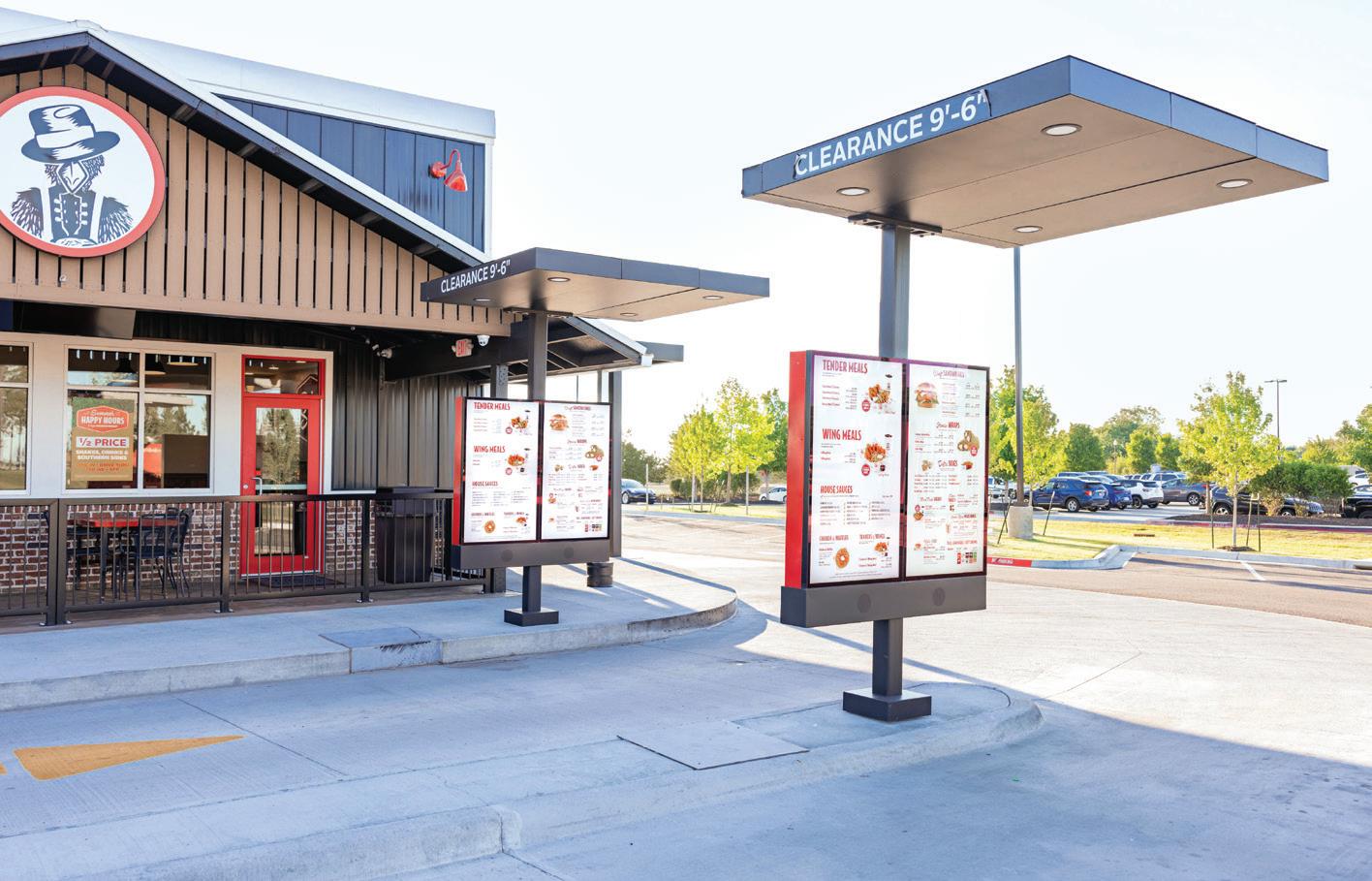
With off-premises dining driving revenue in the quickservice segment, state-of-the-art signage is emerging as a crucial solution for drive thrus and pickup areas. Poor traffic flow and inconsistent branding rank among the biggest front-of-house restaurant design challenges. Effective signage keeps traffic moving for faster service and reinforces branding through easy-to-read, well-organized, and clearly visible signs.
In 2024, more operators are investing in upgrading or adding drive thrus and walk-up windows, as well as tools to enhance offpremises dining. “The key today is seconds matter, and that is everyone’s mantra,” says Robert Creasy, vice president of business development for DSA Signage. With 70–80 percent of their business coming from drive-thru, online, and delivery orders, managing high volumes efficiently has become paramount.
Today, the focus is on balancing throughput, speed, efficiency, customer service, and communication with customers. Creasy highlights that operators are constantly planning for future needs. “Drive-thru renovations used to be every 10 years, but now these are happening every three–five years due to new technology and the desire for more lanes.”
This evolution is driving the demand for both static and digital signage, accommodating multiple lanes and separate pickup areas. Operators must also balance these spaces with parking to avoid customer confusion and safety hazards. The need for dynamic digital menuboards is increasing as menu prices fluctuate. Digital signage allows for quick and easy updates to food offerings and prices.
“The ability to quickly change menu pricing is the biggest selling point for digital signage,” Creasy notes. “This adaptability was highlighted as the price of chicken fluctuated widely over the last five years.”
While fluctuating prices influence the need for digital signage, static signage has offered a lower upfront cost.
Large, backlit static and digital menuboards also address visibility issues and function well across various lighting conditions.
“This setup allows operators to feature photos of high-margin items and encourage impulse sales,” Creasy says. “The recommended format is 80 percent pictures and 20 percent text, focusing on revenue-driving items and meal combos.” The choice between static and digital menus can be significant, given their longevity.
“There is a cost justification for digital displays versus continuously reprinting a menu board,” Creasy says. “Static signage, meanwhile, offers a more affordable option that can provide similar benefits.”
With so many changes happening to the market right now like fighting the cost of inflation prices and increasing wages of workers across the country it’s apparent that the need for more and more automation and digitalization will be developing and getting more and more impressive. Like many of the European fastfood chains have already adopted, self-service kiosks and artificial intelligent menuboards are expected to keep expanding across America to help with the flow of traffic and off-setting costs. RET

SPONSORED BY DSA SIGNAGE
Learn more about ways to improve your signage capabilities with DSA Signage. DSA SIGNAGE SmartChain Digital Signage 48 JULY 2024 | RESTAURANT EQUIPMENT & TECHNOLOGY



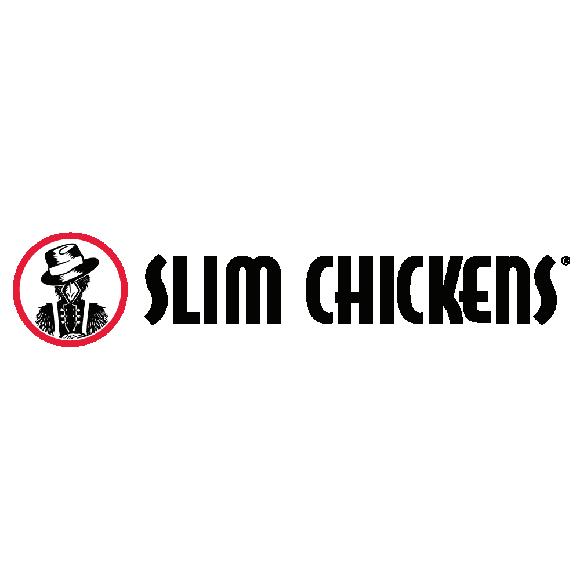


BUILD YOUR OWN Drive-Thru Drive-Thru Drive-Thru 1 1 1 Pick Your Menu Boards Static Digital Hybrid 2 2 2 Pick Your Size Single Double Triple Custom 3 3 3 Top It Off Fresh Additions Order Point Additional Wing Canopy Color Black Custom 4 4 4 On The Side Clearance Bar Directional Sign Bollard Speaker Post We design and manufacture unique static & digital drive-thru solutions BRIGHTEN YOUR BRAND 866-261-0317 www.dsasignage.com dsasignage
How the Biggest Fast Food Empires Handle Their Cash
The simple strategy big brands are using to save hours of payroll every week.
For fast food chains, where speed is king, cash handling can be tricky. Common issues faced by quick-service restaurants include human error, theft, robbery, high labor costs, and more. But industry giants like Taco Bell, Papa John’s, and Whataburger have a trick up their sleeves.
PRODUCTIVITY SOARS AT TACO BELL
Family Foods Inc., operating 19 Taco Bell locations, had managers spending two and a half hours daily on cash-related tasks. CFO Waylon Dallas sought out a solution, installing Loomis’ SafePoint smart safe solution in 10 locations in the beginning of the partnership—later expanding to all 19 stores.
SafePoint is a cash management solution offered by Loomis that streamlines the process for businesses. It typically involves secure smart safes, armored cash collection, and an online reporting system.
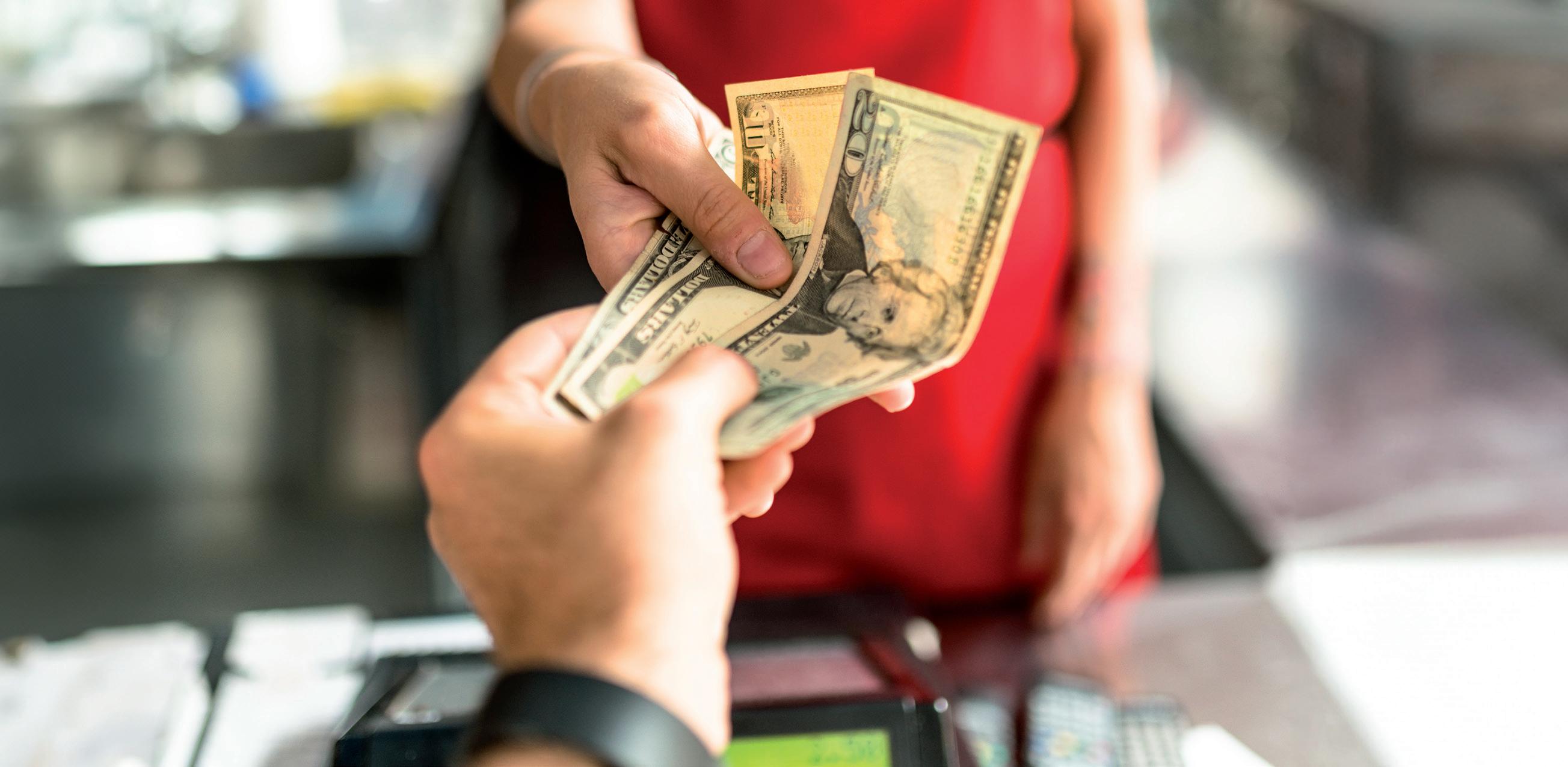
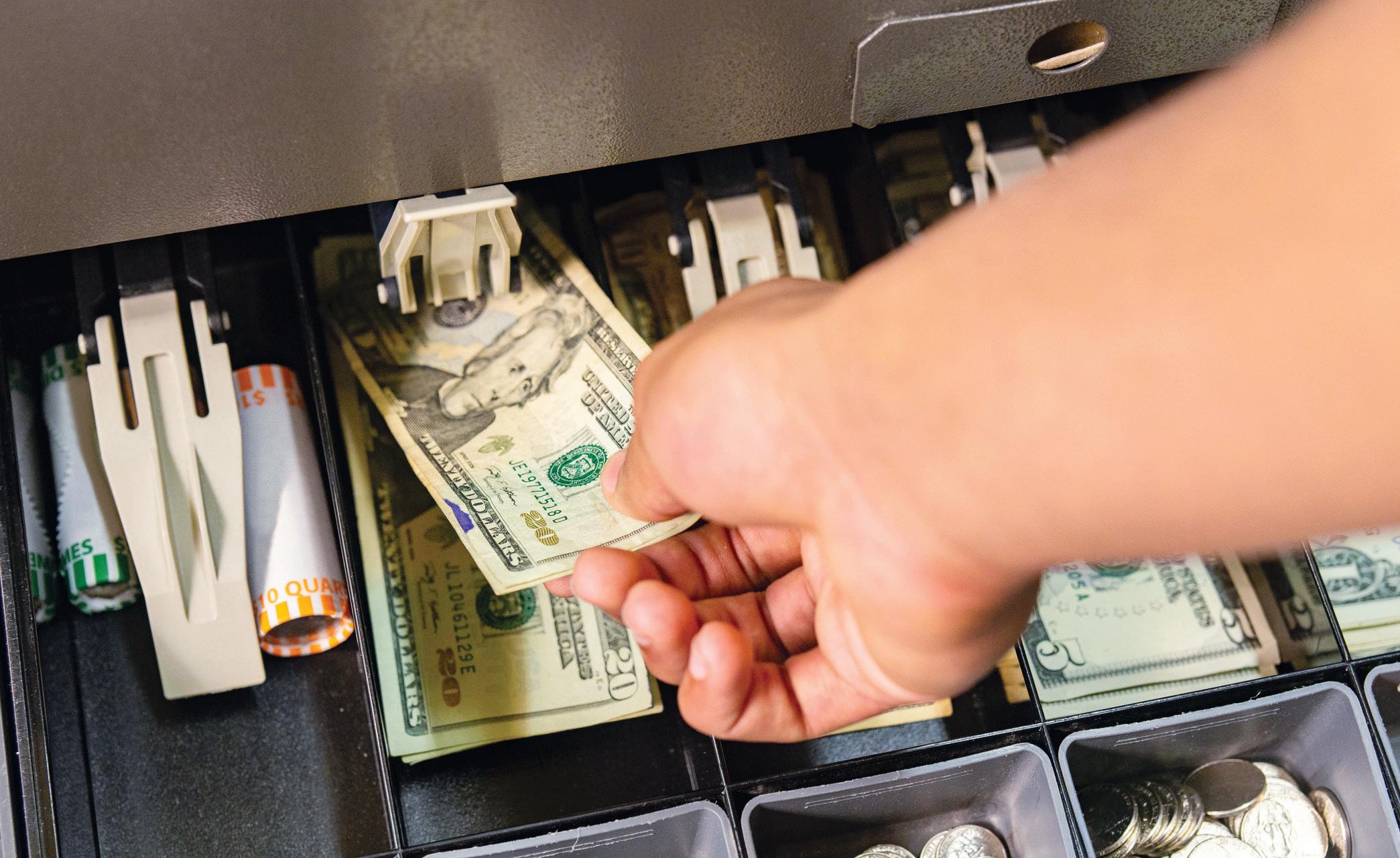
“Our on-site managers have greatly increased productivity via the elimination of their absence to make bank deposits, as well as the amount of time spent counting money,” Dallas says. Managerial cash handling responsibilities were reduced to less than 30 minutes per day, per store.
PAPA JOHN’S CONSOLIDATES BANK ACCOUNTS
Papa John’s struggled with managing over 600 bank accounts, posing security risks and administrative challenges.
“Loomis was the name we kept hearing of,” says Amy Anne Turnage, senior director of treasury at Papa John’s.
SafePoint saved Papa John’s over three and a half hours per day by eliminating daily bank trips and bi-weekly change pickups. Cash validation and deposit prep times were also drastically reduced.
“We feel like we far and away accomplished our objective of improving employee safety,” Turnage says.
WHATABURGER SAVES ON LABOR COSTS
Whataburger, operating hundreds of locations, also struggled
with daily bank runs. Ruben Olivas, director of asset protection at Whataburger, partnered with Loomis to introduce smart safes across the burger franchise’s Texas locations. He estimated that each restaurant saved 45–50 hours per week post-implementation.
Olivas calls it the “fastest, most effective project at the organization to this day.” The franchise experienced bank-run related time savings and a decrease in robberies.
A PATTERN OF IMPACT
McKay Barnes, executive vice president of business development at Loomis, has seen the benefits of SafePoint firsthand.
“SafePoint takes the cash out of employees’ hands,” Barnes says. “It helps give visibility, and more importantly, it can get your money into the bank quicker, giving you more liquidity and the ability to do more with your cash and your funds for your operation.”
SafePoint has proven to be a game-changer for quick-service restaurants. By automating cash handling, these fast-food giants have improved efficiency, enhanced security, and provided their employees with a safer, more productive work environment. RET
LOOMIS ISTOCK.COM / FERTNIG
.
To learn more, visit loomis.us/restaurants
SPONSORED BY LOOMIS 50 JULY 2024 | RESTAURANT EQUIPMENT & TECHNOLOGY

CASH HANDLING HEADACHES CURING
SafePoint—The Solution to Operational Pains
Manual cash handling is not only timeconsuming but also leaves your business vulnerable to theft and human error.
SafePoint by Loomis is here to alleviate your operational pains. Our smart safes and cash recyclers offer a secure, efficient way to manage your cash, so you can focus on what matters most—growing your business. Plus, with features like provisional credit, you could have access to your funds overnight.

Save on labor and training costs.
Reduce the risk of internal theft and external threat.

Gain real-time visibility into your cash flow.
Eliminate the need for daily trips to the bank.
Partner with cash handling experts.

2500 CityWest Blvd., Suite 2300. Houston, TX 77042 www.loomis.us 713-435-6700
Download the Cash Handling Comparison Guide
Why Manual Inventory Counts Are a Thing of the Past
Fast and accurate mobile AI computer vision counts improve efficiency while unlocking supply chain automation.
As a bustling quick-service restaurant hummed with activity from the dinner rush, Sarah, a dedicated worker, was summoned to the backroom for the daily inventory count. Minutes ticked by as she painstakingly tallied items equipped with only a pencil and checklist. She occasionally returned to the front to help customers. Exhausted, Sarah’s mind wandered, double counting and missing items on her list.
After making her way through the entire back-of-house and ensuring to count the make-line, she turned her attention to enter the data into the restaurant’s tracking system. Her shift was ending and counts for ordering were due in just five minutes. There wasn’t time to check for mistakes.
This event plays out across restaurants on a daily basis.
In the fast-paced world of foodservice, managing inventory is a constant challenge. Whether operators are counting inventory for department counts, order placement, make-line checks, preplist building, or confirming distributor deliveries, the traditional method of counting items is riddled with pain points and operational inefficiencies.
The most obvious is that counts are labor intensive. Often times these counts are performed by high value employees like a shift supervisor. Like Sarah, these resources should be focused on managing teams or engaging with guests. Instead, they’re in the backroom counting inventory.
Counts are also prone to inaccuracies that drive up food costs. By overordering products, operators open themselves to increasing food waste. Worse yet, not ordering enough leads to out-ofstocks and lost sales. Add to this the fact that inventory is the least-like job by employees, causing operators to reduce the frequency of counts.
Recognizing these pain points, Nomad Go, the leader in foodservice AI and computer vision, developed an innovative solution that promises to transform inventory management. Its platform, METAshelf, combines computer vision with augmented reality to automate inventory counts with a scalable hand-held solution.
Using METAshelf is like stepping into a futuristic world where inventory management is fast, accurate, and fun. Instead of manual data input, users quickly scan inventory using a device and instantly see data overlaid on top of the real world as they walk their store. This dramatically reduces the time and effort to complete an inventory job, but also delivers nearly perfect accuracy, which is then passed directly to an IMS or ordering system.
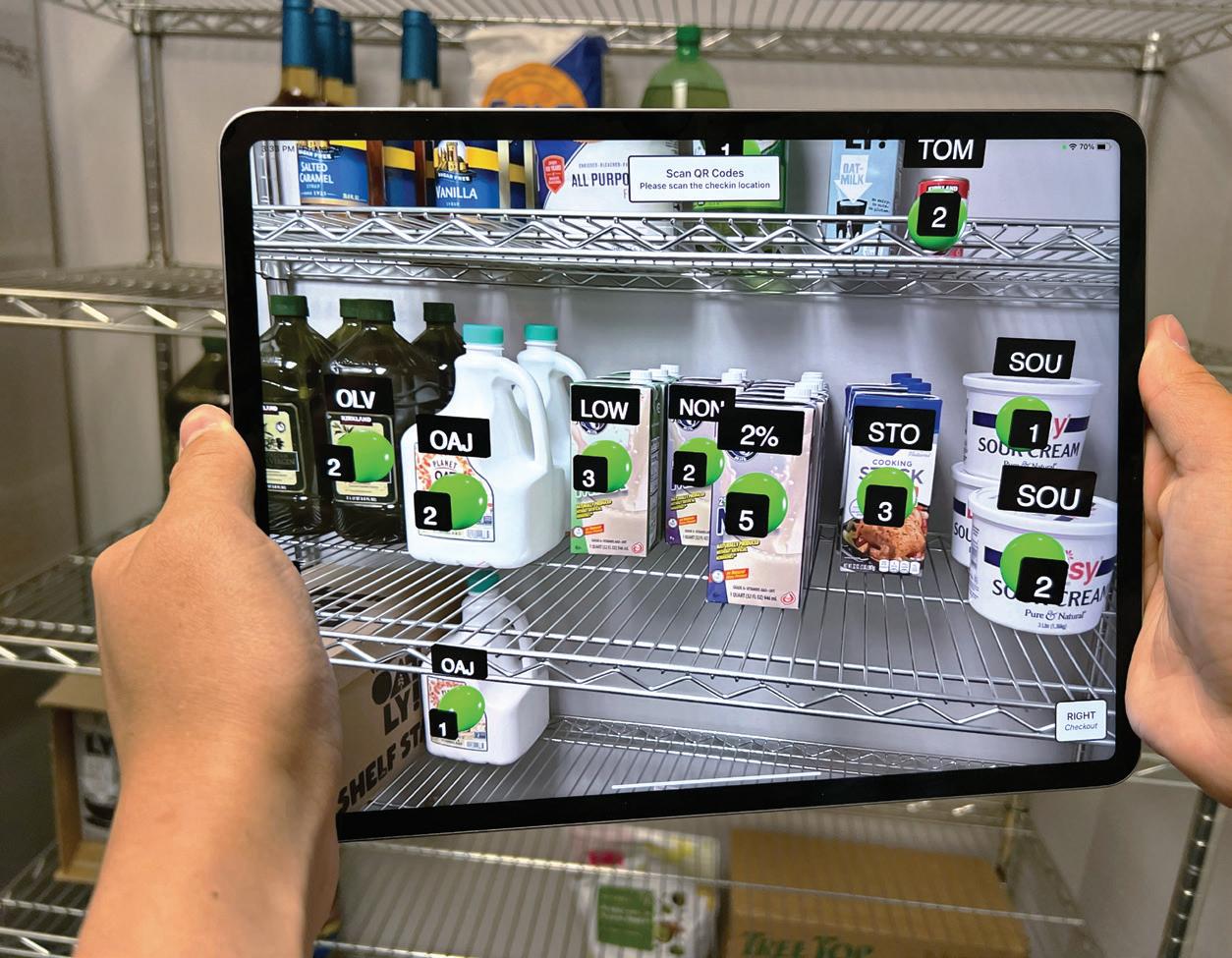
The technology is built to go anywhere. “Foodservice back-of-house environments are notoriously tight and crowded,” says Nomad Go’s CEO, David Greschler. “Whether inventory is stored on shelves in a dark corner or in temperature-controlled refrigerator or walk-in, Nomad Go’s AI can recognize, scan, and capture counts with nothing more than a commodity handheld device.”
METAshelf doesn’t stop with counts; it empowers operators with a suite of features that drive efficiency and optimize operations. With real-time data, restaurant brands gain unparalleled visibility into their supply chain. This visibility unlocks upstream value, enabling predictive forecasts, automated ordering, and just-in-time inventory. RET

SPONSORED BY NOMAD GO
To learn more, visit nomad-go.com. NOMAD GO 52 JULY 2024 | RESTAURANT EQUIPMENT & TECHNOLOGY
Ditch the barcode scanner.

Automate your inventory counts.
Nomad Go’s METAshelf™ combines computer vision and augmented reality to automate stock counts in any foodservice environment, unlocking full supply chain automation. Power automated ordering, drive operational efficiencies and enhance the customer experience.


Computer vision enables st & accurate counts
Inventory management reimagined 10X Faster inventory counts 99% Count accuracy $0 Fixed hardware & installation costs LEARN MORE
NOMAD-GO.COM
Restaurant Tech: Why Operators Need a Full-Service Technology Partner
The right partner keeps the focus on the customer experience, not technical difficulties. / BY R.G. COLLINS
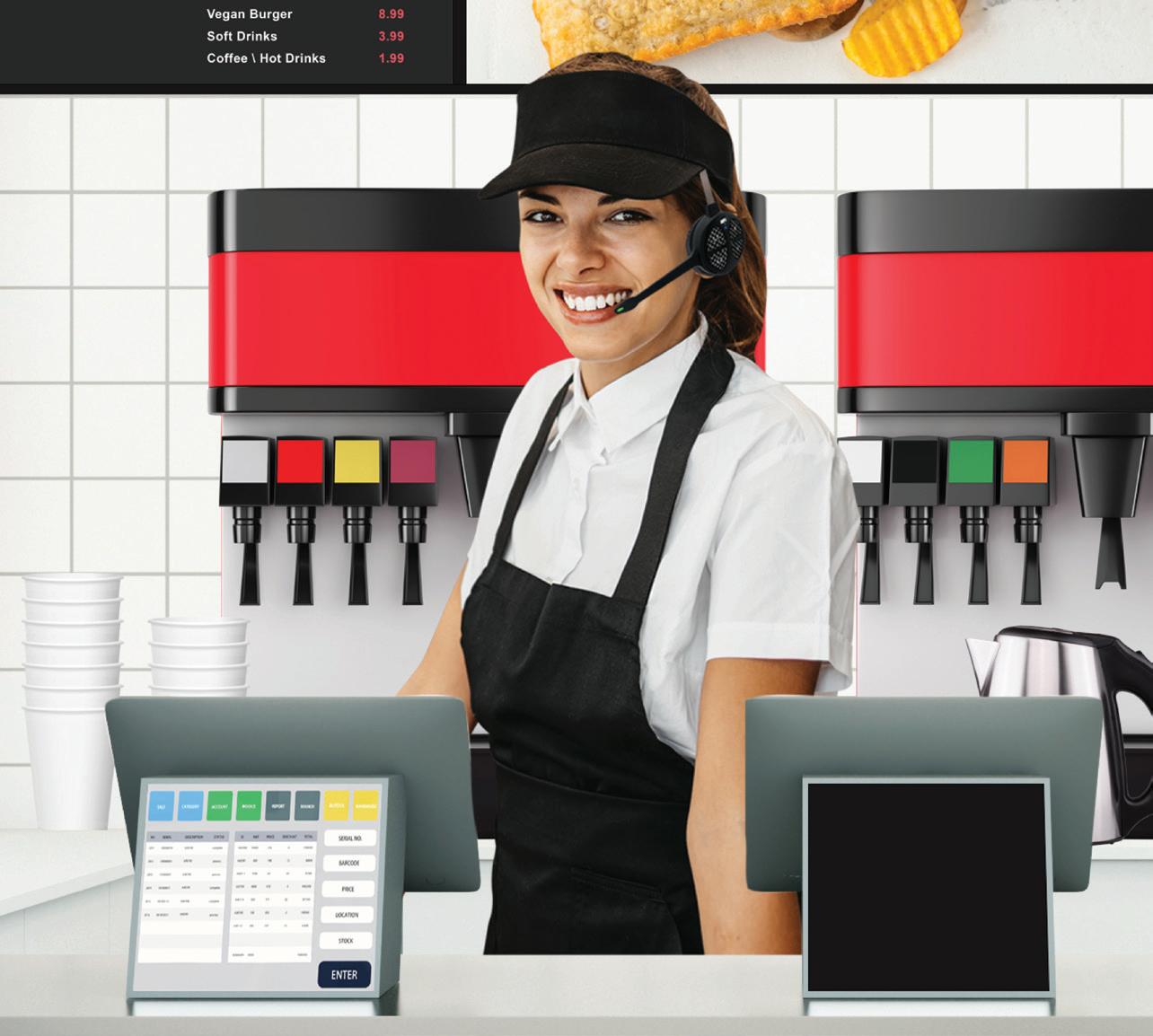
The use of technology in restaurants has evolved far beyond point-of-sale, drive-thru communications, and kitchen displays. IT professionals are now responsible for managing a variety of systems, including digital menuboards, drive-thru timers, and surveillance systems. During the pandemic, self-order tools such as kiosks and mobile order apps became essential. Looking ahead, artificial intelligence and geo-notifications for mobile orders are poised to become the next focus in the effort to increase efficiency. Managing all these systems can be overwhelming. Having the right technology partner can lead to a competitive advantage, keeping restaurants’ focus on the customer.
IT professionals are not only responsible for maintaining the hardware, but also managing software upgrades, subscription services, and compatibility. When a system fails during a busy period, operations are significantly impacted. Busy managers today do
not have the time to diagnose and troubleshoot systems. To alleviate this burden, full-service solutions providers can be a single point of contact. In addition to providing service and repairs, the right partner can offer complete restaurant systems solutions, including proper installation and staff training. Based in Buffalo Grove, Il, R.F. Technologies is such a full-service partner, allowing the staff to focus on providing quality food and operate efficiently.
Scalability and flexibility are key aspects when evaluating available solutions. R.F. Technologies’ CEO Bob Noorian explains, “Technology needs vary over time, so operators need to predict the unpredictable. This means investing in flexible solutions to expand capacity while incorporating new features and scalable systems which communicate not only with existing systems, but also the next-generation as the market evolves. A full-service partner is not only aware of available technologies, it helps shape the future like we do with our Apex drive-thru headset system.”
Commonly, restaurant operators think about solving one specific problem when upgrading or replacing a piece of restaurant technology. The better practice is to think holistically about the restaurant and how the specific piece of tech fits into the overall environment. Here, too, is where the right partner adds value. An example is data traveling between systems, from the POS and the menuboard, to video analytics of a transaction and into subsequent reporting. This interoperability is essential to a comprehensive awareness of restaurant performance. It influences the customer experience and, ultimately, profitability. If data is siloed within disparate systems the complete understanding is often unattainable. A full-service technology partner knows how systems communicate and knows how to extract maximum value from the investment.
Technology is now an integral part of quick-service restaurants, and IT professionals have an essential role in managing various systems. The right partner helps ease the burden of maintaining systems and offers comprehensive solutions to keep restaurants running smoothly. RFT President Joseph Gierut concludes, “Technology evolves rapidly so restaurants need a trusted partner vetting available tools and recommending solutions providing the greatest value to the restaurant operator while minimizing risk and expenditures.” RET

R.F. TECHNOLOGIES, INC. Learn more at rfdrivethru.com/capabilities
SPONSORED BY R.F. TECHNOLOGIES, INC.
54 JULY 2024 | RESTAURANT EQUIPMENT & TECHNOLOGY

Restaurant Technologies Helps “ControlCustomers the Kitchen Chaos”
Automated kitchen solutions can help drive efficiency and cost savings.
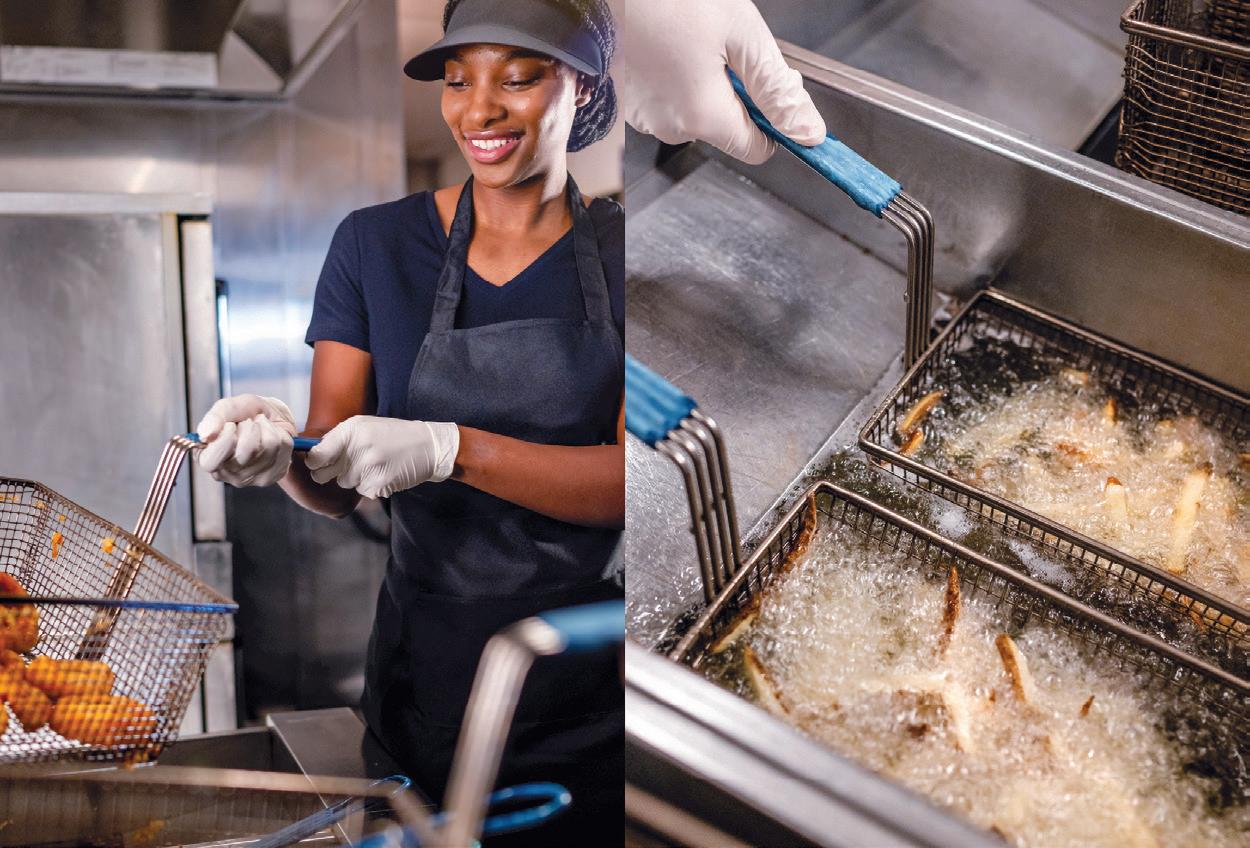
UNLOCK HIDDEN SAVINGS AMIDST RISING LABOR COSTS
As foodservice operating expenses surge nationwide, managing business costs becomes paramount to ensure profitability. The solution lies in uncovering savings that often remain unnoticed. We’ve identified strategies to help build a successful foodservice operation by automating cooking oil processes and flue cleaning that can help reduce expenses such as labor costs and insurance premiums and increase efficiency in commercial kitchens.
SAFETY, LABOR EFFICIENCY, AND EMPLOYEE RETENTION
Managing hot cooking oil is one of the dirtiest and most dangerous jobs in the kitchen. Employees also consider the task one of the most challenging in commercial kitchens. Filtering cooking oil is tedious, and mishandling hot cooking oil can lead to burns, along with slip and fall accidents.
Automated cooking oil management eliminates one of the dirtiest and most dangerous jobs in foodservice. This can improve morale and create a positive work environment while boosting staff retention.
“We had employees who got burned by grease and issues with grease getting all over the place. There’d be oil on the floor, and it
would take forever to clean it. But it was more than that. It was the drums of grease outside and the people who came to pick them up. It was a hassle,” says TJ Ahmed, owner of Spring Valley Jack, LLC, a multibrand franchisee company currently operating five Jack in the Box restaurants in Texas.
Restaurant Technologies’ Total Oil Management® and AutoMist® solutions have received numerous industry awards for enhancing safety and efficiency, including the Buyer’s Edge 2023 Labor Saving Solution of the Year award.
CONTROLLED CLAIMS AND INSURANCE COSTS
Automated oil management reduces the risks of costly accidents such as burns, along with slips and falls from spilled oil. An automated hood and flue system helps keep hoods clean from grease buildup and can help reduce the risk of fires. The reduction in risk through these systems can also lead to a reduction in insurance costs.
SAVINGS IN OIL USAGE AND FOOD QUALITY
Automating oil replacement ensures optimal usage as guesswork is eliminated, preventing wasteful early replacements or poor food quality due to late changes. Customers report substantial savings by maximizing oil life without compromising food quality.
“The fryer filtration monitoring system has helped us to do a better job monitoring the maintenance of our oil,” Lingel says. “Using the oil test kits that Restaurant Technologies supplies and the dashboard, we are able to extend the life of the oil and improve the quality of our fried foods, says Jeff Lingel, Apple American group area manager, the largest Applebee’s franchisee with over 300 Applebee’s Neighborhood Grill and Bar restaurants.
ENHANCED CUSTOMER SATISFACTION
Consistent oil quality translates to consistently delicious menu items, enticing repeat customers and offsetting increased labor expenses. Implementing Total Oil Management and AutoMist is a win-win for your business, staff, and customers. RET

SPONSORED BY RESTAURANT TECHNOLOGIES
Learn more at rti-inc.com. RESTAURANT TECHNOLOGIES 56 JULY 2024 | RESTAURANT EQUIPMENT & TECHNOLOGY


Reduce Risks, Reduce Premiums, Save Money.
safe,
worker’s
reduced,
insurance
stays happy. Save up to 15% on your insurance premiums with Restaurant Technologies solutions. LEARN MORE: WWW.RTI-INC.COM
Risk is part of any business, especially prevalent in the foodservice industry. Restaurant Technologies’ solutions have reduced risk for our customers by simplifying the most dangerous jobs in commercial kitchens for nearly 25 years. From automating cooking oil handling to keeping your hood and flue protected from hazardous grease buildup, we’ve got you covered. Meanwhile, your employees stay
your
comp and fire risk is
and your
carrier
Ensuring Operational Excellence
The key to minimizing downtime and maximizing profits.
In the fast-paced world of foodservice, the importance of quality and reliability in restaurant equipment cannot be overstated. From high-efficiency grills to soft serve freezers, the equipment a restaurant uses plays a pivotal role in its operational success. This is where Taylor Company shines with its comprehensive range of high-performance solutions.
DOWNTIME: THE HIDDEN COST

WHY TAYLOR?

For any restaurant, downtime is more than just an inconvenience; it’s a direct hit to the bottom line. Unplanned equipment failures can lead to lost sales, wasted ingredients, and dissatisfied customers. This is why investing in reliable, high-quality equipment is essential. Taylor Company understands this well, offering robust machines designed to minimize breakdowns and ensure smooth operations. The company’s advanced technology and automated cleaning systems reduce maintenance time and keep machines running efficiently. By preventing such scenarios, Taylor’s equipment contributes to the overall profitability of a restaurant.
THE VALUE OF QUALITY AND SERVICE
Quality equipment not only enhances efficiency but also boosts the overall customer experience. Taylor’s innovative two-sided grills and high-capacity soft serve freezers exemplify this by delivering consistent results even during peak hours. These machines are engineered to handle high volumes, ensuring that customer service remains swift and seamless. Moreover, Taylor’s commitment to service is evident in their extensive support network, which includes factory-trained technicians available 24 hours a day, 7 days a week. This ensures that any issues are promptly addressed, minimizing downtime and keeping operations seamless.
Taylor’s slogan, “Good Things Start Here,” perfectly encapsulates its approach to foodservice equipment. It blends modern engineering with traditional craftsmanship, creating machines that are both durable and easy to use. Taylor offers the ability to purchase service contracts that cover parts and labor, providing restaurant owners with the flexibility and peace of mind they need. These contracts are particularly beneficial in managing long-term costs and ensuring continuous operational efficiency. Additionally, Taylor’s extensive local service coverage, with thousands of certified technicians around the globe, ensures that any issues are swiftly addressed, allowing restaurant owners to focus on what they do best—serving great food. This global network underscores Taylor’s commitment to its customers, providing reliable support no matter where the restaurant is located.
PARTNERING FOR SUCCESS: GOOD THINGS START HERE
For restaurants looking to enhance their operations, choosing Taylor Company means investing in equipment that promises reliability, efficiency, and exceptional support. As the foodservice industry continues to evolve, Taylor remains a trusted partner, helping businesses thrive in a competitive market. The company’s dedication to innovation ensures that its equipment is always at the cutting edge, incorporating the latest technological advancements to meet the needs of modern foodservice environments. Taylor’s reputation is built on decades of experience and a steadfast commitment to quality. By choosing Taylor, restaurant owners are investing in a partnership that supports their business goals. Whether it’s through its high-performance machines, comprehensive service contracts, or extensive support network, Good Things Start Here. With Taylor, restaurants can confidently navigate the challenges of the industry, knowing they have a reliable partner by their side whenever and wherever. RET

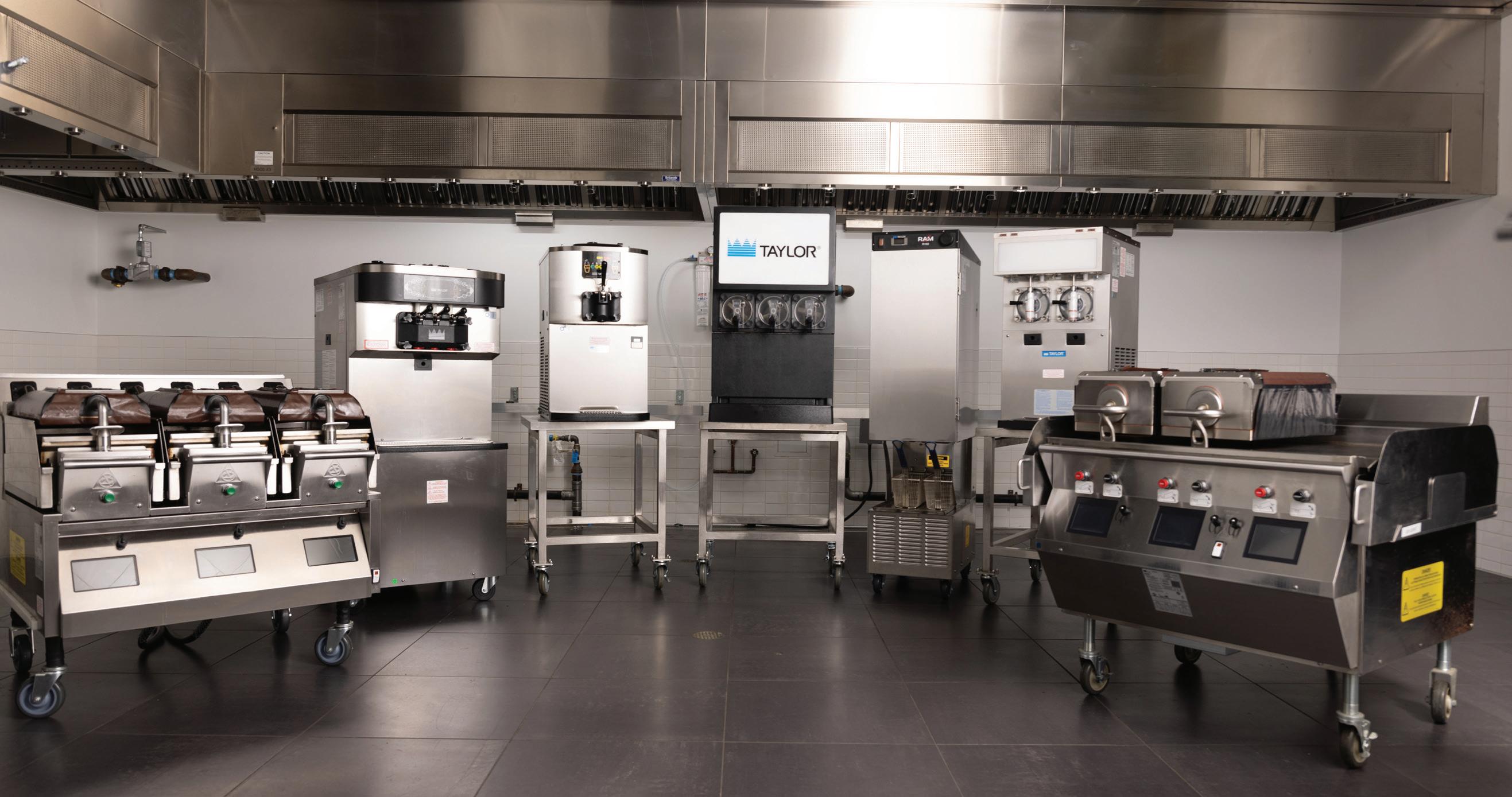
SPONSORED BY TAYLOR COMPANY
For more information about Taylor Company and its range of foodservice equipment, visit taylor-company.com. TAYLOR COMPANY (2) 58 JULY 2024 | RESTAURANT EQUIPMENT & TECHNOLOGY


GOOD THINGS START HERE. With Taylor’s high-quality foodservice equipment and extensive service network, you can focus on what matters most – delighting your customers. Experience the Taylor difference and keep your business thriving. For more information about Taylor Company and their range of foodservice equipment, visit Taylor Company’s website. www.taylor-company.com
Transforming Quick-Service Restaurants with UPM Raflatac
OptiCut Linerless Labels
Unveiling OptiCut technology: performance and sustainability.
Linerless labels have enhanced the quick-service sector by eliminating the need for traditional label backing, thus reducing waste and enhancing sustainability. UPM Raflatac’s OptiCut linerless now gives operators additional benefits, including improved label performance and verified sustainability impact.
Over the last few years, suppliers have had time to innovate and address initial problems with linerfree solutions. Today, operations have options for linerless label material, and the choice is critical because it affects the clarity and readability of the printed label, impacting order accuracy and customer experience. It also ensures the label adheres to various surfaces, especially more sustainable packaging options. Finally, it impacts printer performance and the frequency of label jams encountered by your staff.
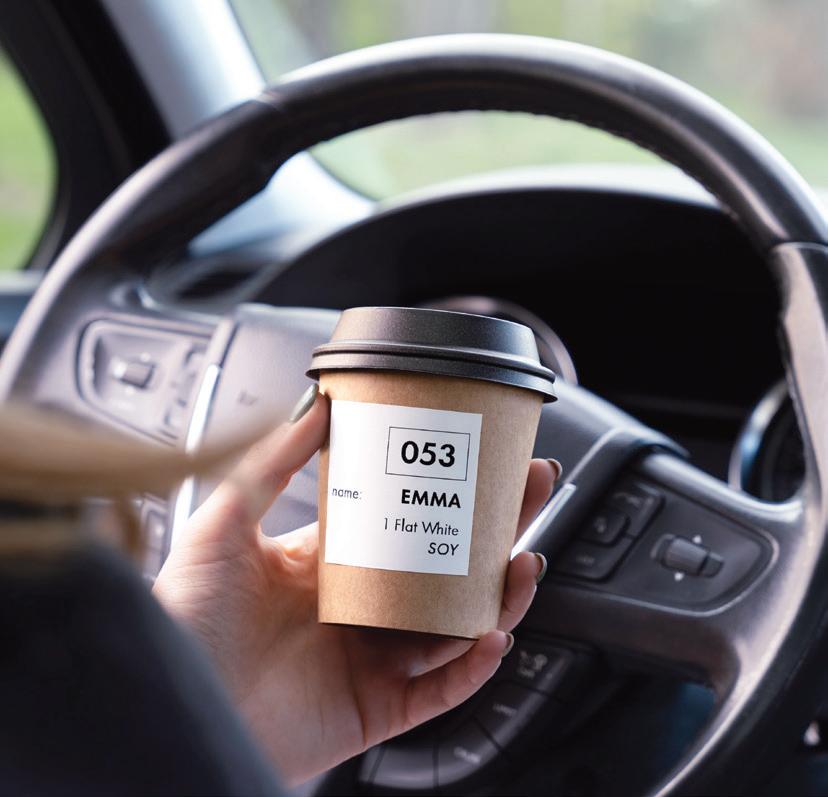

UPM Raflatac developed OptiCut linerless labels using an innovative adhesive formulation that prevents sticking to the cutting blade and leaves little to no residue in the printer. For operators, this means fewer label jams in printers, which is the last thing restaurants need during a lunch rush. As well, UPM Raflatac has worked with OEMs such as Epson to ensure OptiCut is qualified in common liner-free printers, giving restaurant leaders additional confidence that their labeling system functions seamlessly.
In addition, OptiCut gives the flexibility operators need in a restaurant environment. It allows the labels to be stuck, peeled, and re-applied on different surface types. If a restaurant is moving to more sustainable takeout containers or using a variety
of packaging in your restaurant, OptiCut technology ensures the label remains in place until the product reaches the customer. And these labels are BPA-free and Total Phenolfree, ensuring a compliant solution for food packaging.
When it comes to sustainability, UPM Raflatac OptiCut Linerless material originates from well-managed FSC™ certified forests and other controlled sources. And it uses approximately 40 percent less paper than similar lined label materials. But going liner-free with OptiCut does more than reducing material and eliminating liner waste. UPM Raflatac linerless range is certified as a CarbonNeutral® product for the entire life cycle, meaning that the printed labels can be promoted as carbon neutral. UPM Raflatac partners with Climate Impact Partners to ensure that the CarbonNeutral product offering adheres meticulously to its publicly available framework for carbon neutrality, The CarbonNeutral Protocol.
If a restaurant’s current liner-free media is creating business inefficiencies or frustrations, OptiCut may transform its experience, as well as improve its customers’ experience. With the OptiCut solution, operators can ensure their labeling system enhances operational efficiency and maintains clear, accurate labeling, while boosting sustainability.
Author: Marko Tiainen is a manager of new and emerging technologies at UPM Raflatac, a global supplier that offers high-quality self-adhesive paper and film products including label materials, graphics solutions and removable self-adhesive products. RET
SPONSORED BY UPM RAFLATAC
Learn more at upmraflat ac.com. UPM RAFLATAC (2)
60 JULY 2024 | RESTAURANT EQUIPMENT & TECHNOLOGY
BOOST SUSTAINABILITY
AND EFFICIENCY
WITH UPM RAFLATAC OPTICUT ™
LINERLESS LABELS

Benefit from Thermal Linerless Labels with superior print clarity, and reduce downtime of your linerfree printer thanks to less adhesive accumulation.

OEM Tested and Approved
The Crucial Role of Digital Reader Boards in Quick-Service Restaurants
Switching from manual reader
boards to digital signage has major advantages.
For Wendy’s of Bowling Green, an established name in the restaurant industry spanning five states, the shift to digital reader boards wasn’t merely a response to changing times; it was a vital strategic move. Manual reader boards, with their timeconsuming letter arrangements; small, hardto-read text; and limited design capabilities, no longer sufficed in capturing attention amidst increased quick-service competition.
Wendy’s can tailor hiring messages for specific roles, provide application instructions via QR codes, and showcase employee benefits, all aimed at attracting top talent and fostering business expansion. These messages can even be multi-part, enabling Wendy’s to share more details, while still maintaining readability.
“The agility they offer is truly remarkable. Unlike traditional boards, Watchfire’s digital displays allow us to easily rotate messages in real-time.”
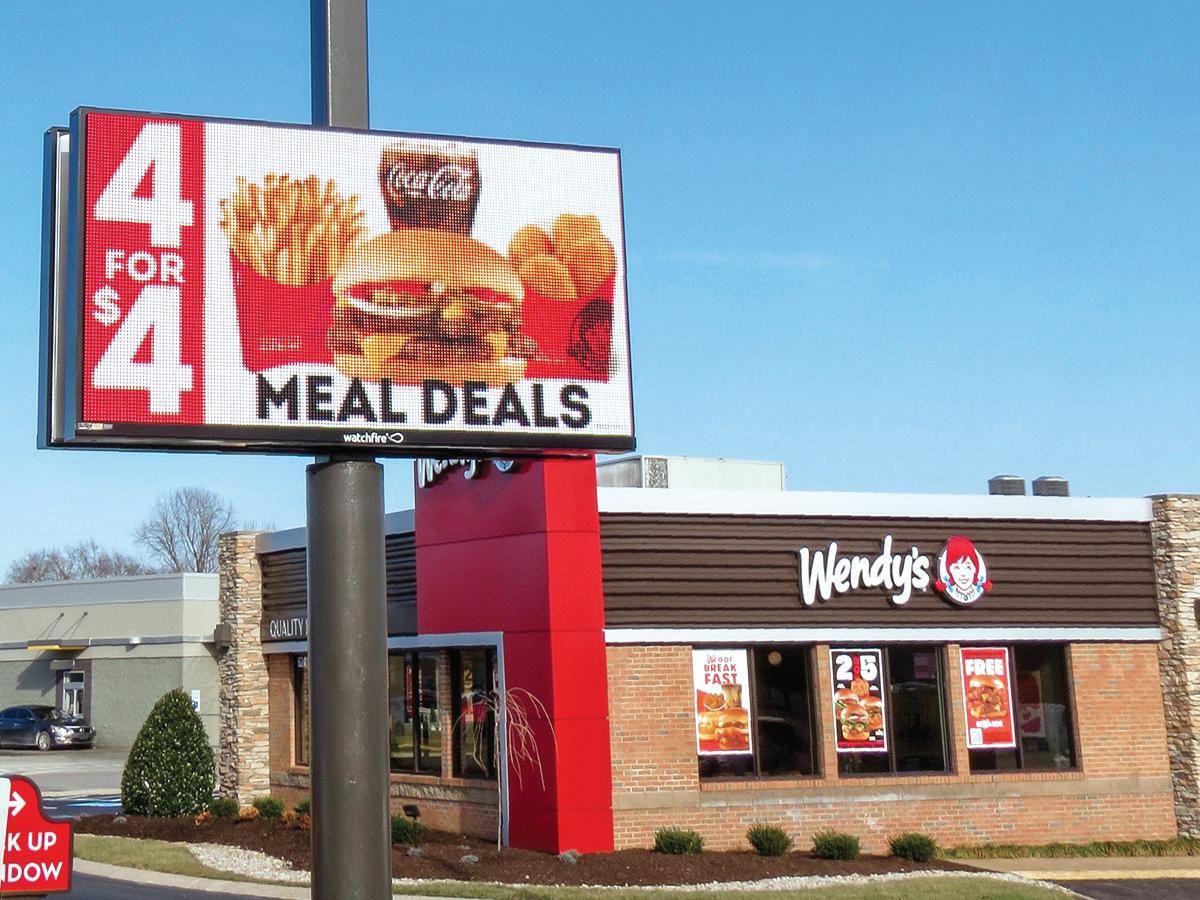
Bayne Million, marketing officer at Wendy’s of Bowling Green, emphasizes the inherent flexibility and dynamic capabilities of digital reader boards as a pivotal advantage. “The agility they offer is truly remarkable. Unlike traditional boards, which tether us to static messages for prolonged periods, Watchfire’s digital displays allow us to easily rotate messages in real-time—whether they’re national campaigns or region-specific—with attention-grabbing graphics and engaging motion.”
In addition to attracting customers, Wendy’s of Bowling Green is capitalizing on the power of Watchfire digital reader boards to offer versatility and drive impact in recruitment messaging.
With Watchfire’s Ignite OPx software, making lastminute updates and creating content is streamlined, allowing for quick adjustments and remote management from a single platform. This convenience and efficiency revolutionize operations, from dayparting content to customizing messages based on location.
Million says, “We can easily promote opening hours and breakfast items in the morning, highlight special offers like discounted kids’ meals during peak traffic times, and endorse late-night drive-thru services to support extended hours. The ability to adapt messages on-the-fly individually, by market, or as a group–is a game-changer for us.”
From a cost perspective, the advantages of digital signage are evident. When compared to traditional reader boards with their letter costs, labor-intensive changes, and static nature, digital displays offer a more economical solution over time. Digital reader boards amplify brand visibility and attract passing motorists, further enhancing their value. Million says, “Locations with the Watchfire digital reader boards are consistently top performers.”
With 135 Wendy’s of Bowling Green locations, the adoption of digital reader boards has been steady, with nearly 15 already operational and more planned for future openings. These digital reader boards not only cut through signage clutter on busy roads but also reinforce brand consistency and deliver quality messaging across markets.
The transition from manual reader boards to digital displays represents more than just a technological upgrade; it’s a strategic investment in staying ahead in today’s competitive market. For Wendy’s and other quick-service restaurants, the benefits are clear: increased visibility, enhanced messaging capabilities, and a platform for driving growth and success in the digital age. RET

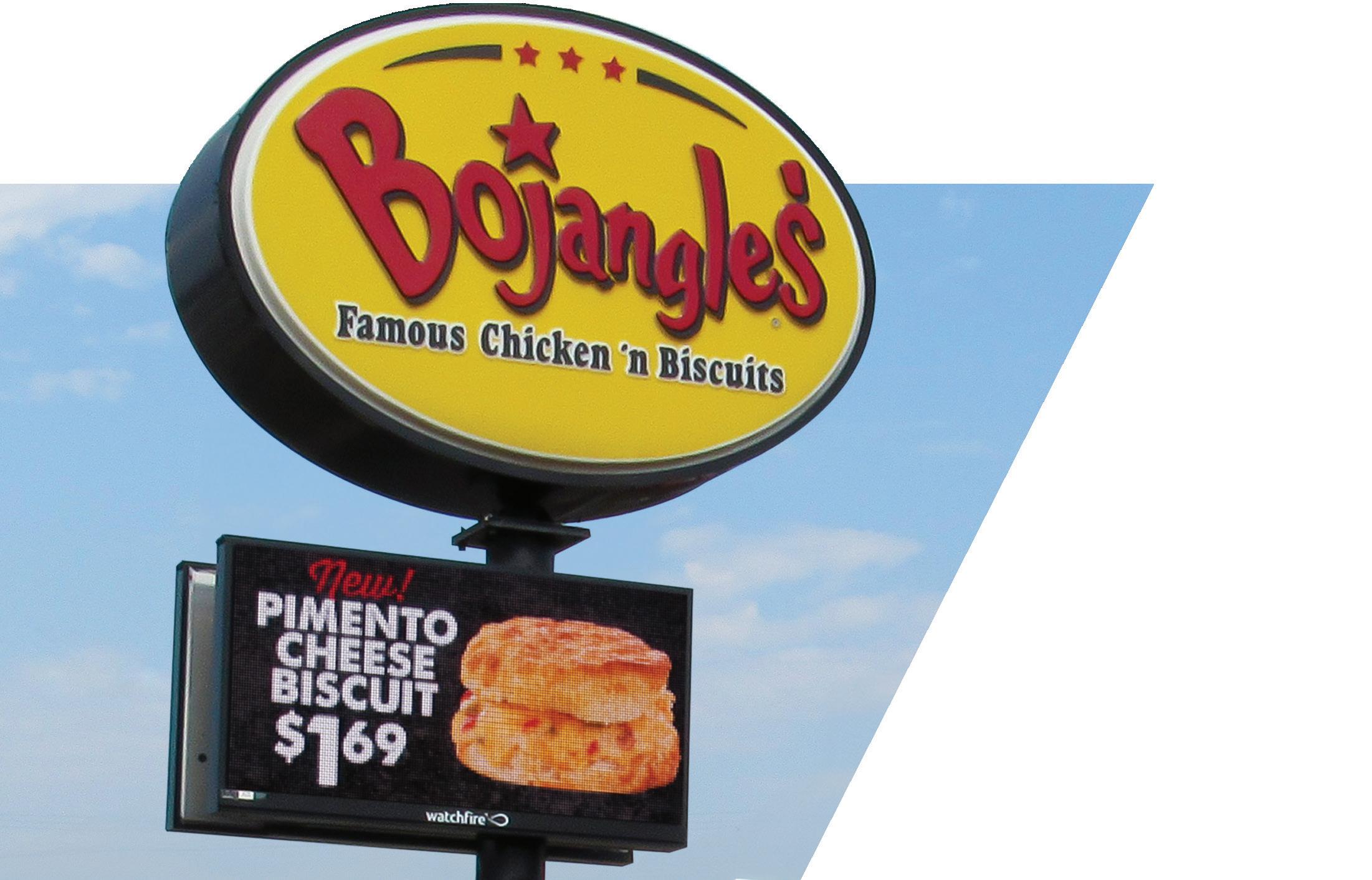
WATCHFIRE SPONSORED BY WATCHFIRE
To learn more, visit watchfiresigns.com.
62 JULY 2024 | RESTAURANT EQUIPMENT & TECHNOLOGY
DIGITAL READER BOARDS. DRIVE TRAFFIC. INCREASE SALES.
Increase your QSR’s foot traffic and boost sales by promoting new menu items, menu specials, and rewards program perks. Display eye-catching, dynamic brand-approved messages that uphold your QSR’s brand standards.
Maintain message flexibility with our Ignite OPx content management software. Ignite OPx allows users to program messages months in advance or make last-minute changes and streamline your sign messaging for one location or many.
Our reputation is built on your digital reader board looking and performing great, not just for one day but for its lifetime.


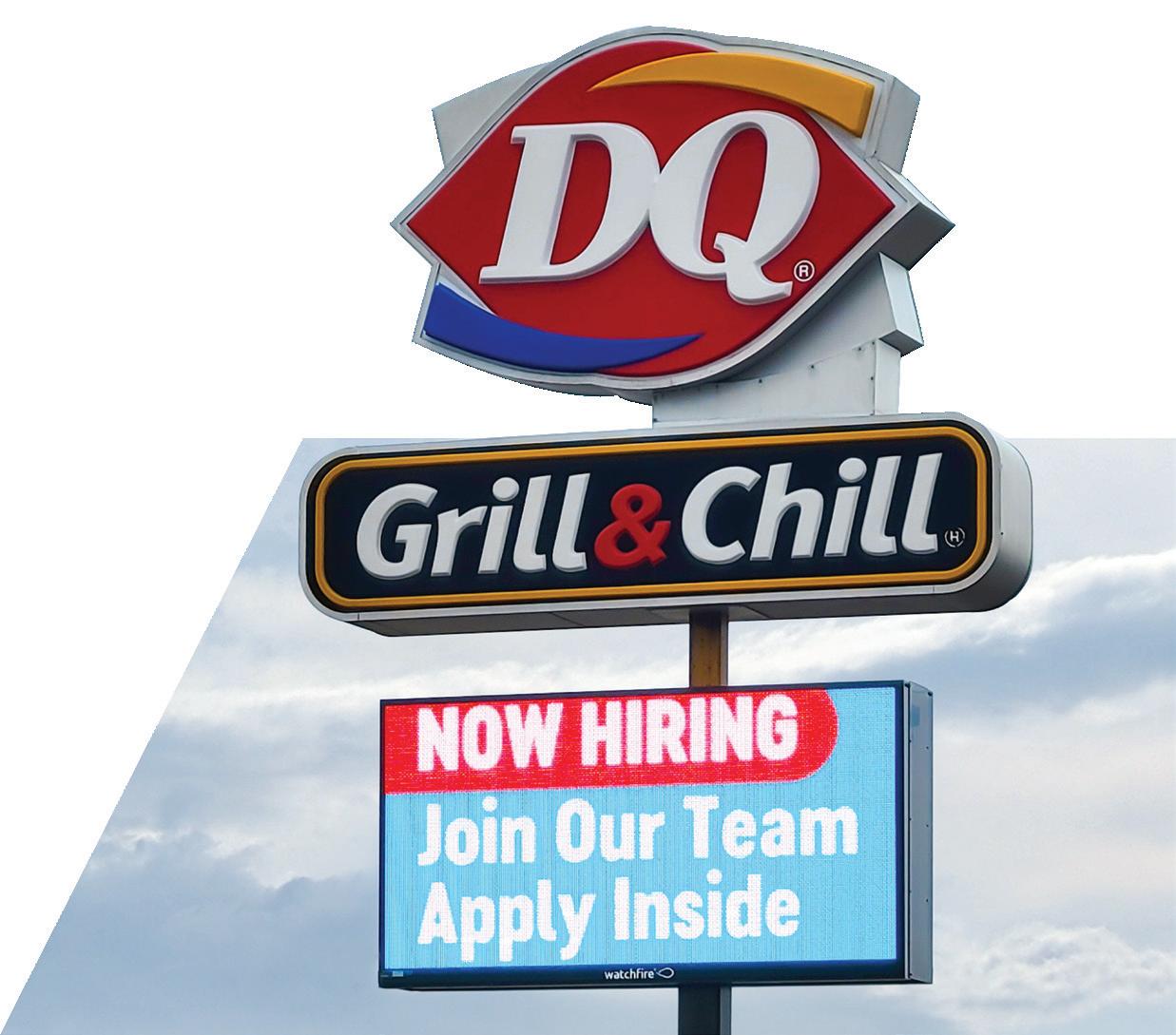


SCAN THIS QR CODE TO VISIT OUR WEBSITE AT WATCHFIRESIGNS.COM/QSRMAGAZINE OR CALL US AT 844-805-8880 TO LEARN MORE ABOUT HOW DIGITAL READER BOARDS CAN DRIVE TRAFFIC TO YOUR QSR LOCATION.


















Anchor Packaging ............................ 37 800-467-3900 | anchorpac.com
Ansira Partners ............................ 12, 13 800-231-8179 | ansira.com
Ferrero Foodservice ......................... 35 800-408-1505 | ferrerofoodservice.com
Frymaster ........................................ 39 800-221-4583 | frymaster.com
Ghirardelli ............... Inside Front Cover 888-402-6262 | ghirardelli.com/professional HME ..................................................
866-577-6721 | hme.com/nexeo i3 International .................................
866-840-0004 | i3international.com Jersey Mikes .................................... 29 732-292-8272 | jerseymikes.com
| KitchenBrains.com
| NYNAB.com
15
RF
RF Technologies............................... 64
taskmaverick ...................... Back Cover taskmaverick.com The
40 peachcobblerfactory.com Valvoline ........................................... 3 859-357-7303 | viocfranchise.com Vantage Food ................................... 17 info@vantagegrp.com Vitamix ............................................ 25 800-437-4654
vitamix.com/faster Vito Fryfilter ..................................... 31 847-859-0398 | vitofryfilter.com RESTAURANT EQUIPMENT & TECHNOLOGY ..47 - 63 DSA Signage ............................ 48, 49 866-261-0317 | dsasignage.com Loomis ...................................... 50, 51 713-435-6700 | loomis.us NomadGo ................................. 52, 53 Nomad-Go.com Restaurant Technologies ........... 56, 57 RTI-inc.com/insurance-savings RF Technologies ........................ 54, 55 800-598-2370 | rfdrivethru.com Taylor Company ........................58, 59 taylor-company.com UPM Raflatac ............................ 60, 61 upmraflatac.com Watchfire Signs .........................62, 63 844-805-8880 | watchfiresigns.com AD INDEX ADOBE STOCK BULLRUN SmartChain www.QSRmagazine.com/smartchain DOWNLOAD OUR FULL RANGE OF SMART CHAIN REPORTS TODAY! These special reports in the pages of QSR help busy restaurant operators understand current trends and sources in a variety of areas vital to your business. SEE THE BIG DOG DIFFERENCE • Fully Customizable Packages • Professional Design ServicesLeave the camera placement to us • Big Dog Voice - Integrated drive-thru audio for enhanced security & training • Nationwide Installation Services 800-598-2370 I rfdrivethru.com sales@bigdogsurveillance.com NOW OFFERING Remote System Status Monitoring and Data Analytics Integration! 64 JULY 2024 | QSR | www.qsrmagazine.com
6
Kitchen Brains .......... Inside Back Cover 203-380-3540
NorthAmerican Bancard................... 39 866-481-4604
RF Technologies Apex ........................ 5 800-598-2370 | rfdrivethru.com
Technologies Service .....................11 800-598-2370 | rfdrivethru.com
800-598-2370 | rfdrivethru.com
Peach Cobbler Factory ...............
|

www.KitchenBrains.com | 203.380.3540 Intelligent Commercial Kitchen Automation Food Availability Quality Consistency Waste Reduction Staff Satisfaction Mind the of the Restaurant Middle-of-the-House™ REPORTING&ALERTS PRODUCTIONMANAGEMENT REFRIGERATIONMONITORS COOK&HOLDCONTROLS Temperature Sensors and Monitors with Real-time Alerts Timers and Temperature Controllers, Upgrade Kits, and OEM Controls HACCP Compliance, Proactive Monitoring, and Above Store Reporting Connected Appliances, Predictive Analytics/Forecasting, Enterprise Reporting, and POS Integration
Automated Business Manager
“Taskmaverick has been transformative for us and we're just getting started.”
Gregory, Exec. Director, Newnan, GA
“Taskmaverick is an incredible system. It not only helped managers, but also leaders in managing.”
Miguel, Manager Deerfield, IL

Introduction
See A Live Demo
"My team and I will show you real success stories in a live
"Other Operators need to have this. There is great value to Taskmaverick."
Tony, Owner Operator Willoughby, OH
“Within a few days of activating the system, our store is already cleaner and much more organized.”
Emma, Executive , Griffin, GA

Implementation Get Instant Results
"My team and I will provide you with live support for a quick implementation"

Ongoing Support
You Are Never Alone
"My team and I are always available to ensure your continued success"
taskmaverick.com Scan Here To See It In Action
demo"
Julianna Krauss, Marketing
Gia Abdikamalova, Strategy
Dean Starros, Success




 DANNY KLEIN
DANNY KLEIN











































































































































 / BY DANNY KLEIN
/ BY DANNY KLEIN















































































































